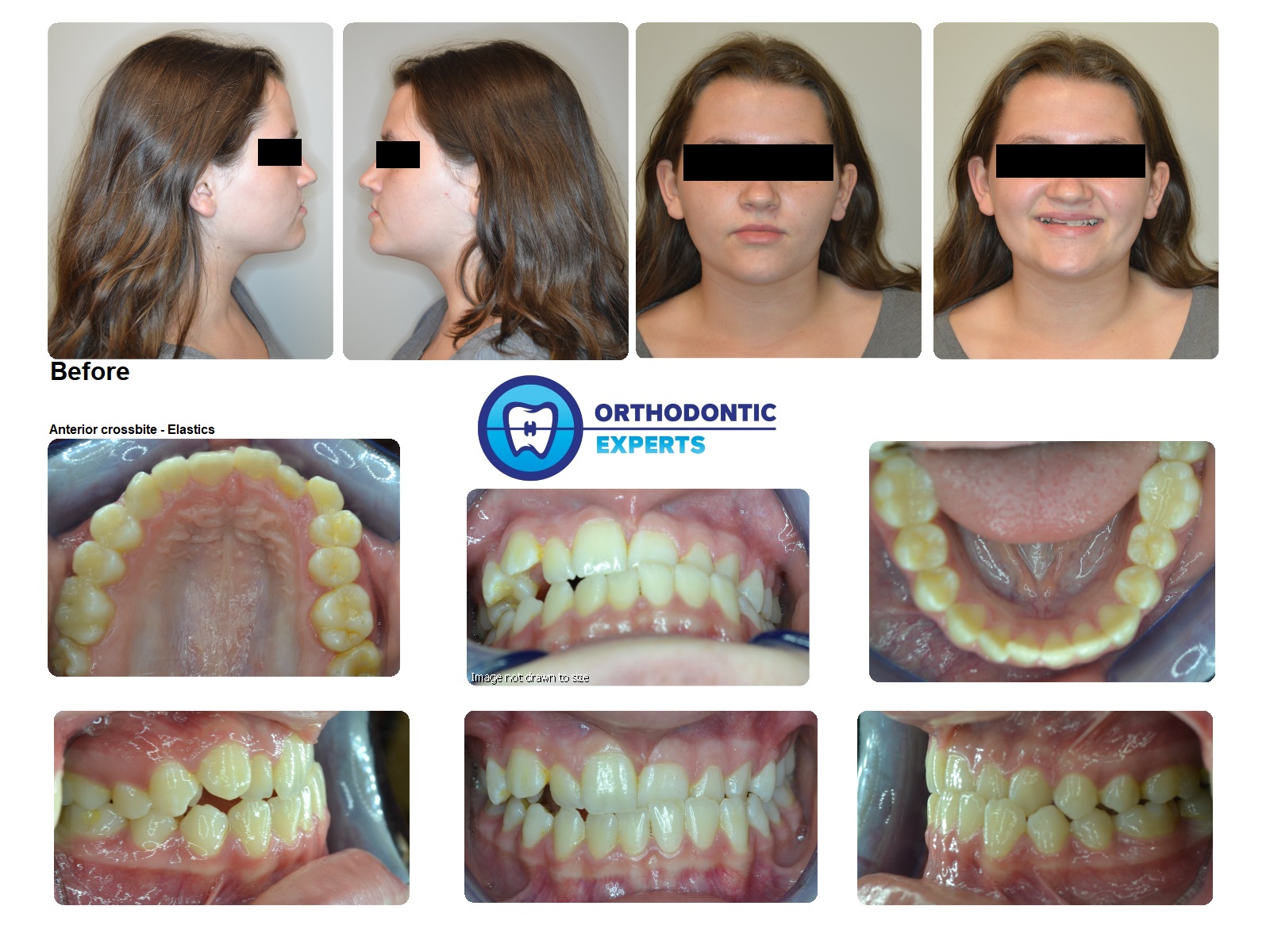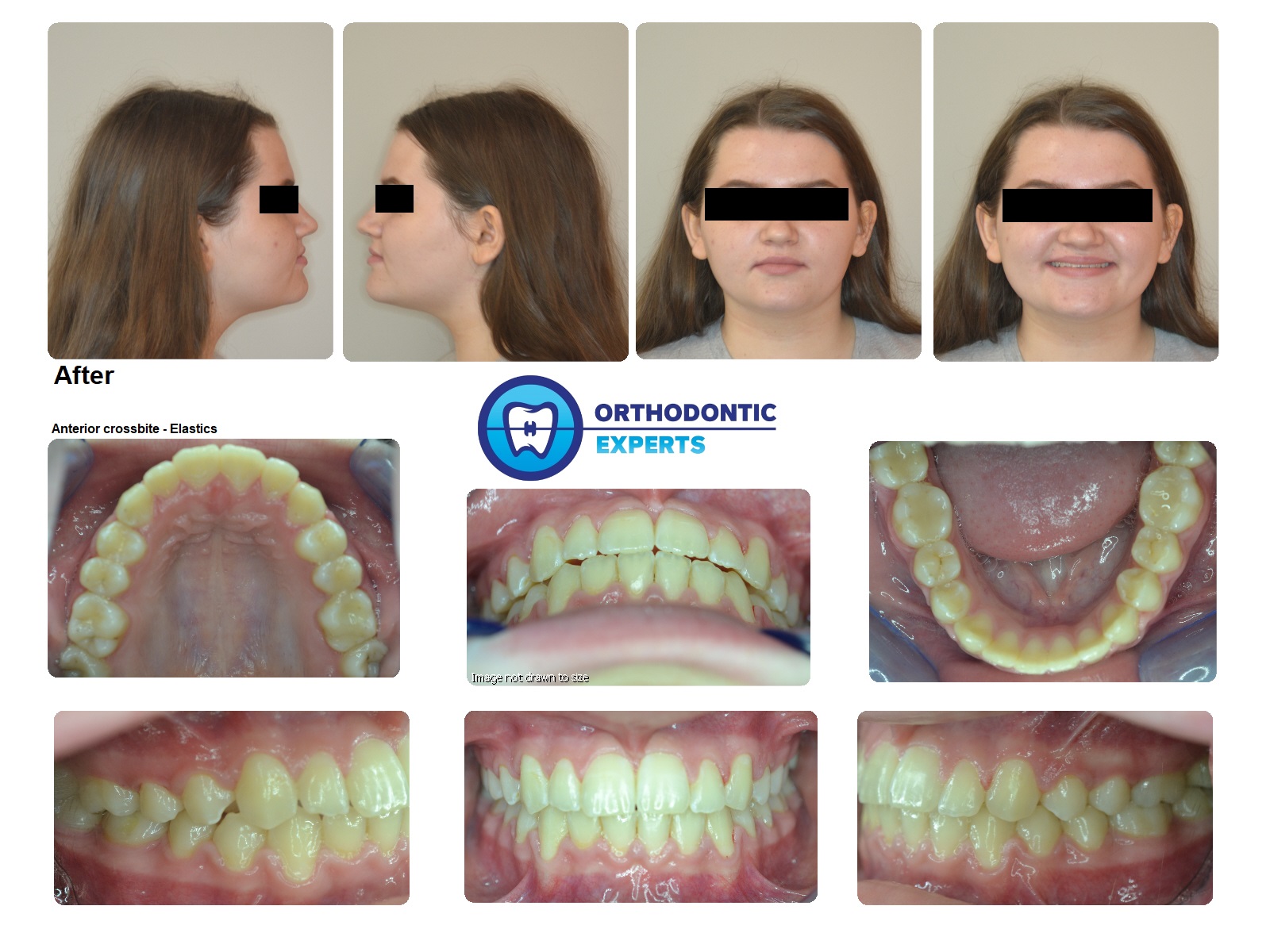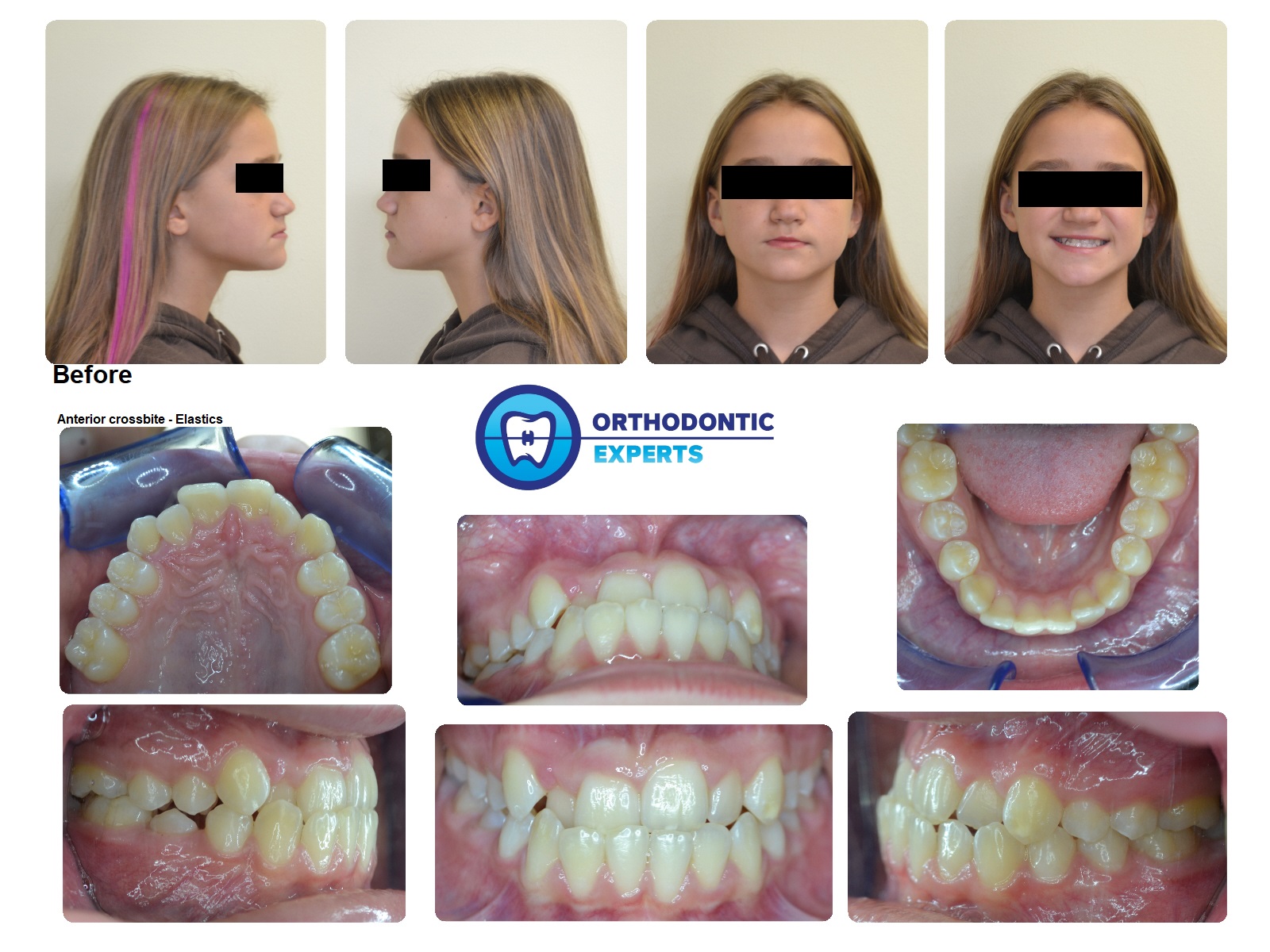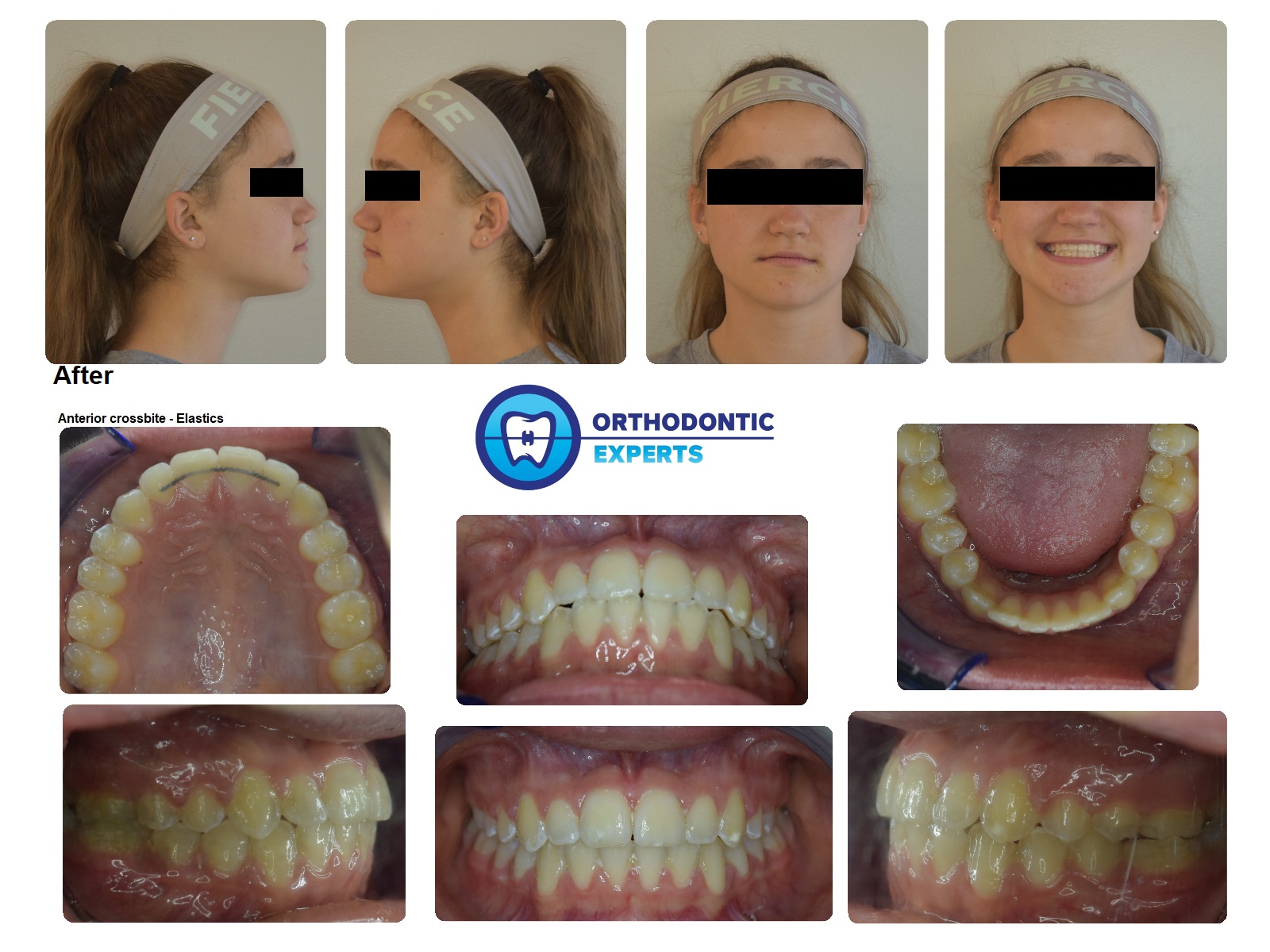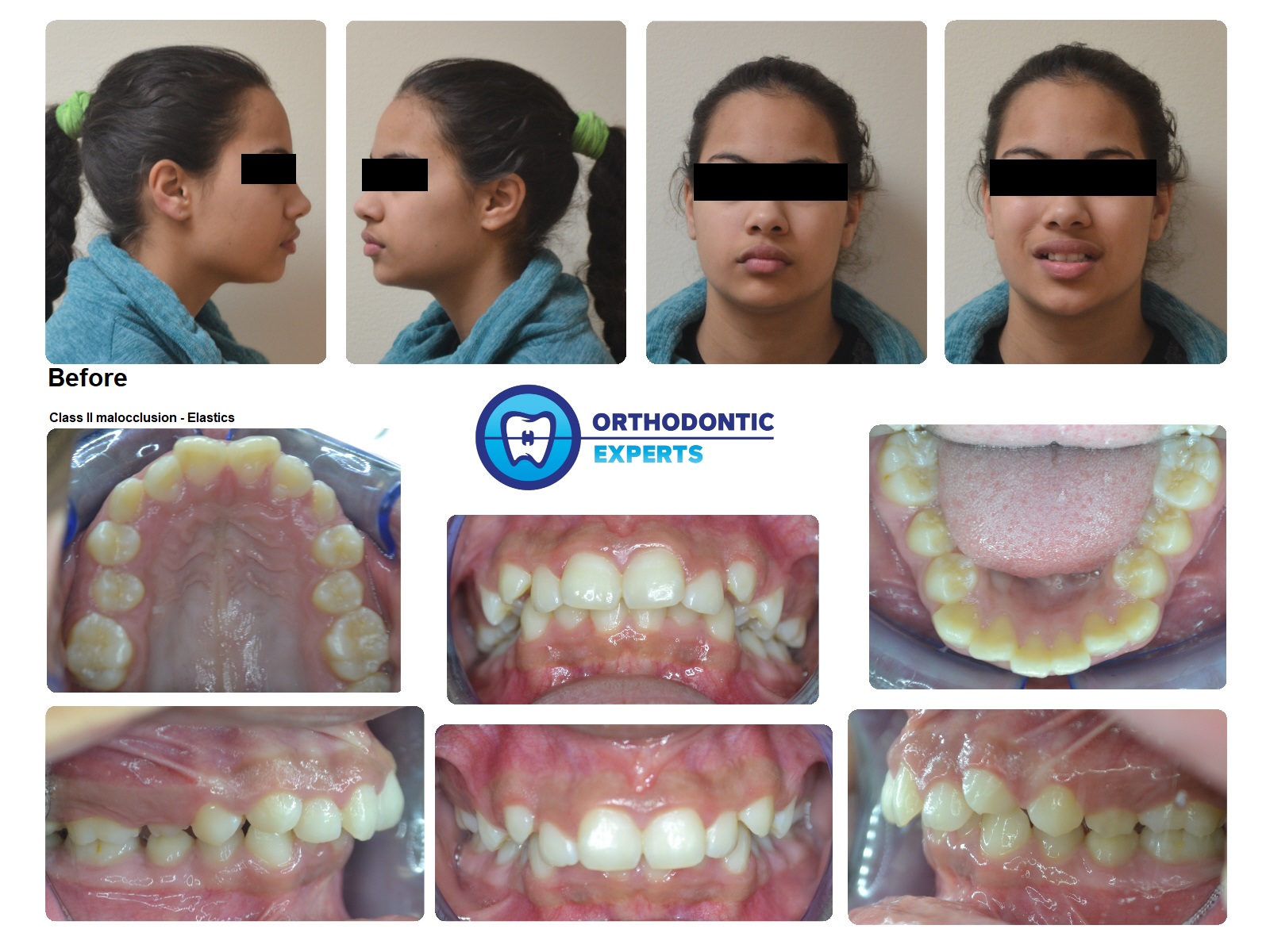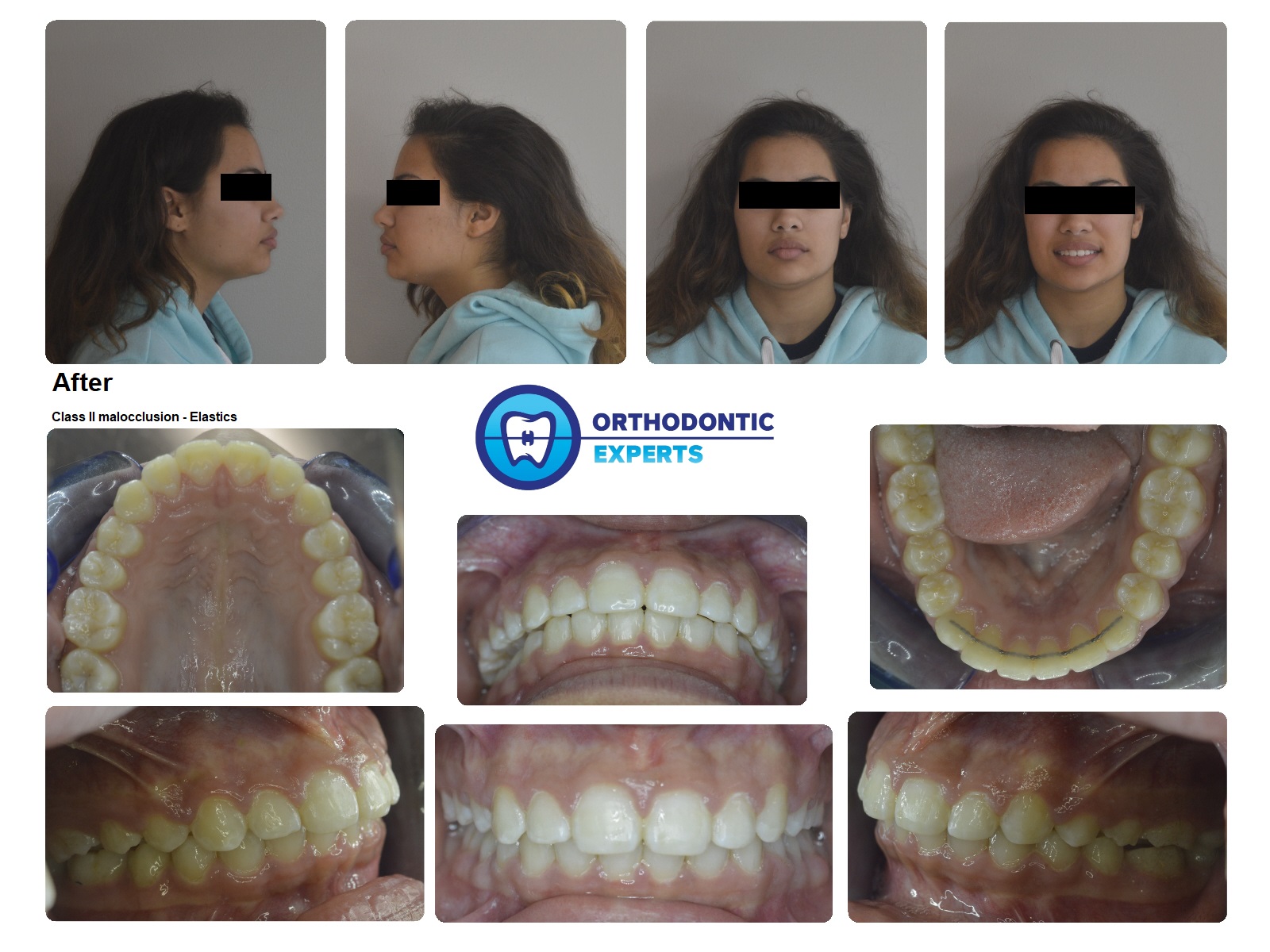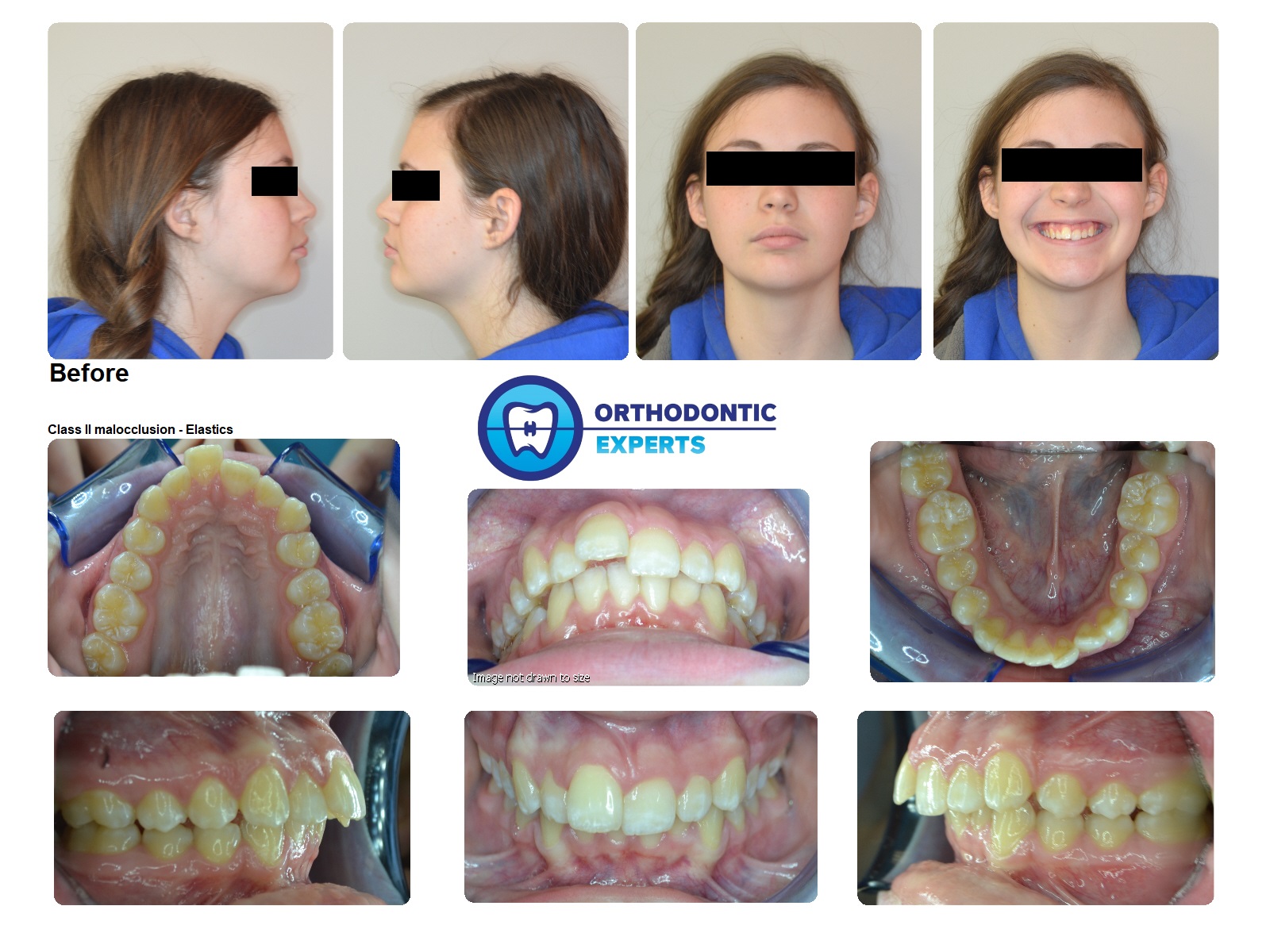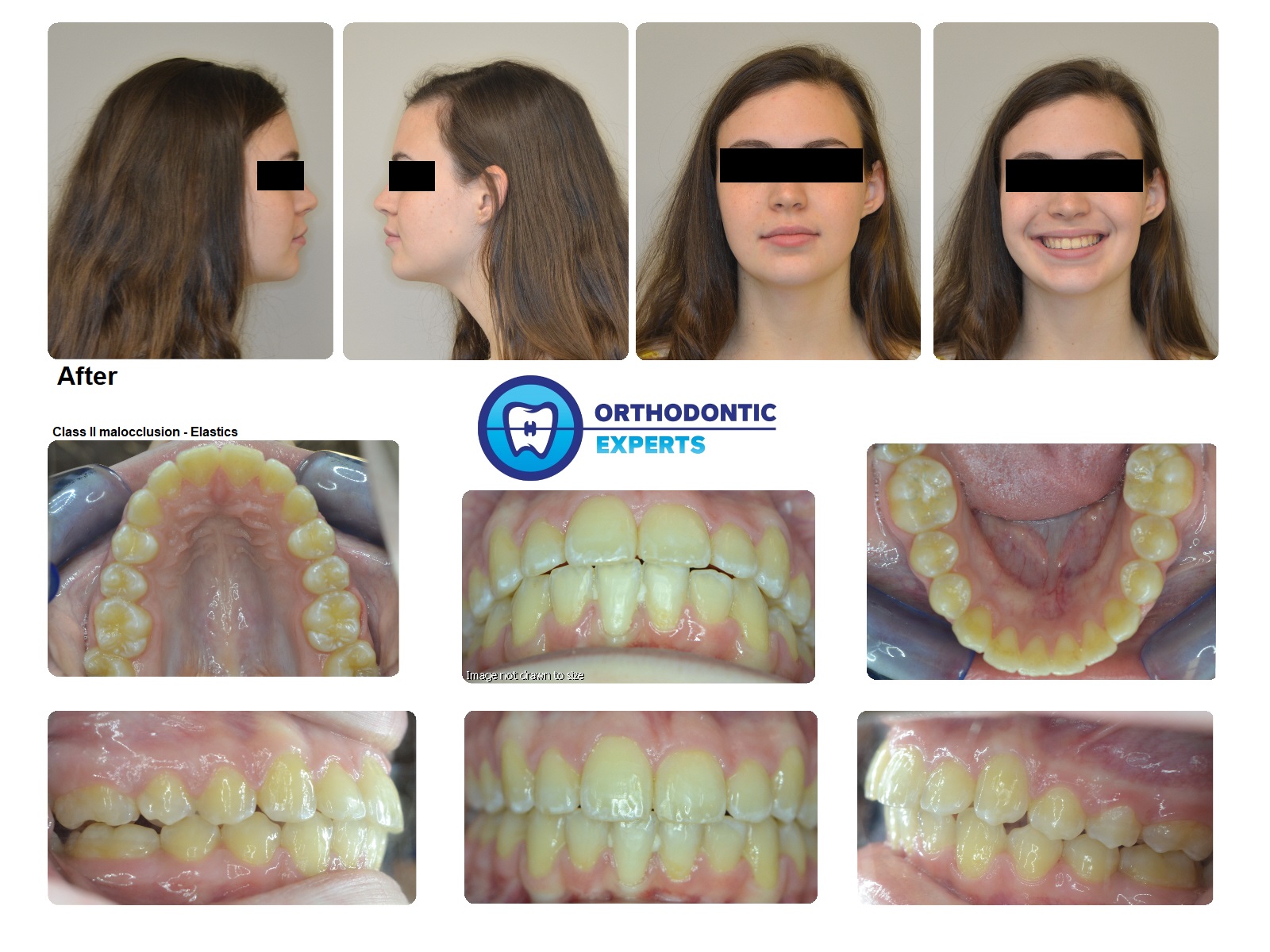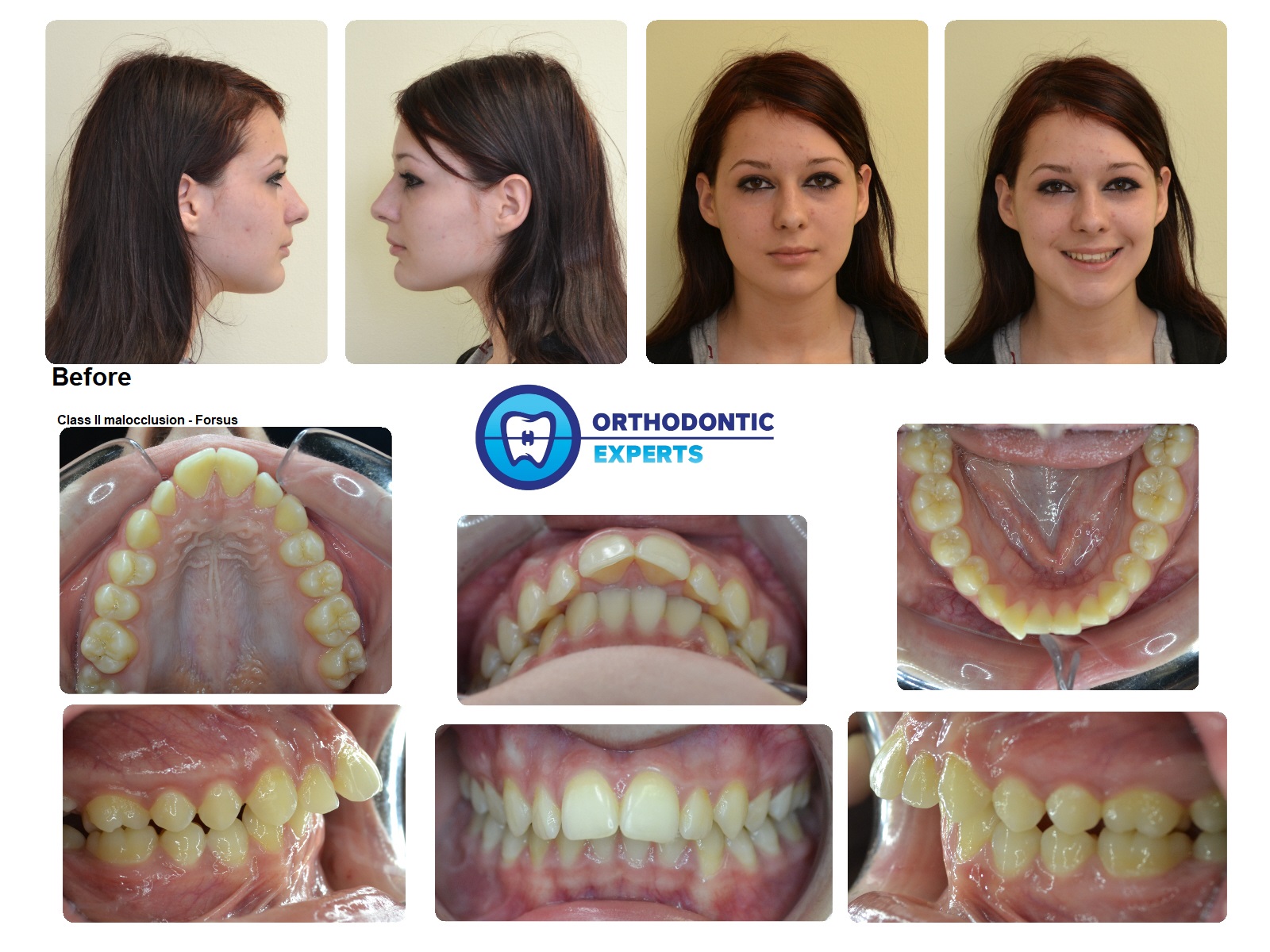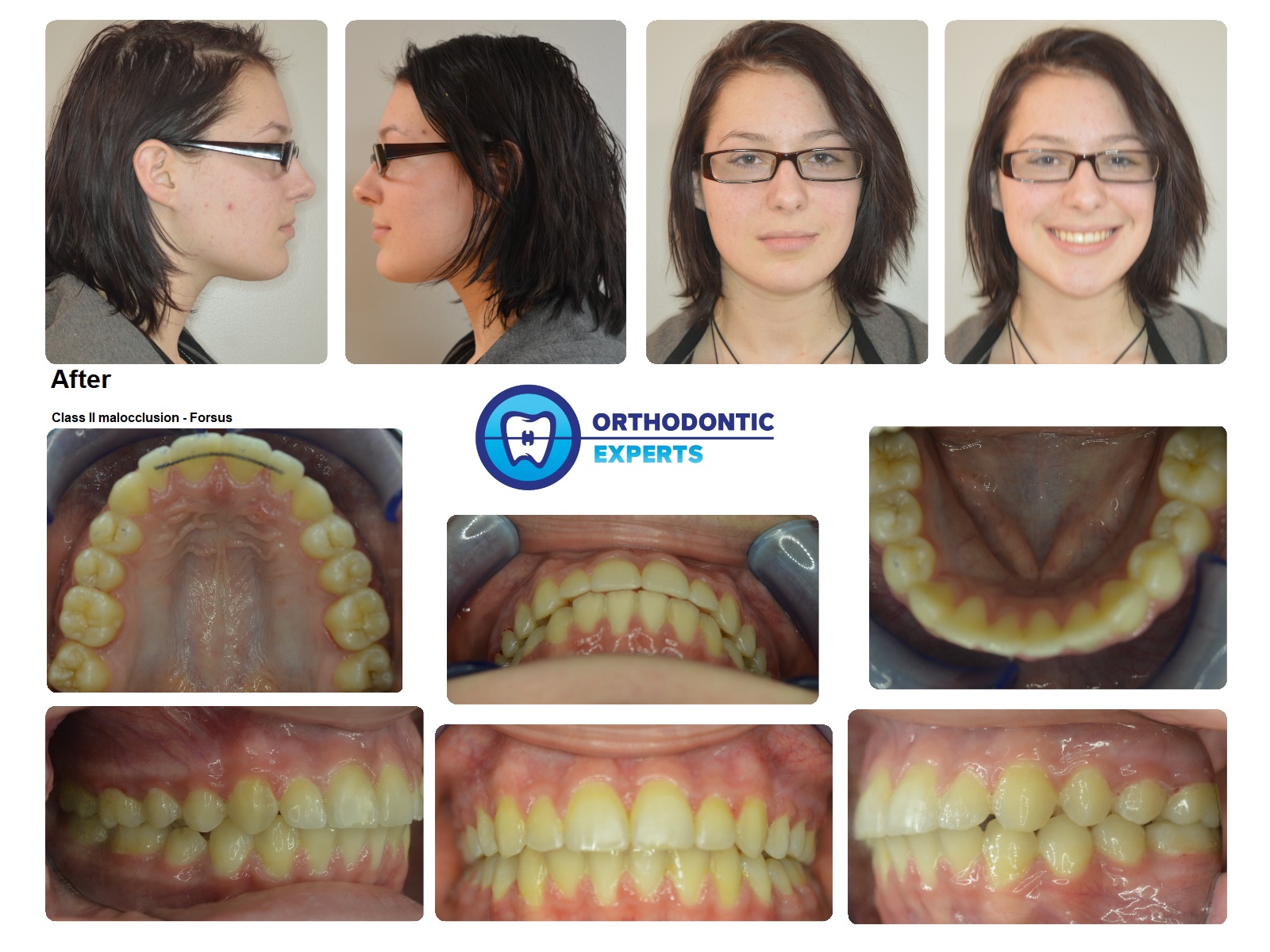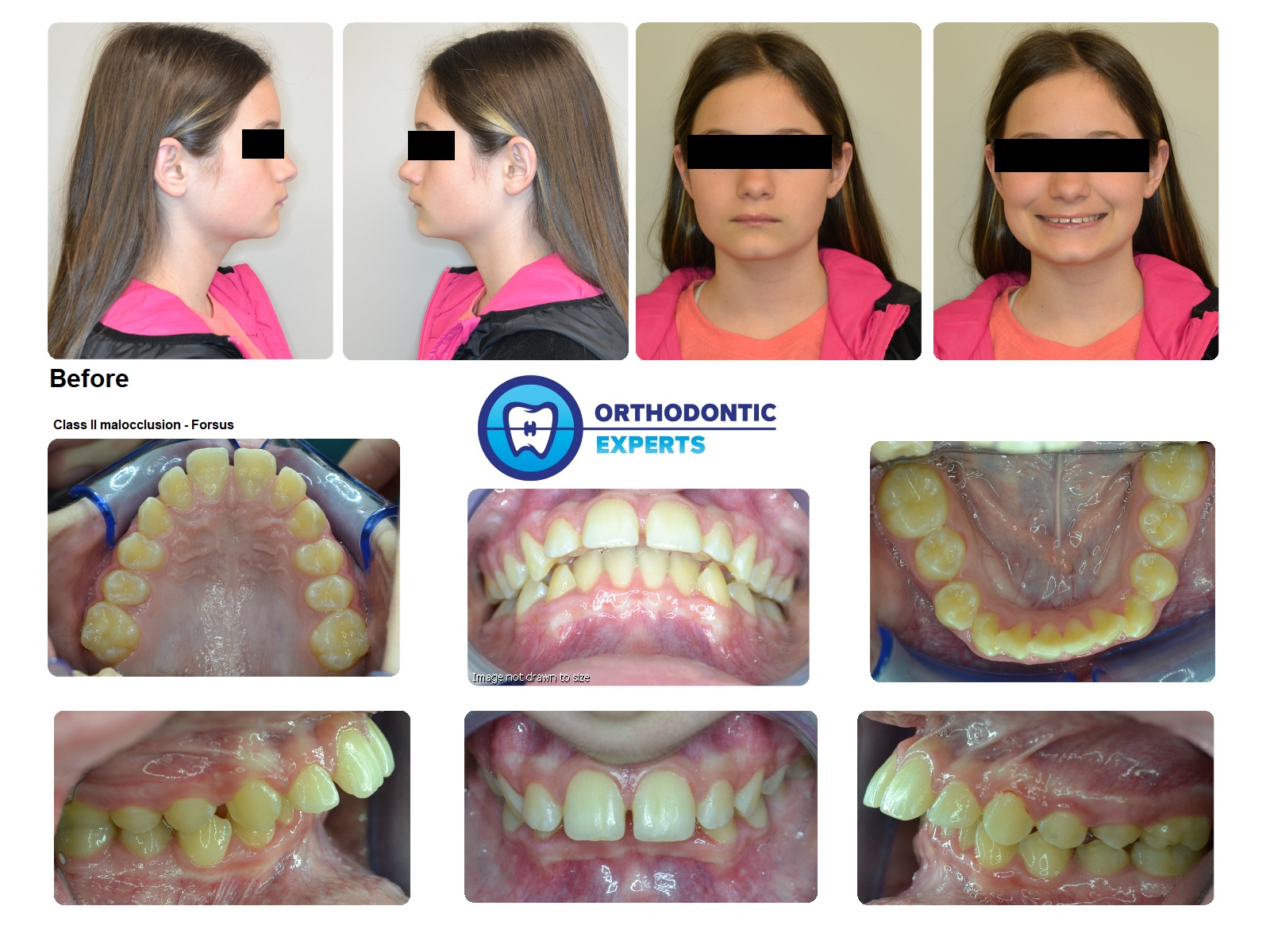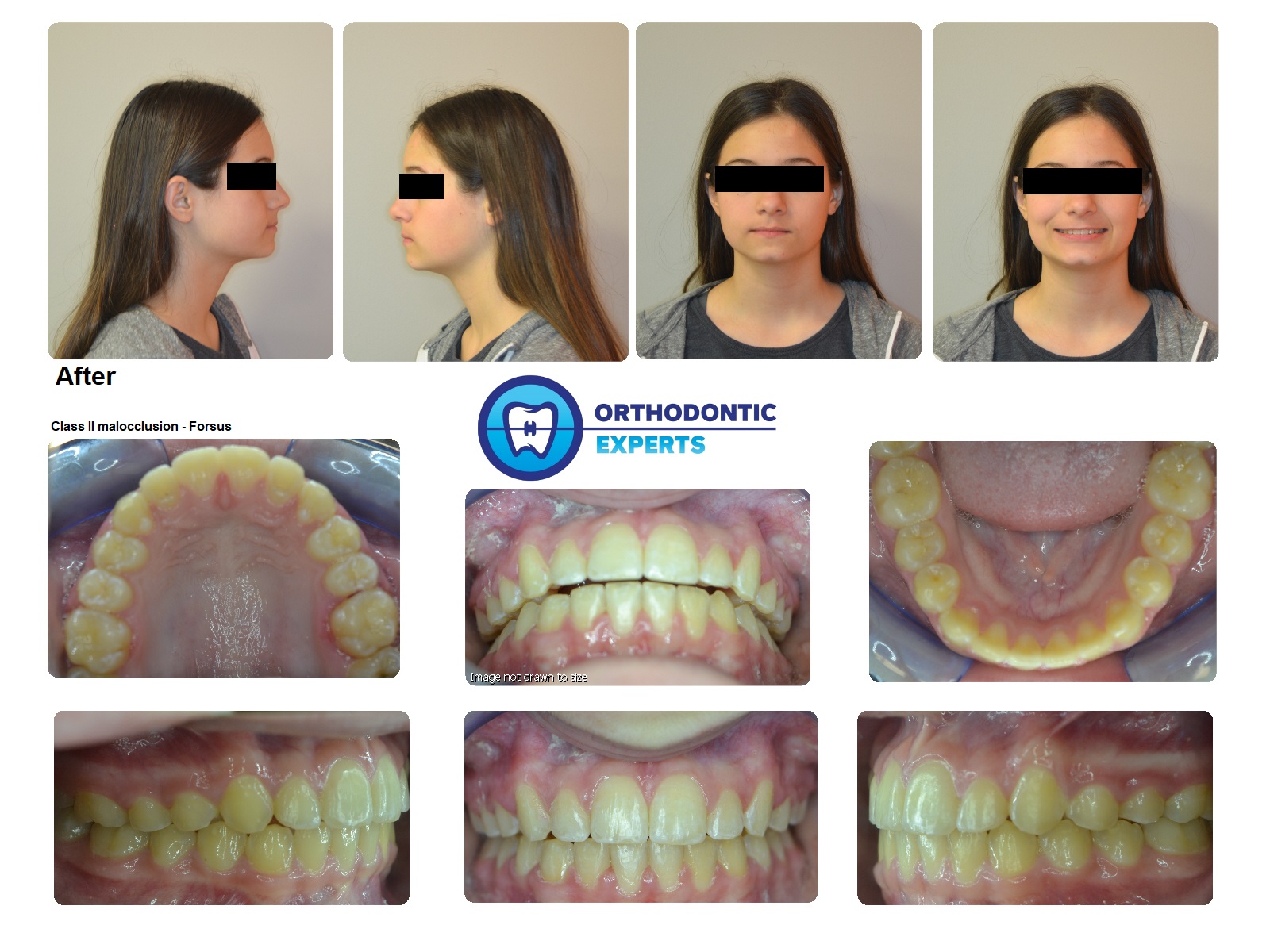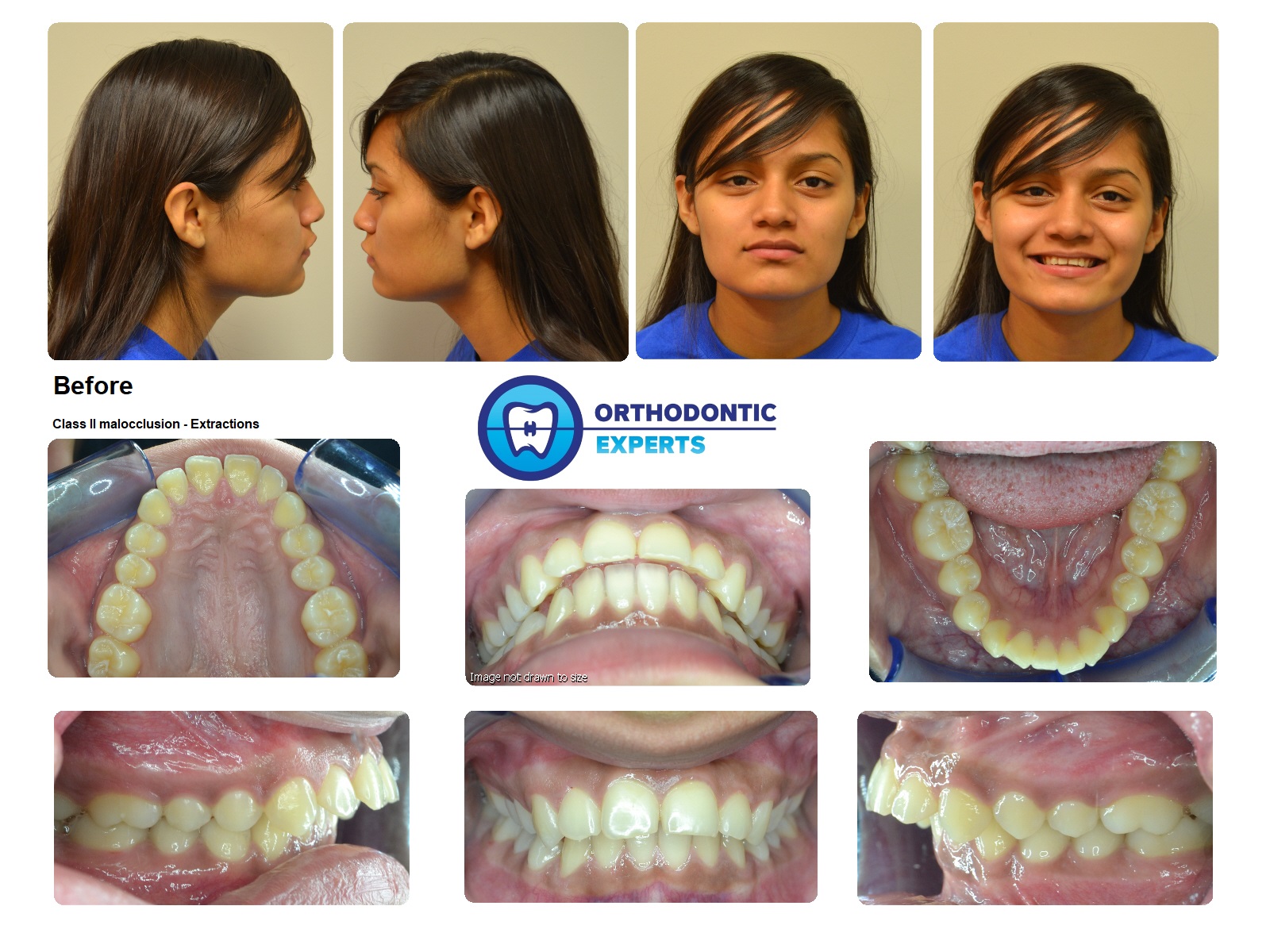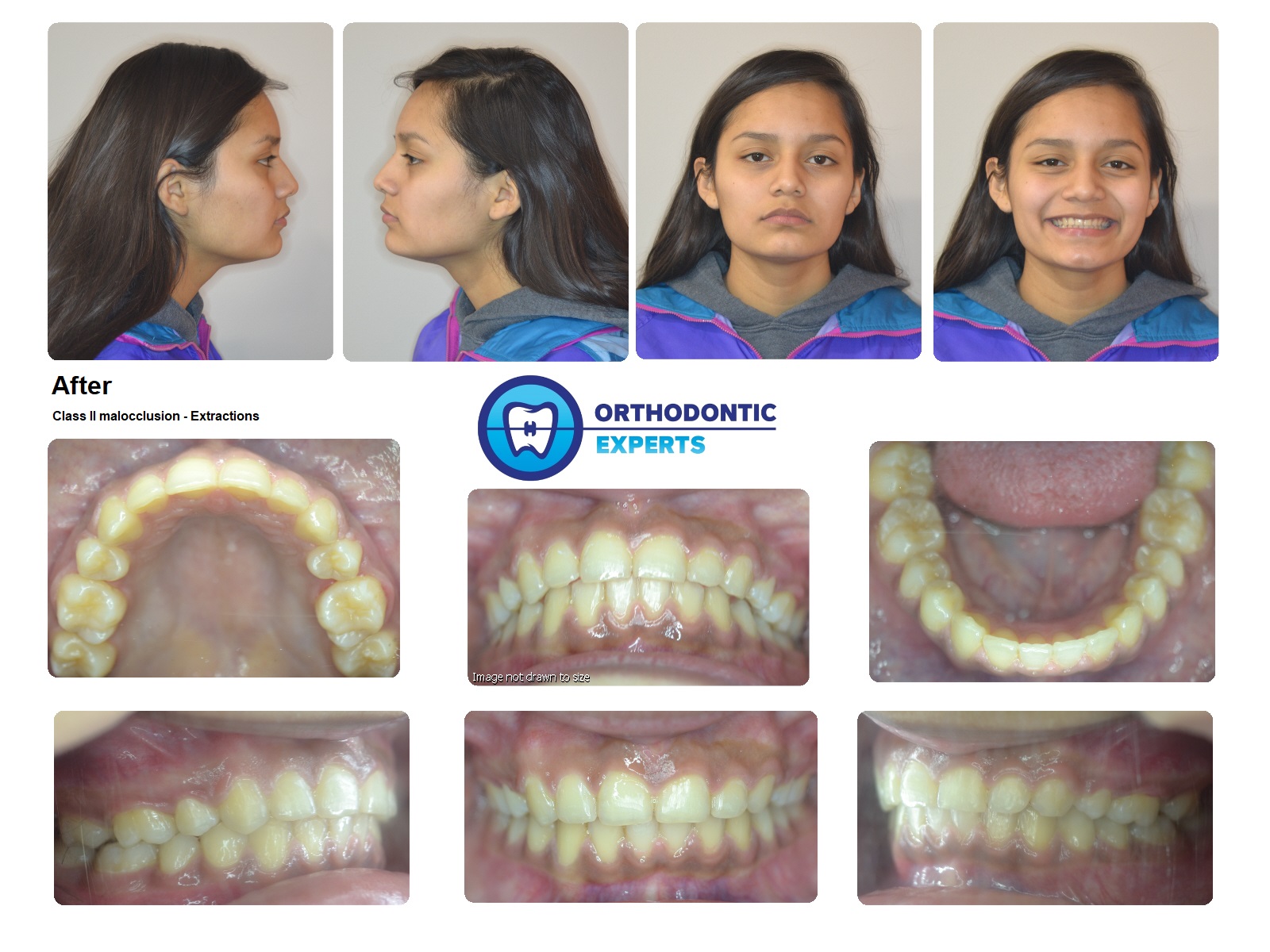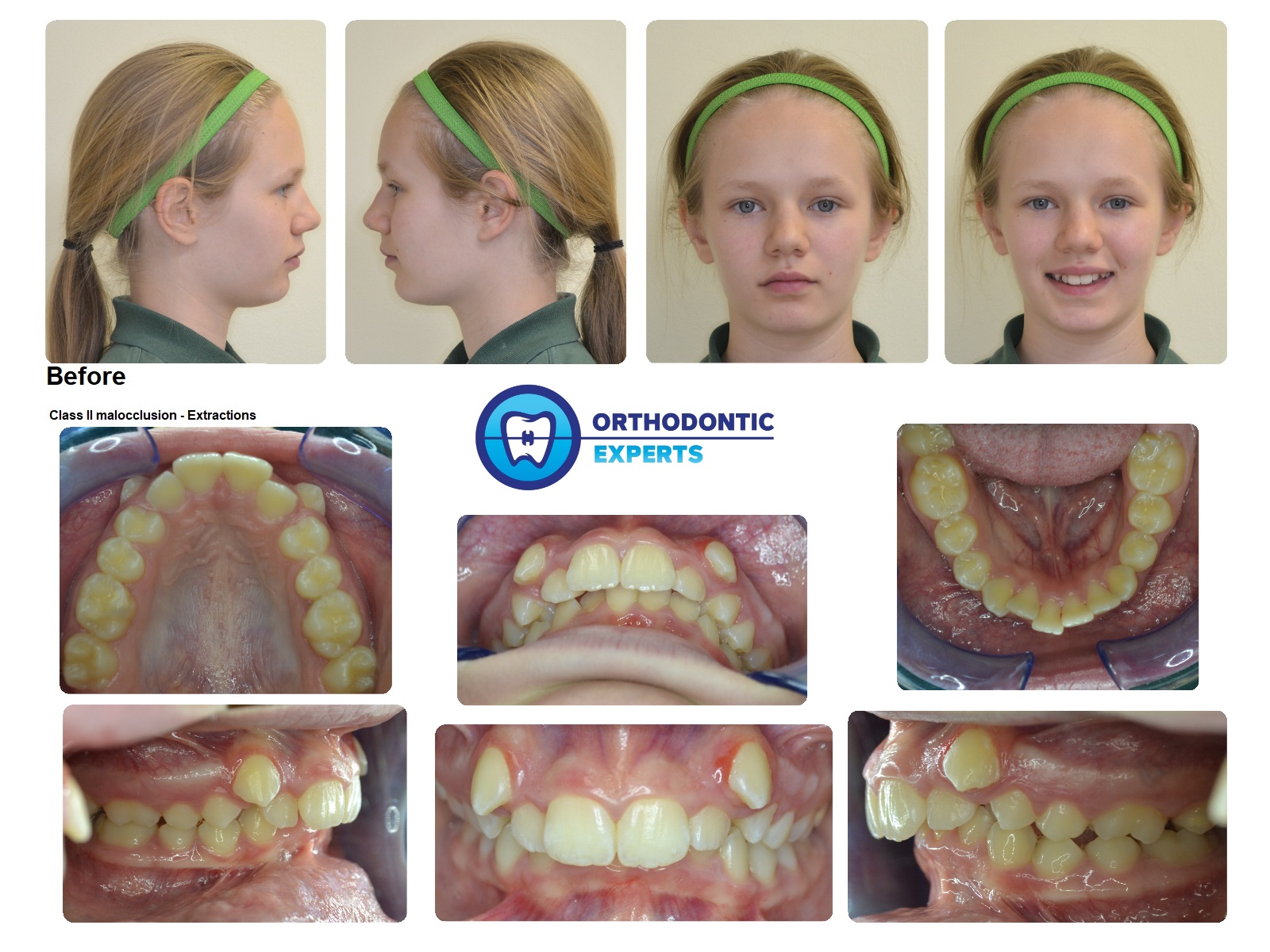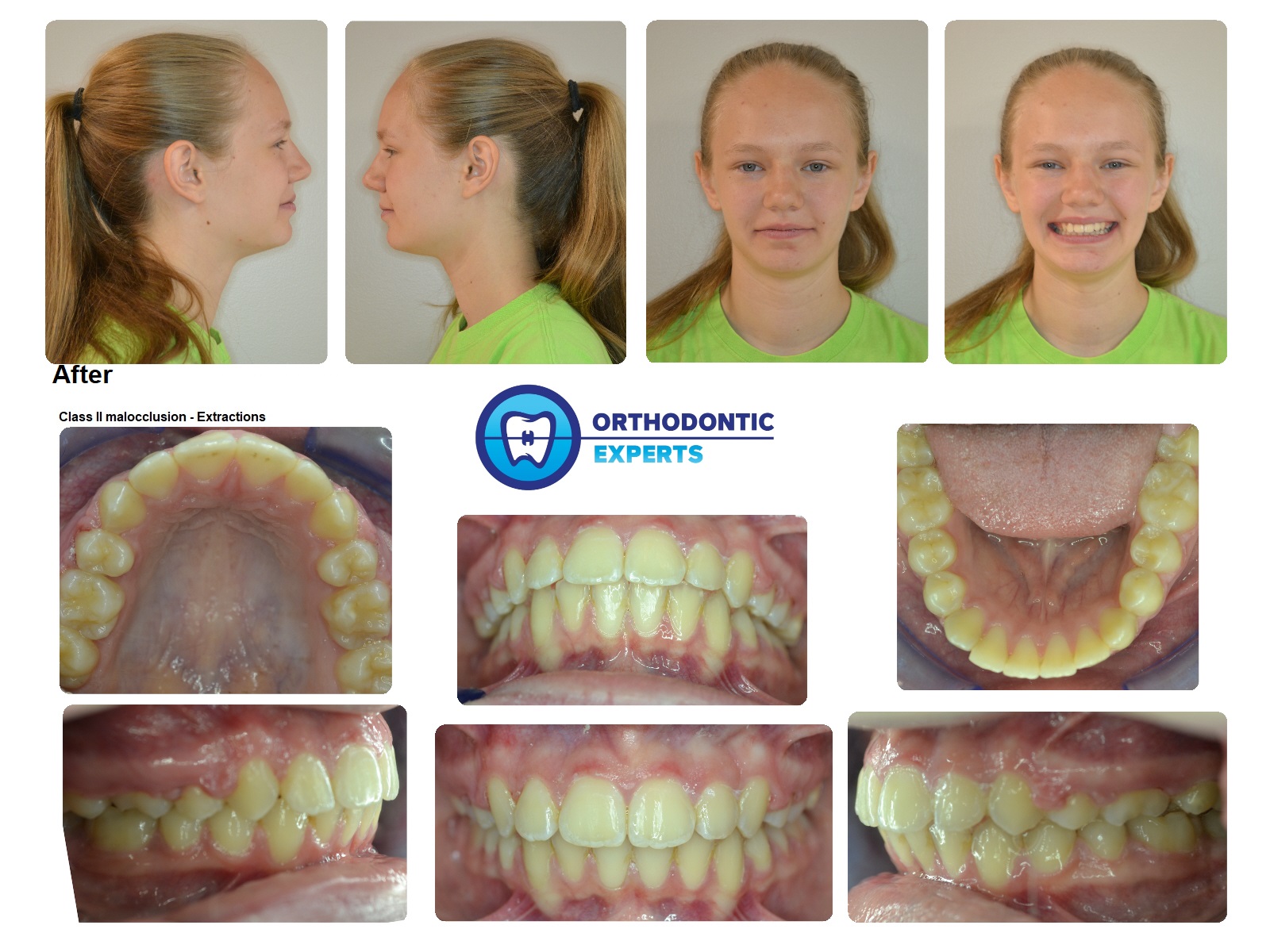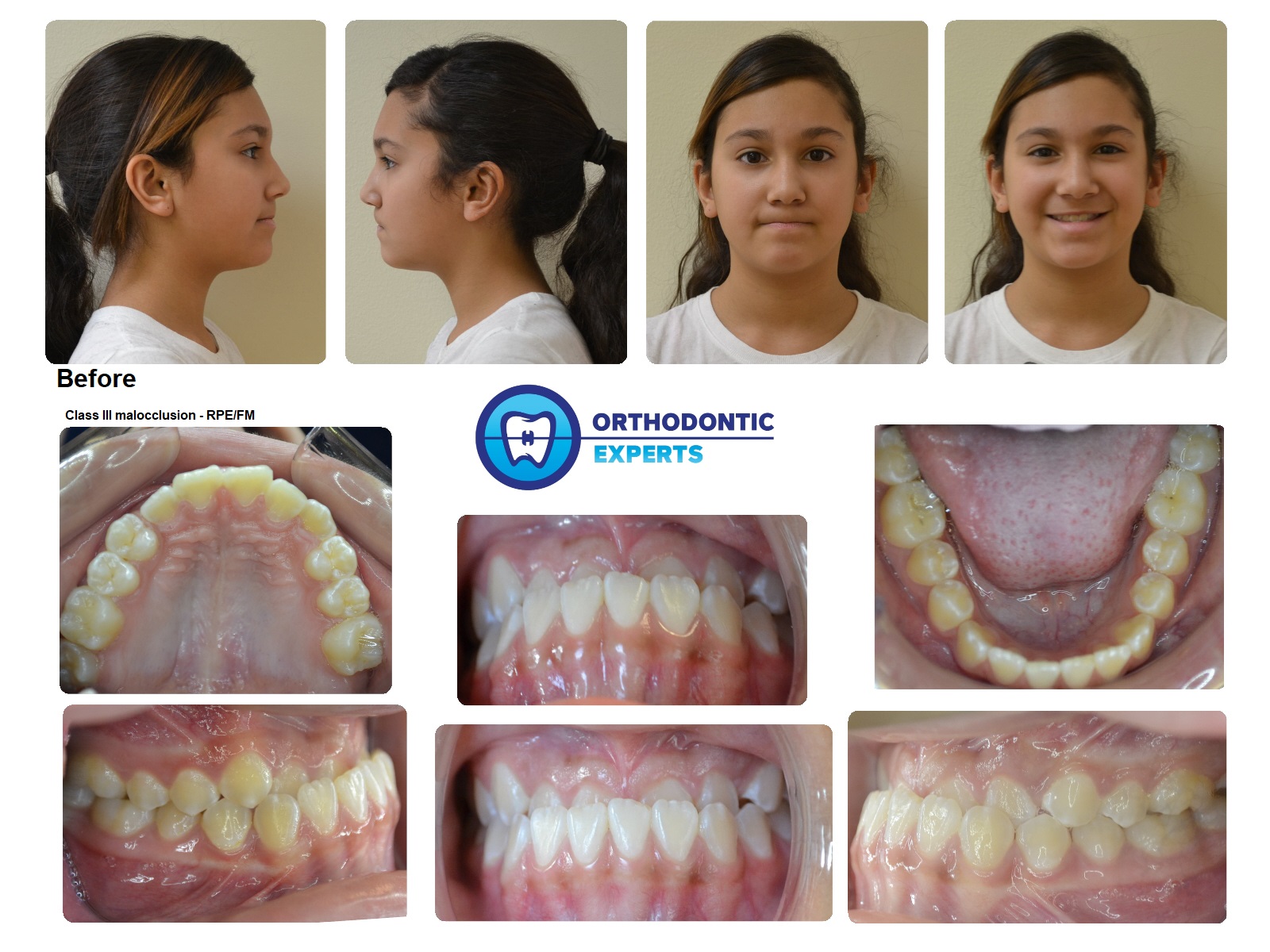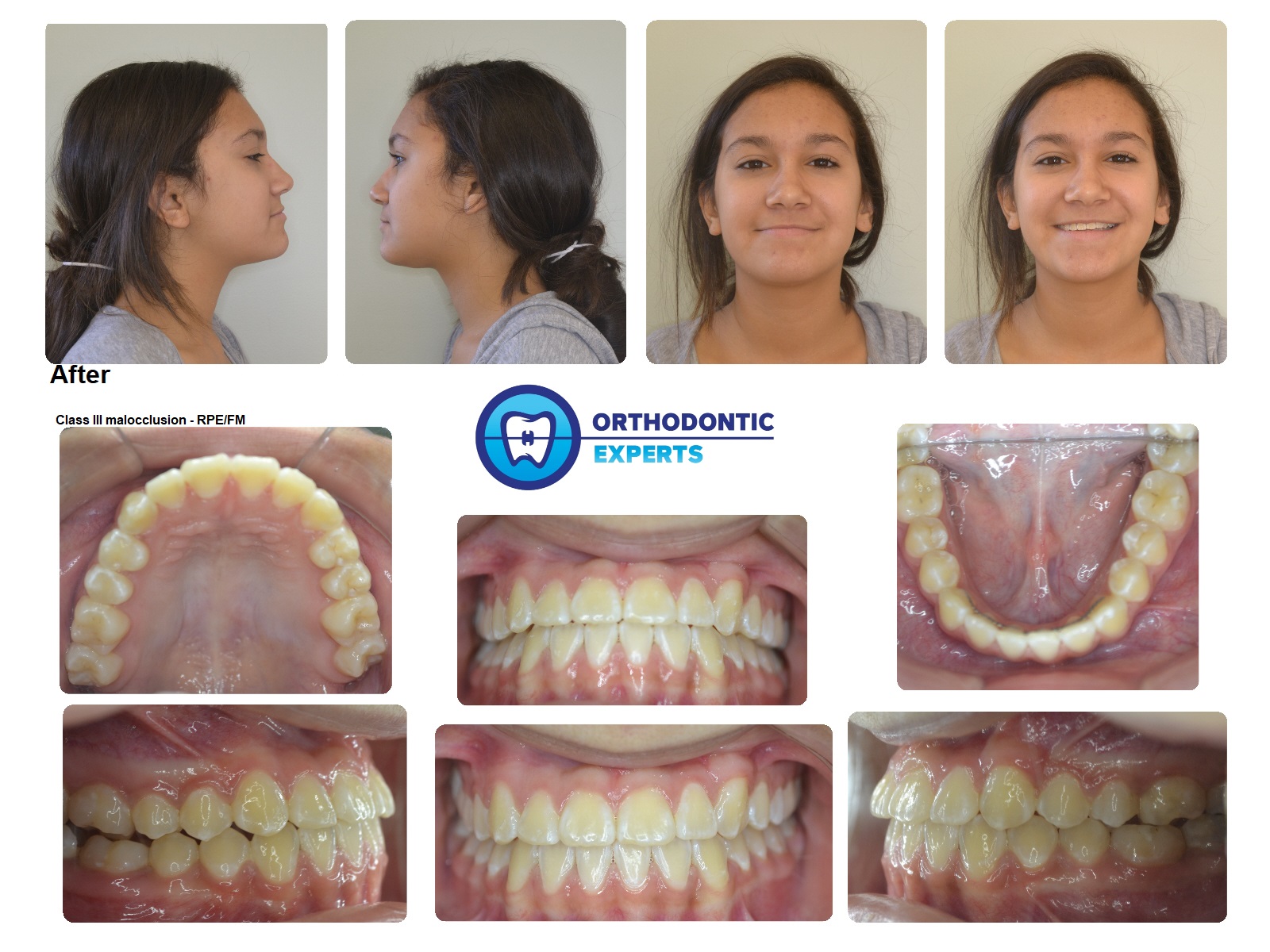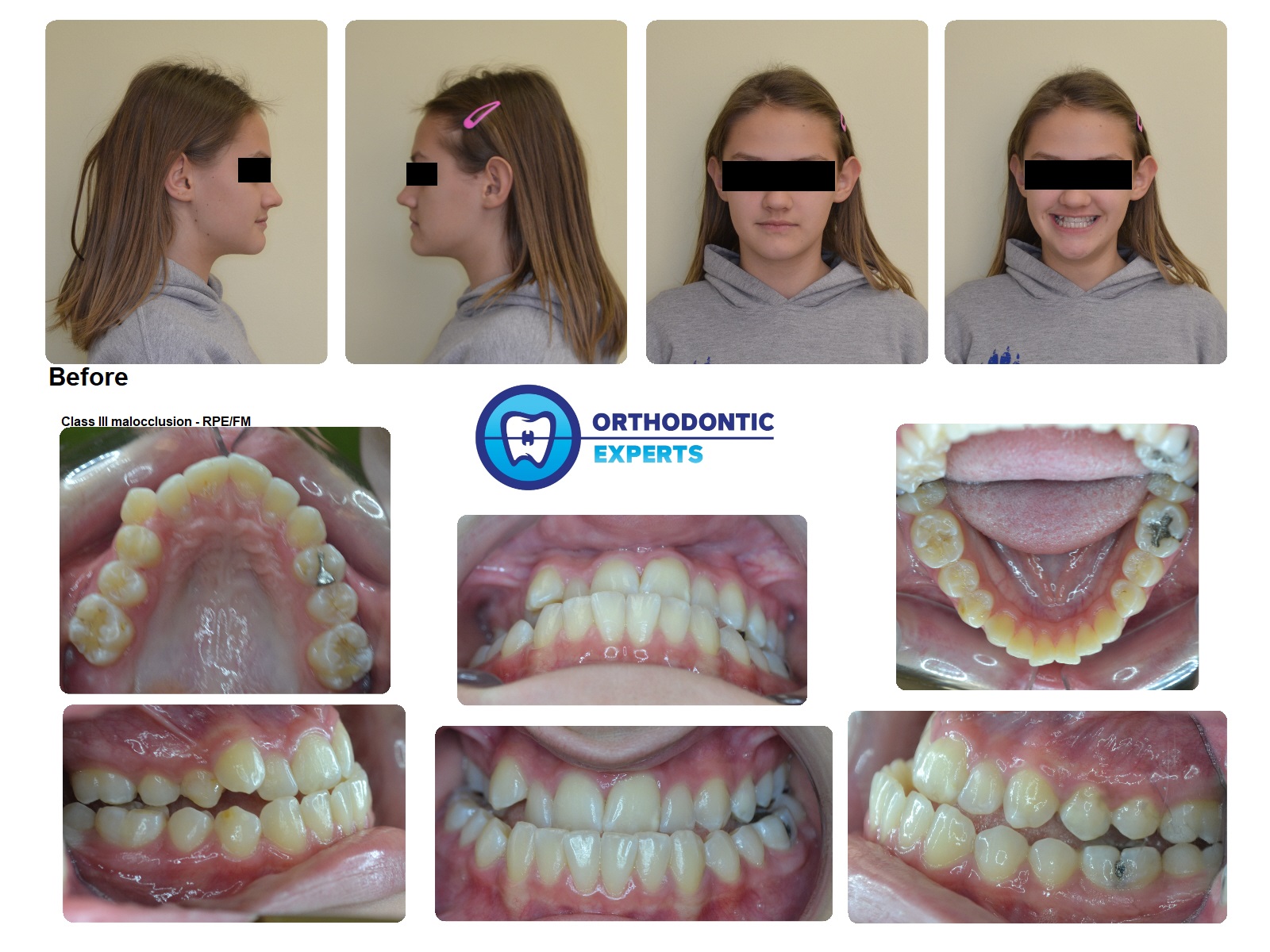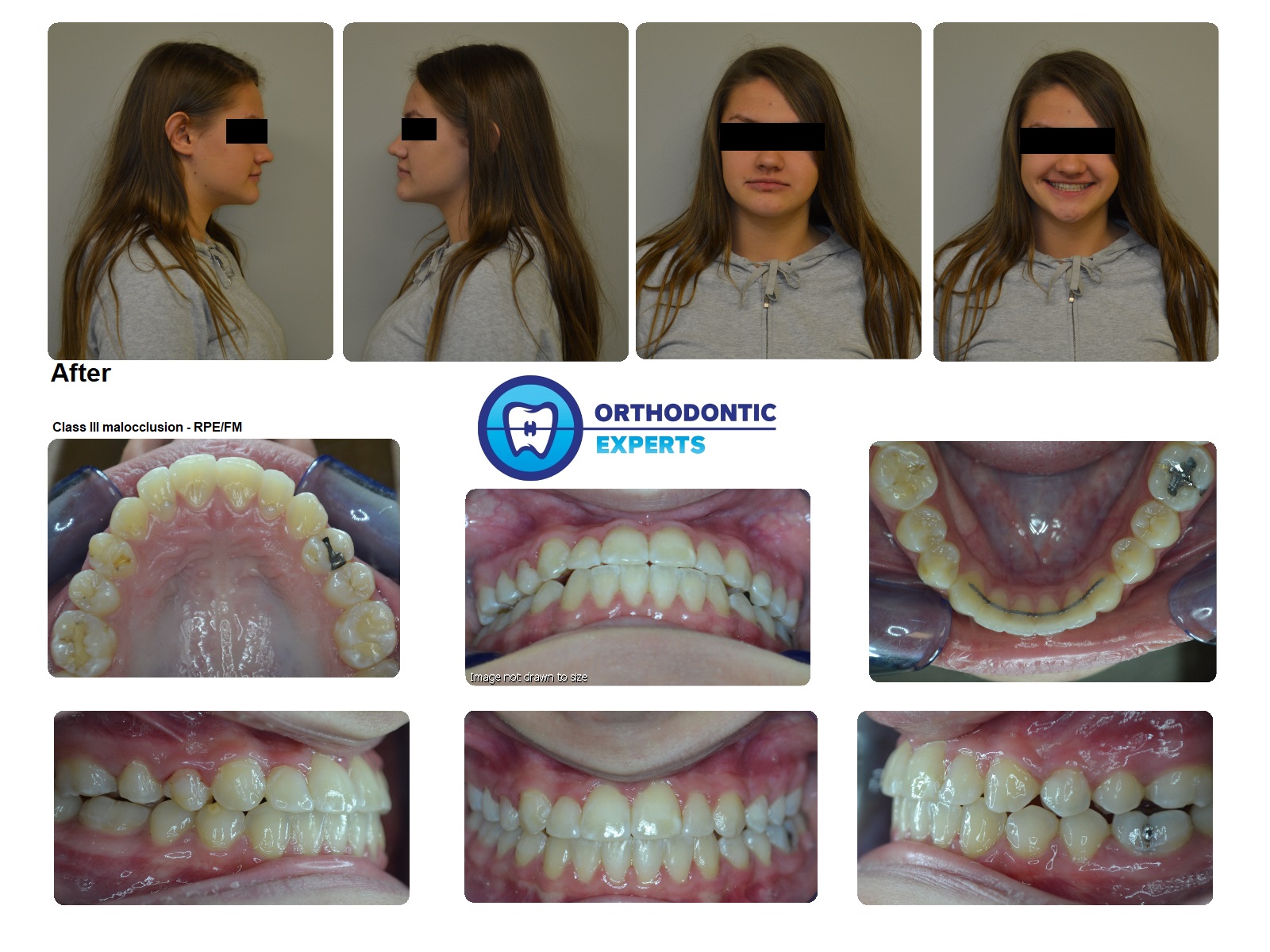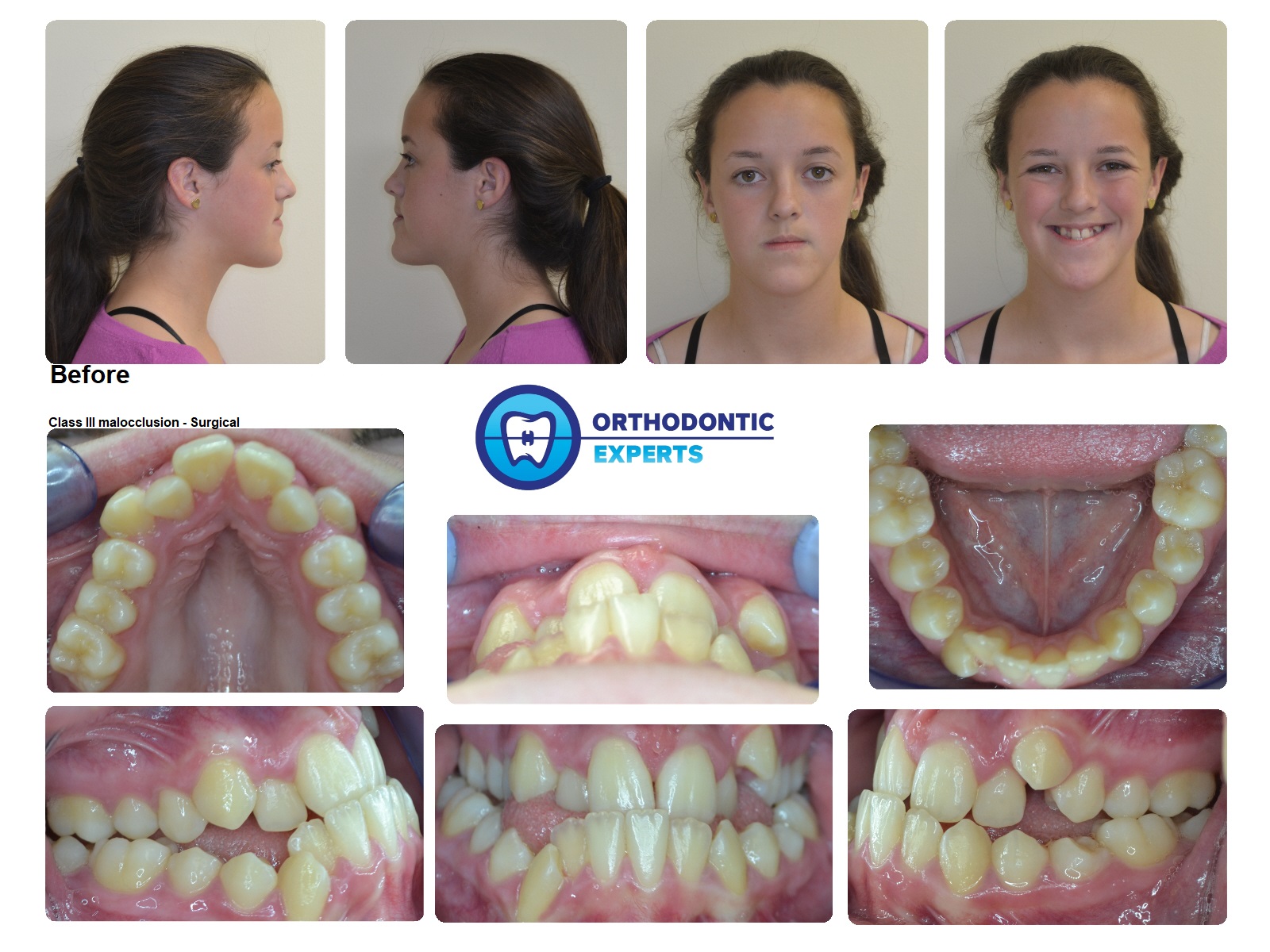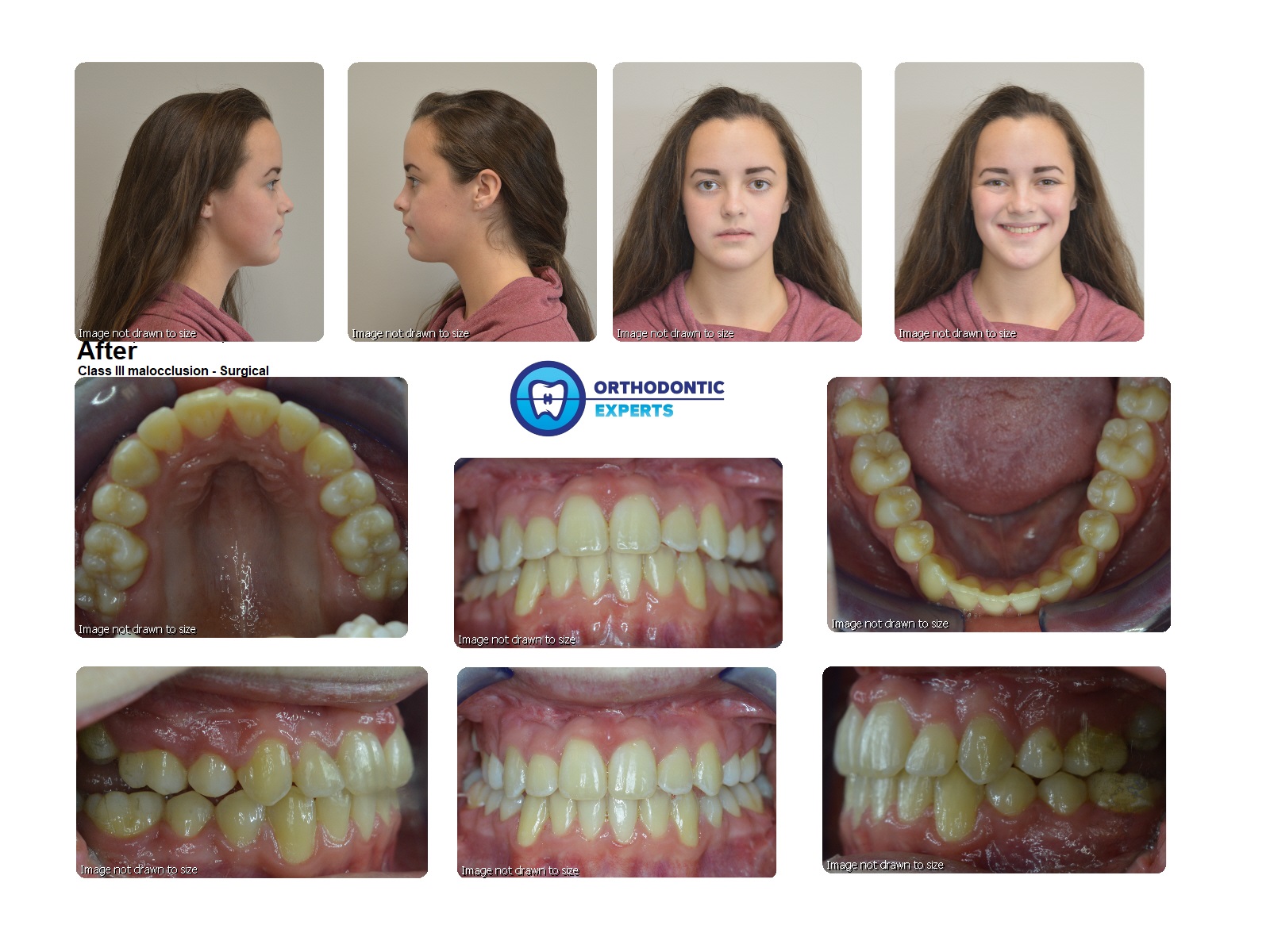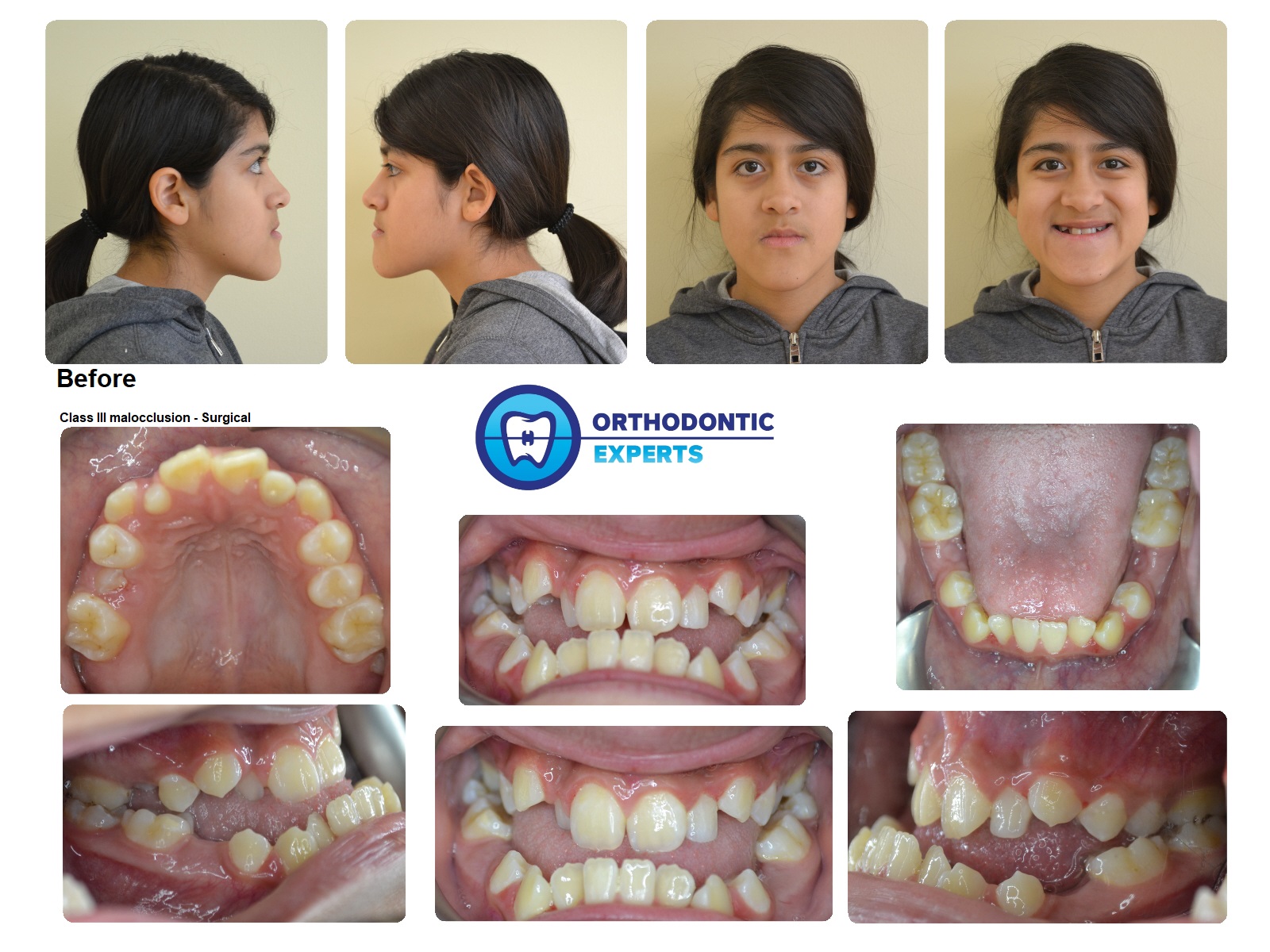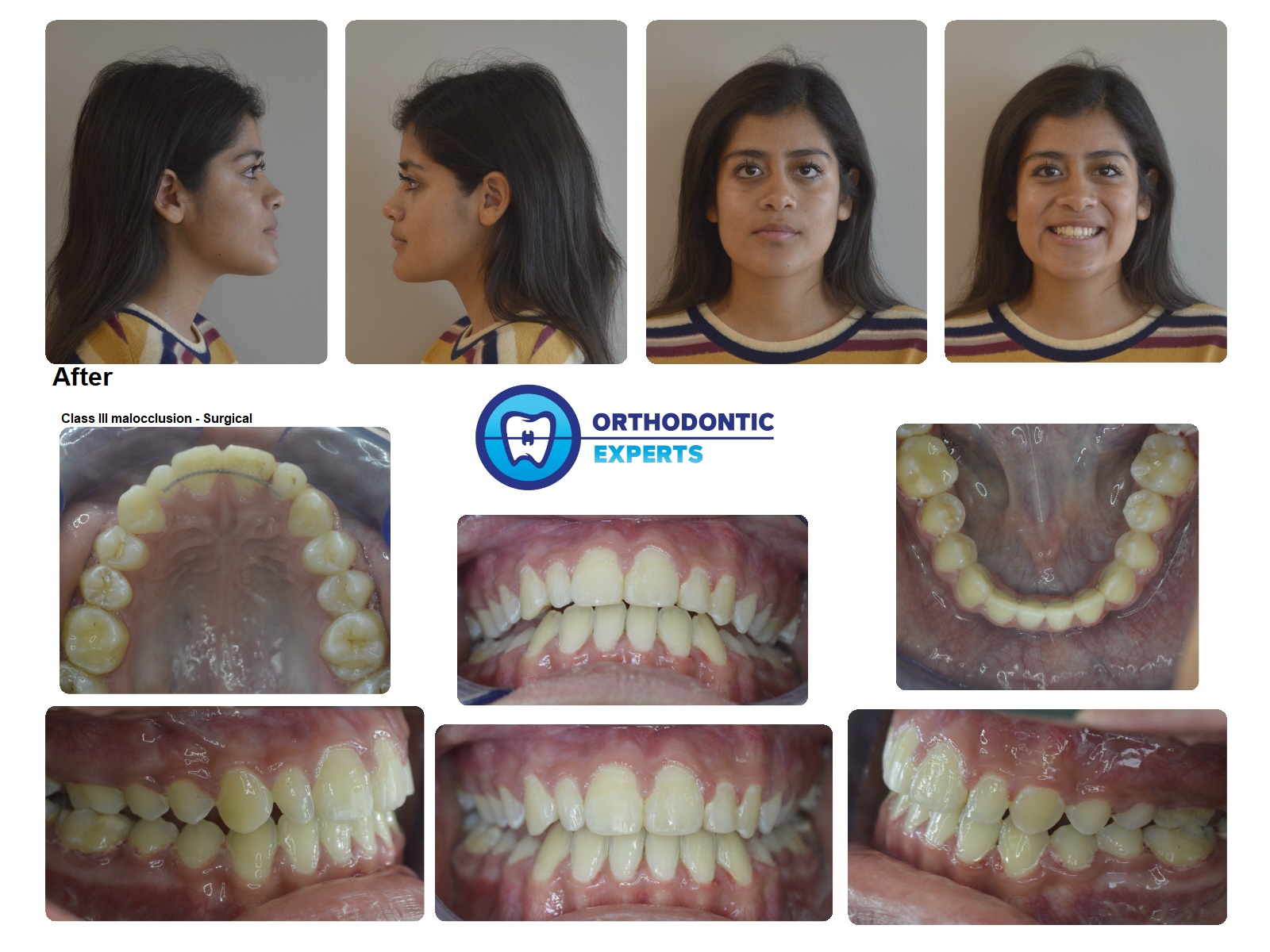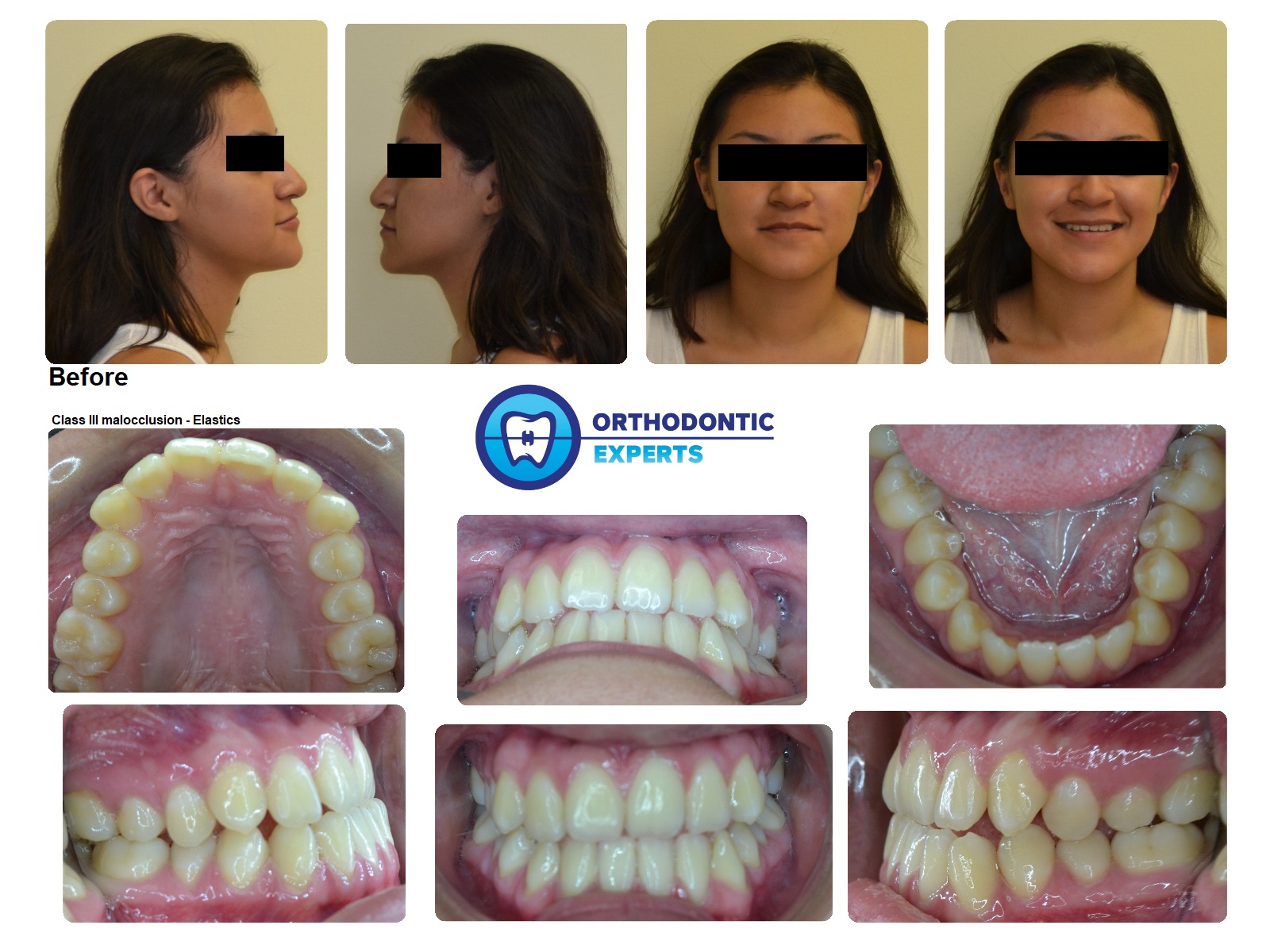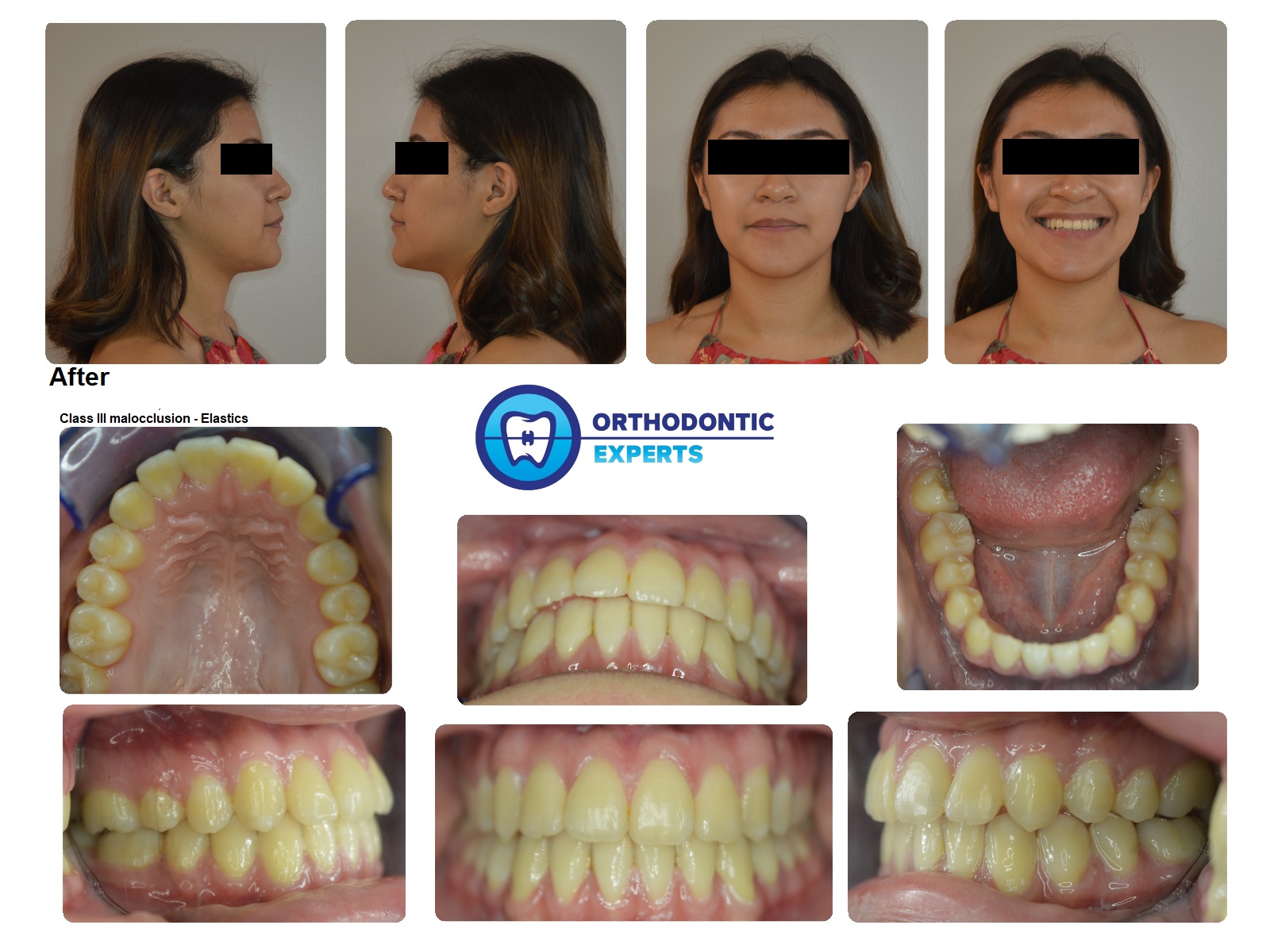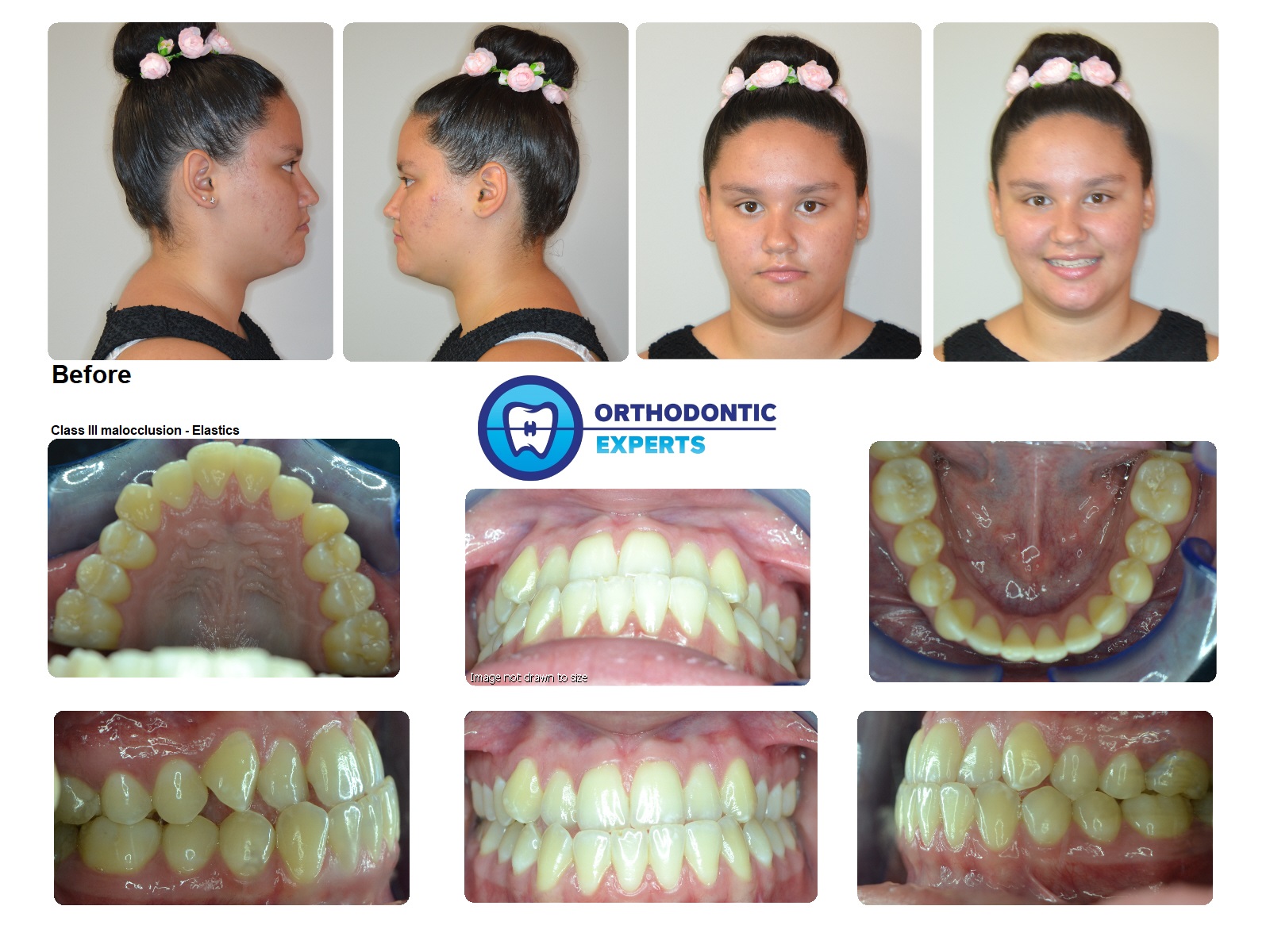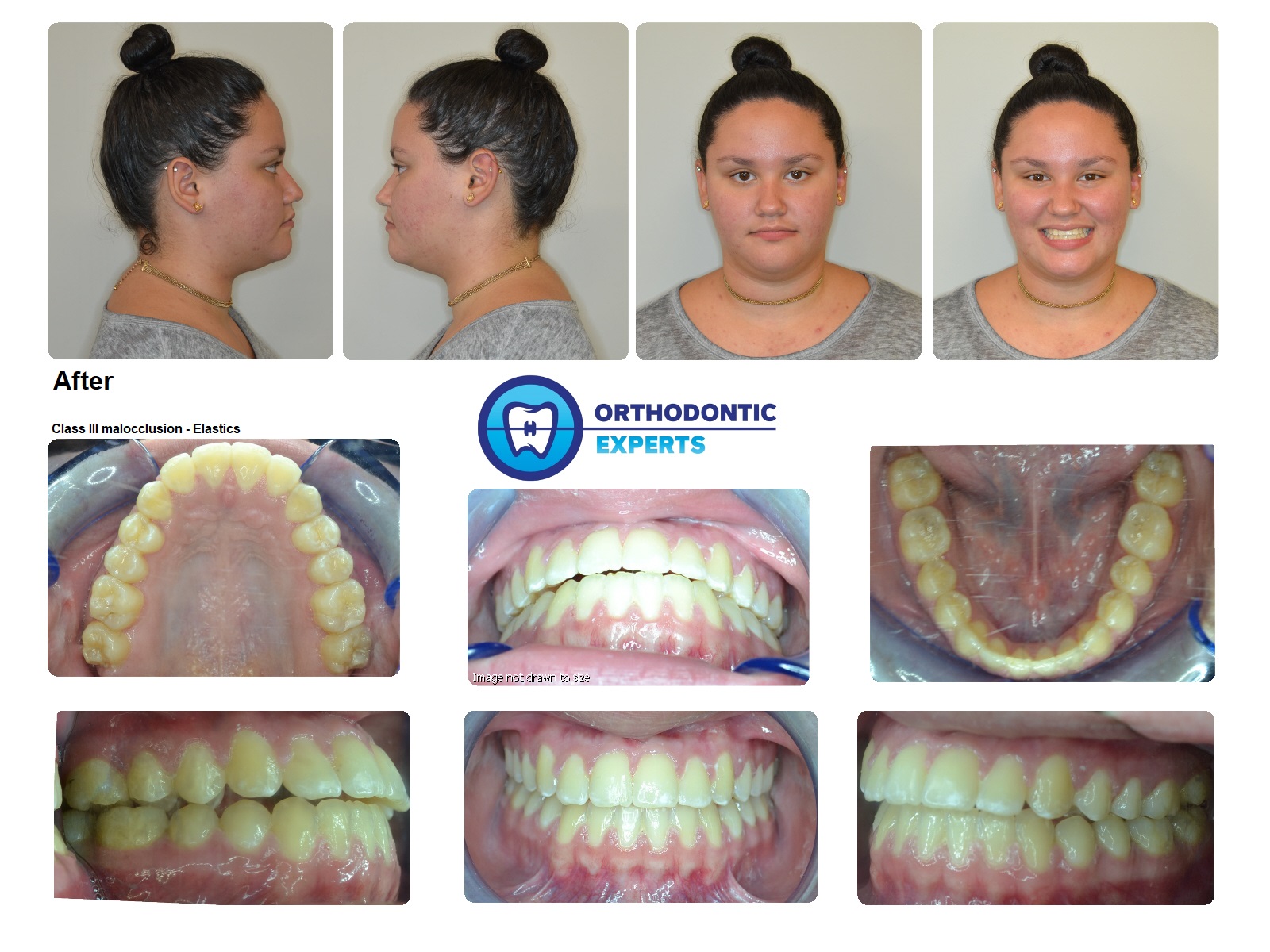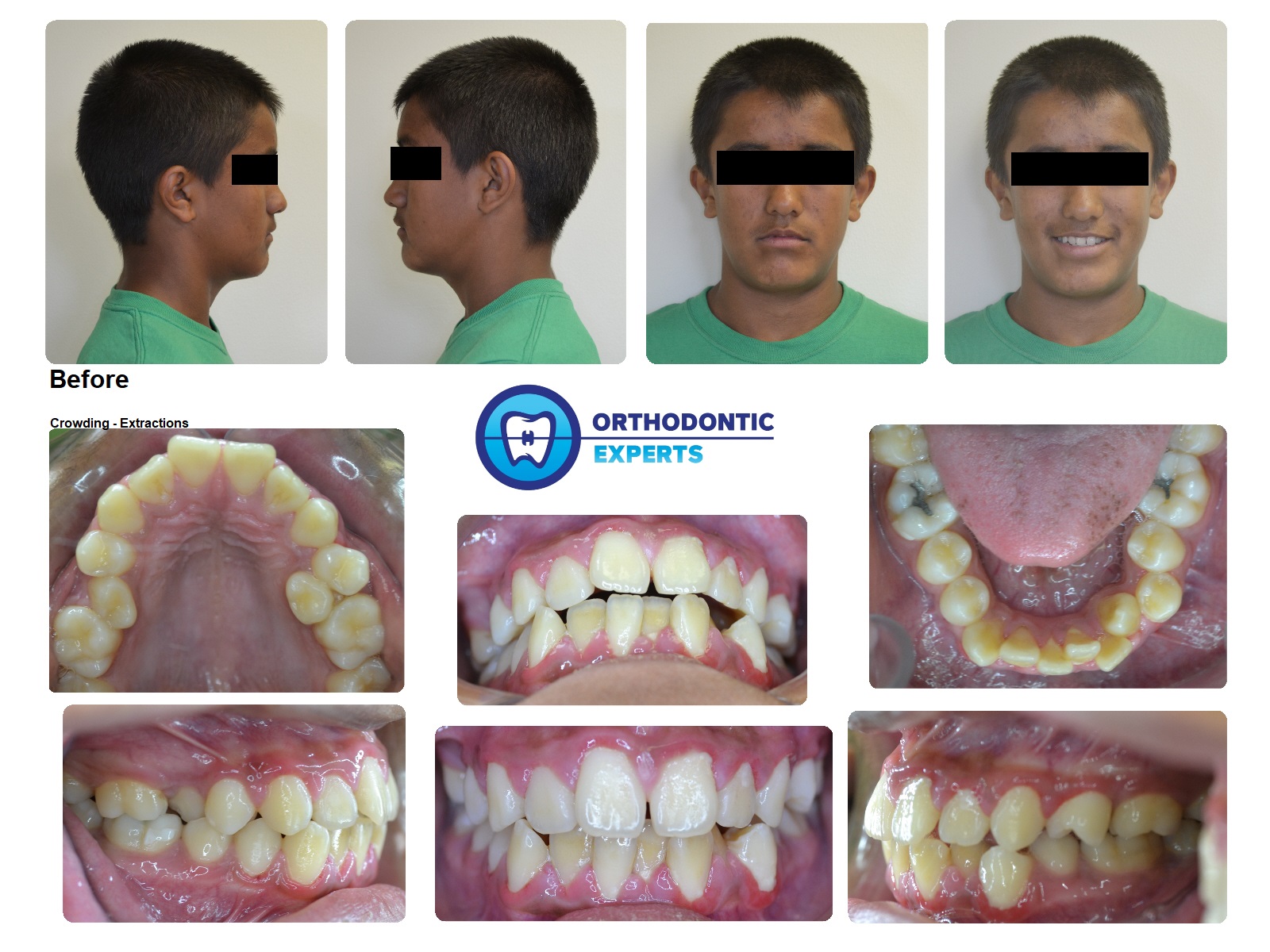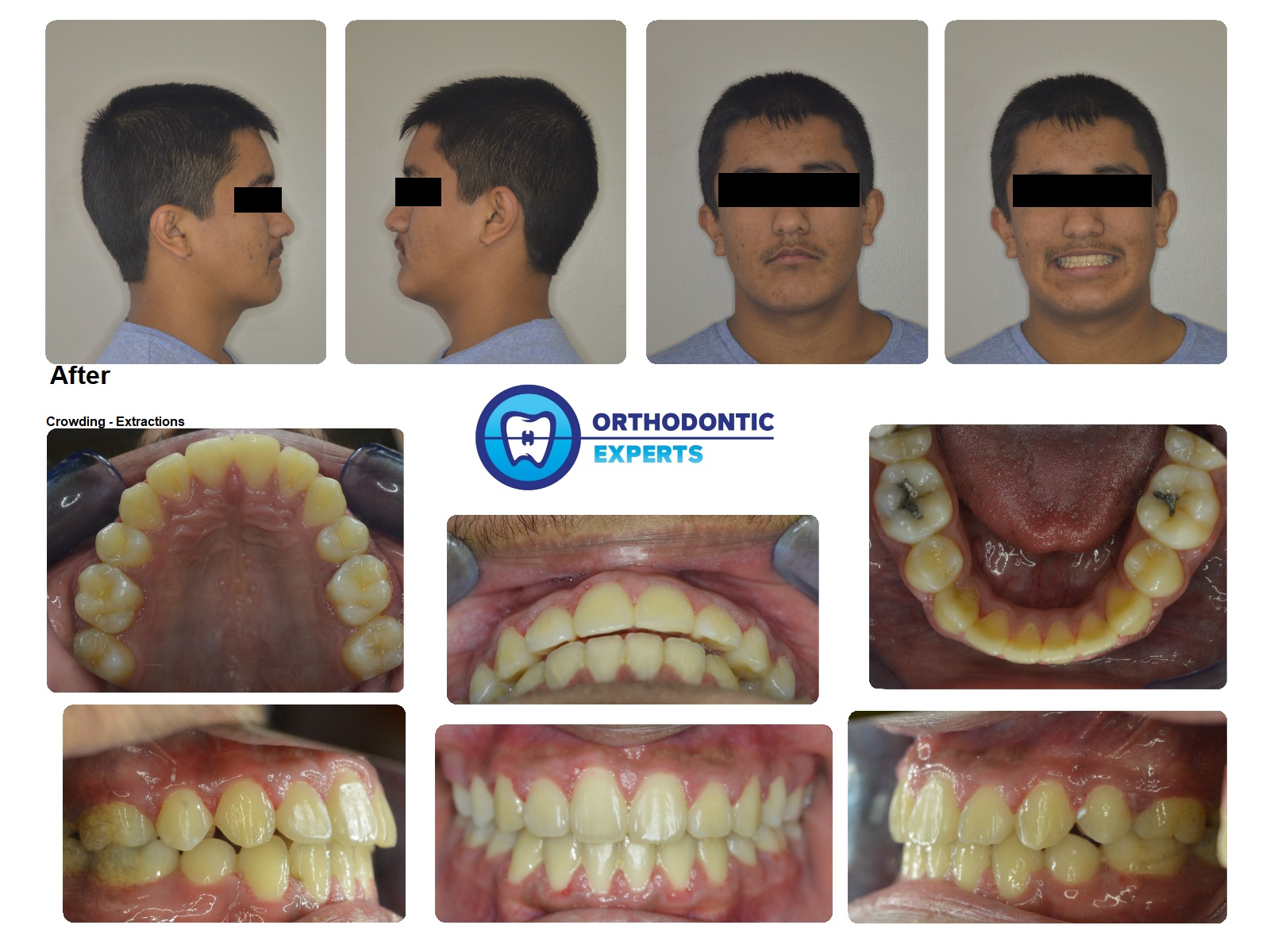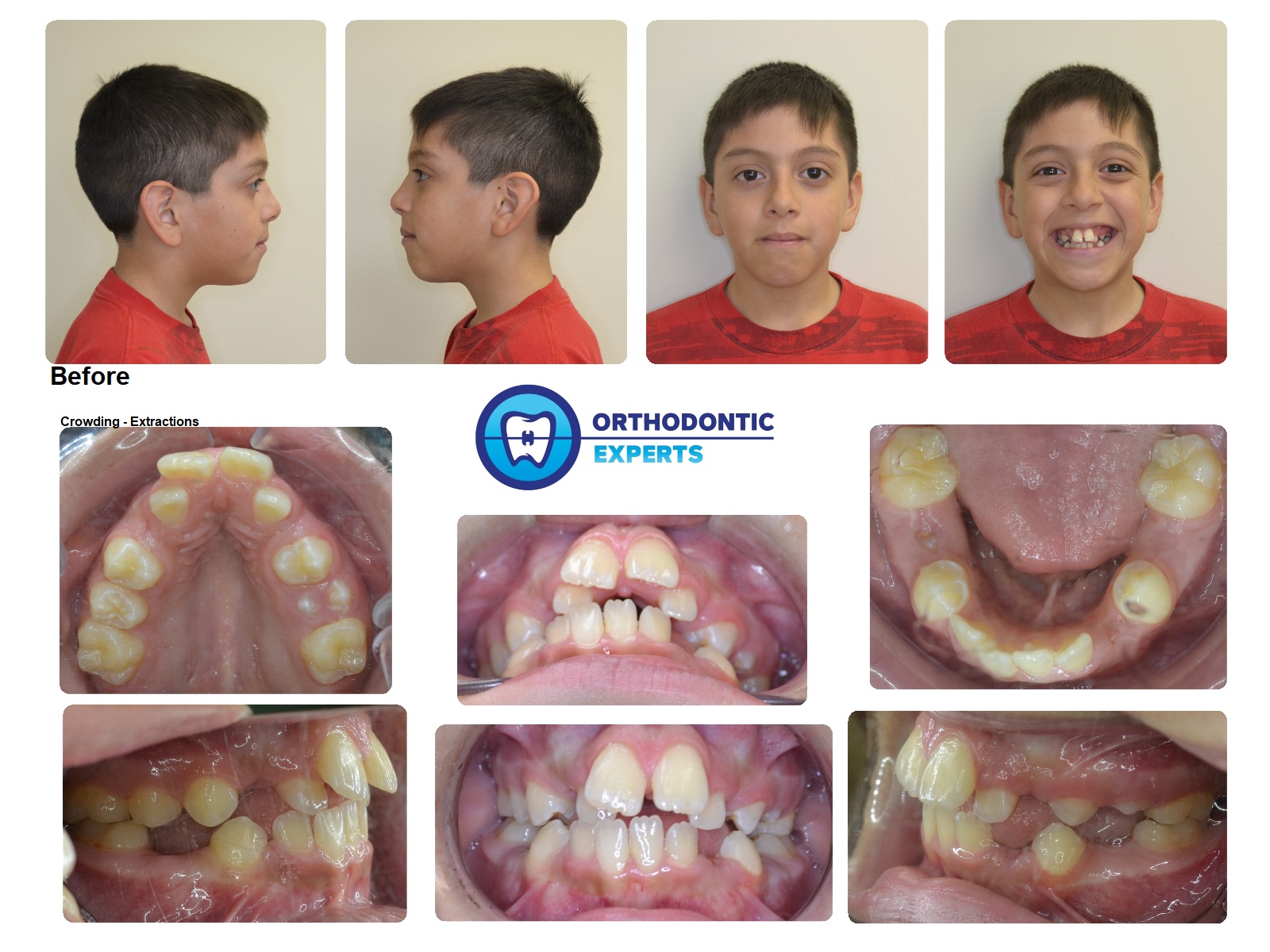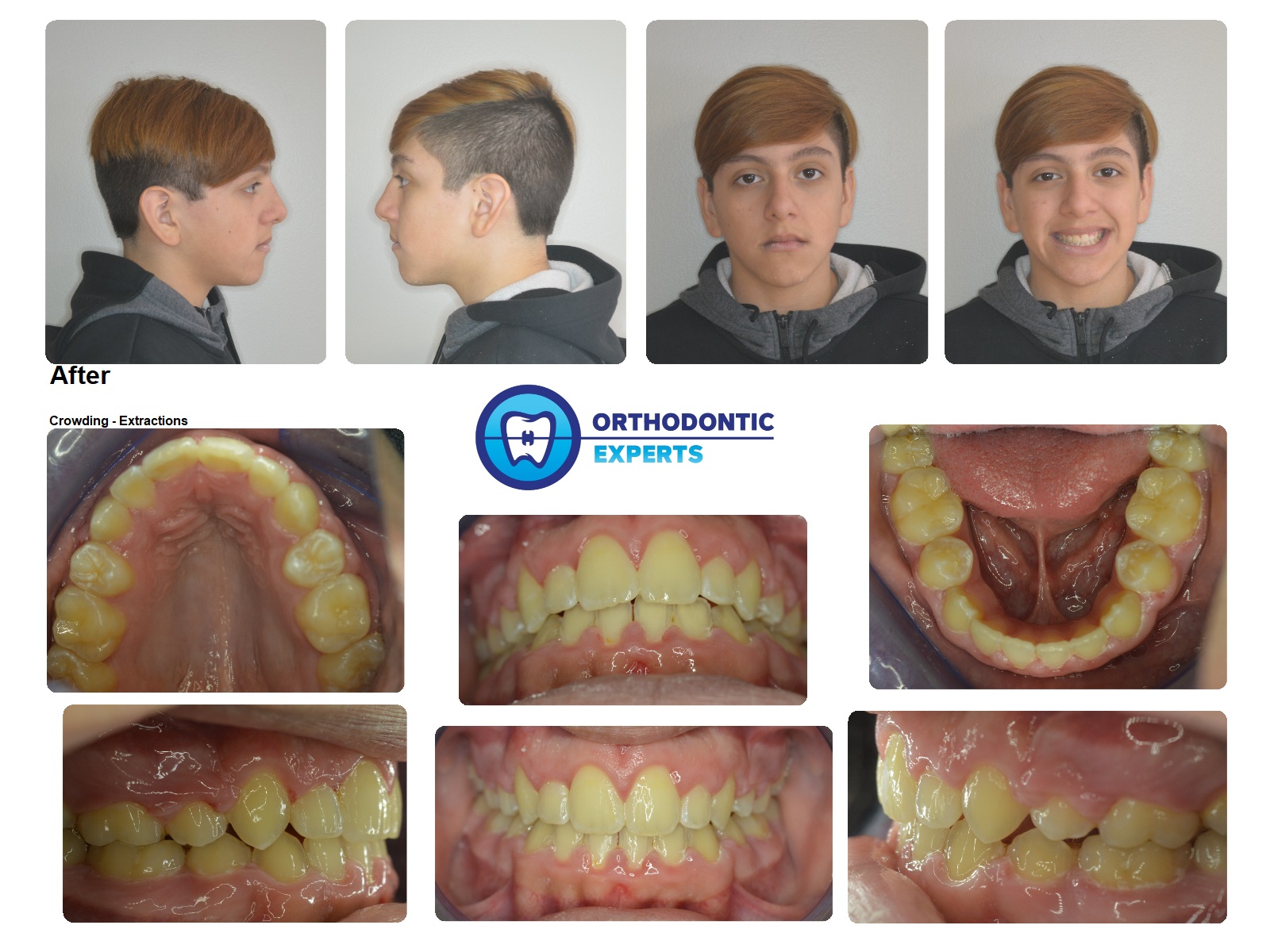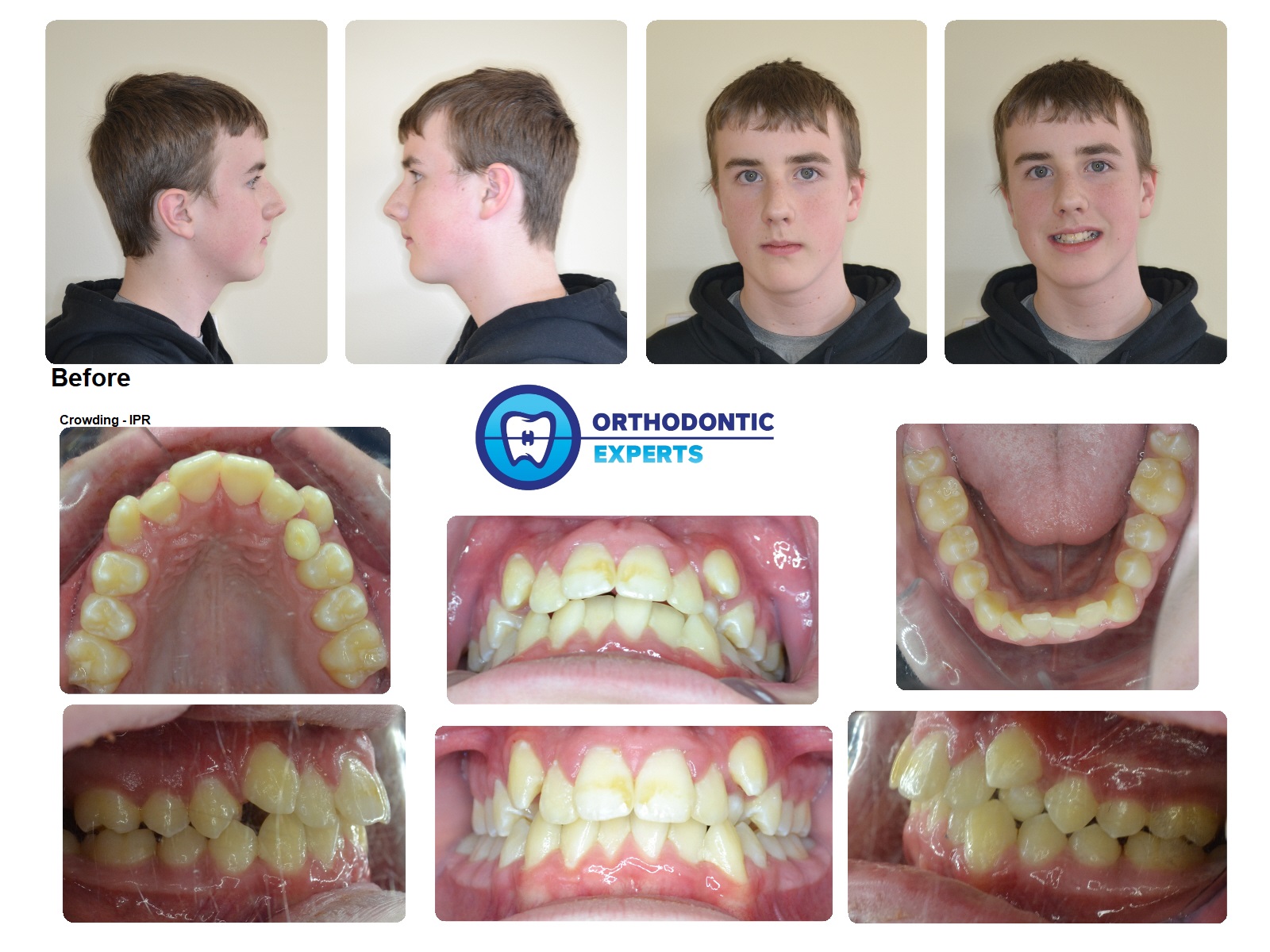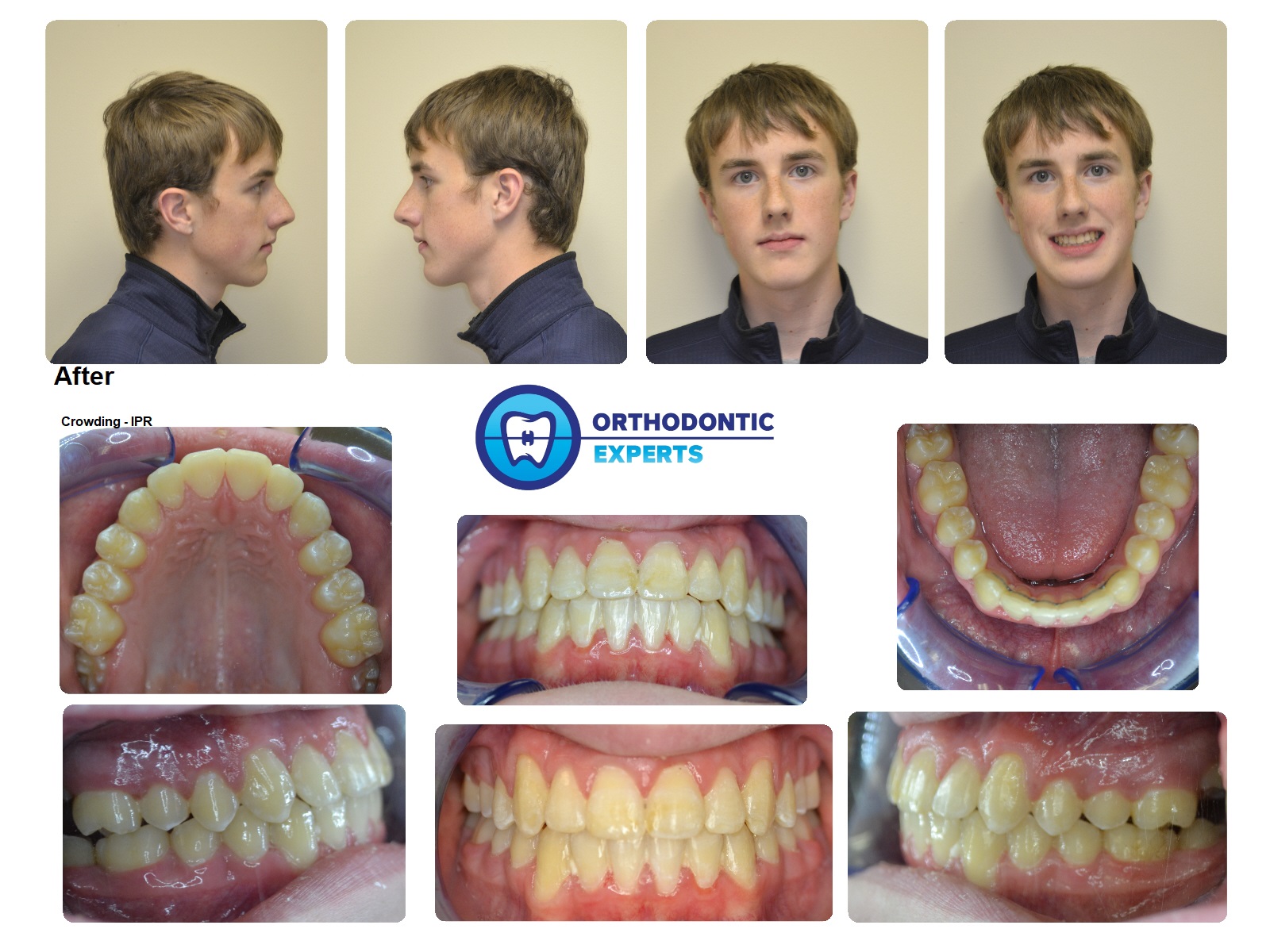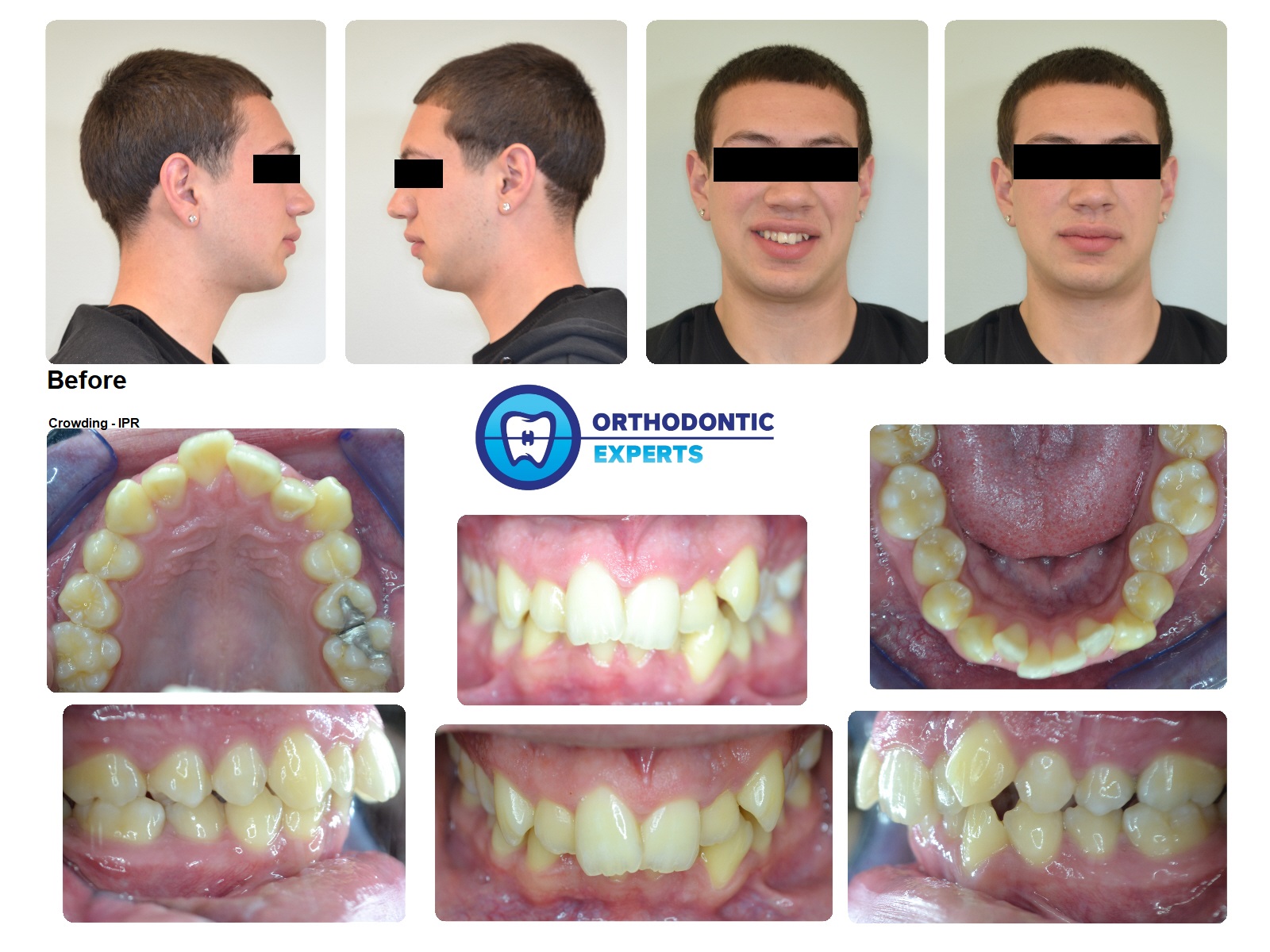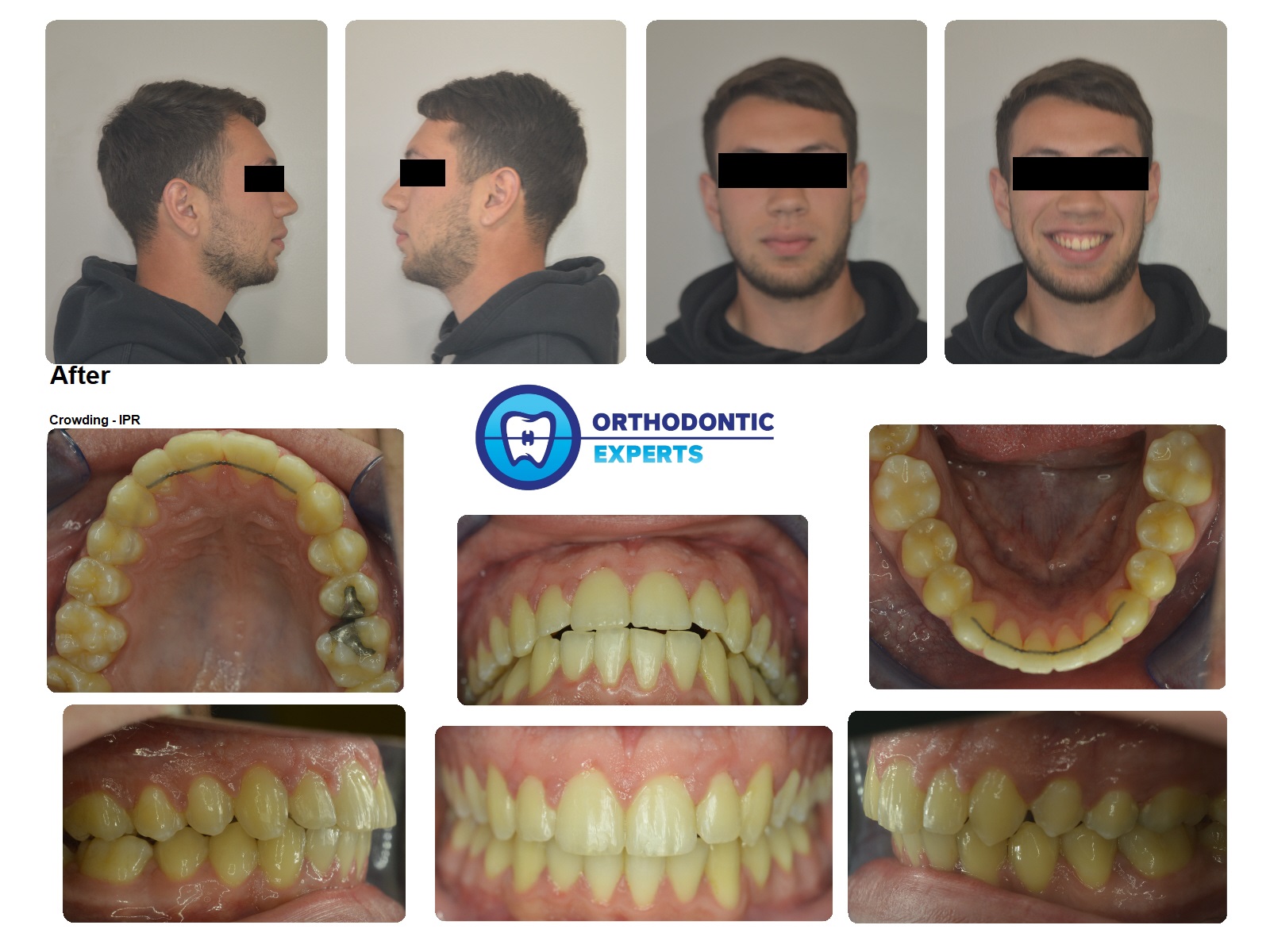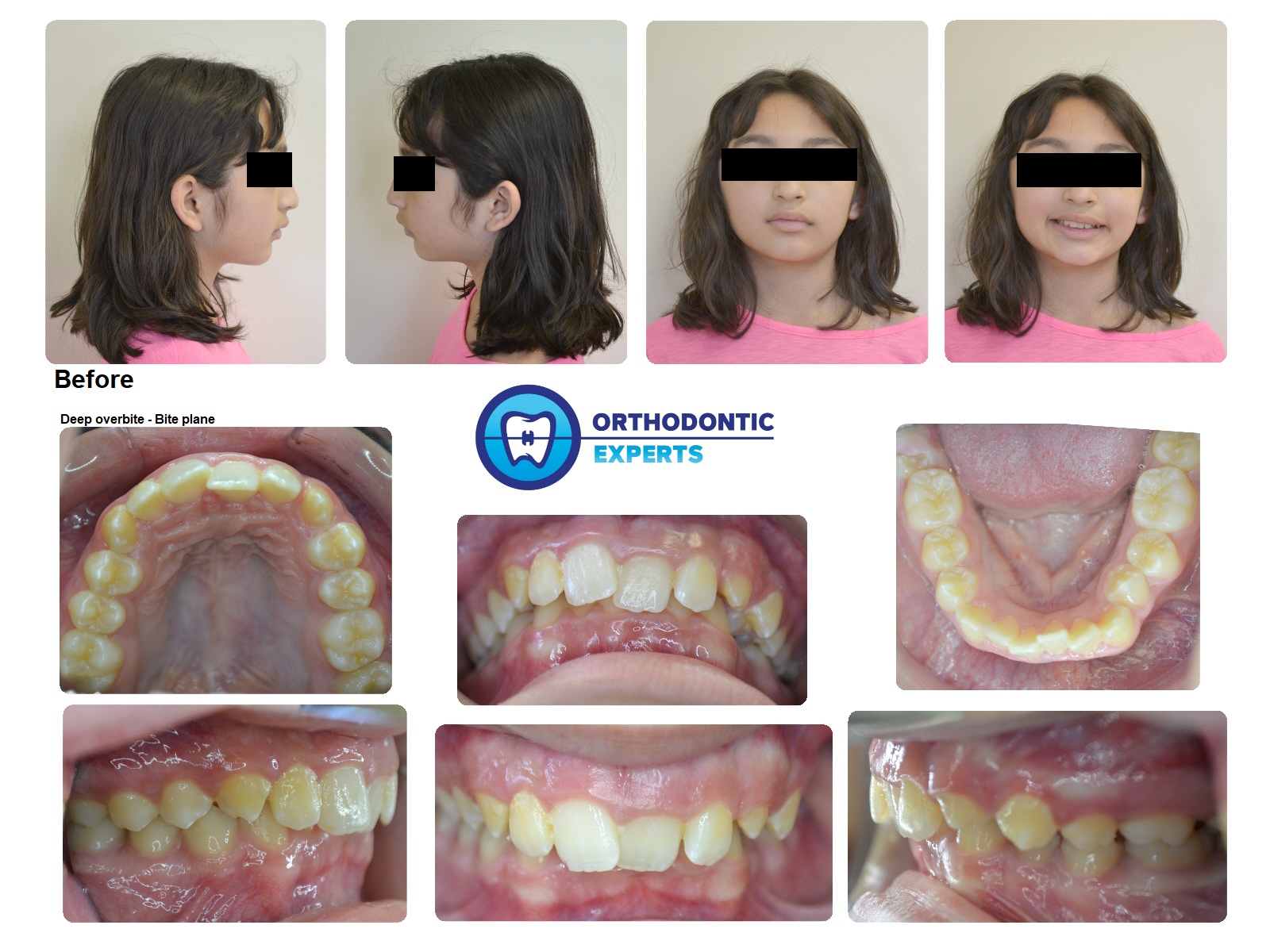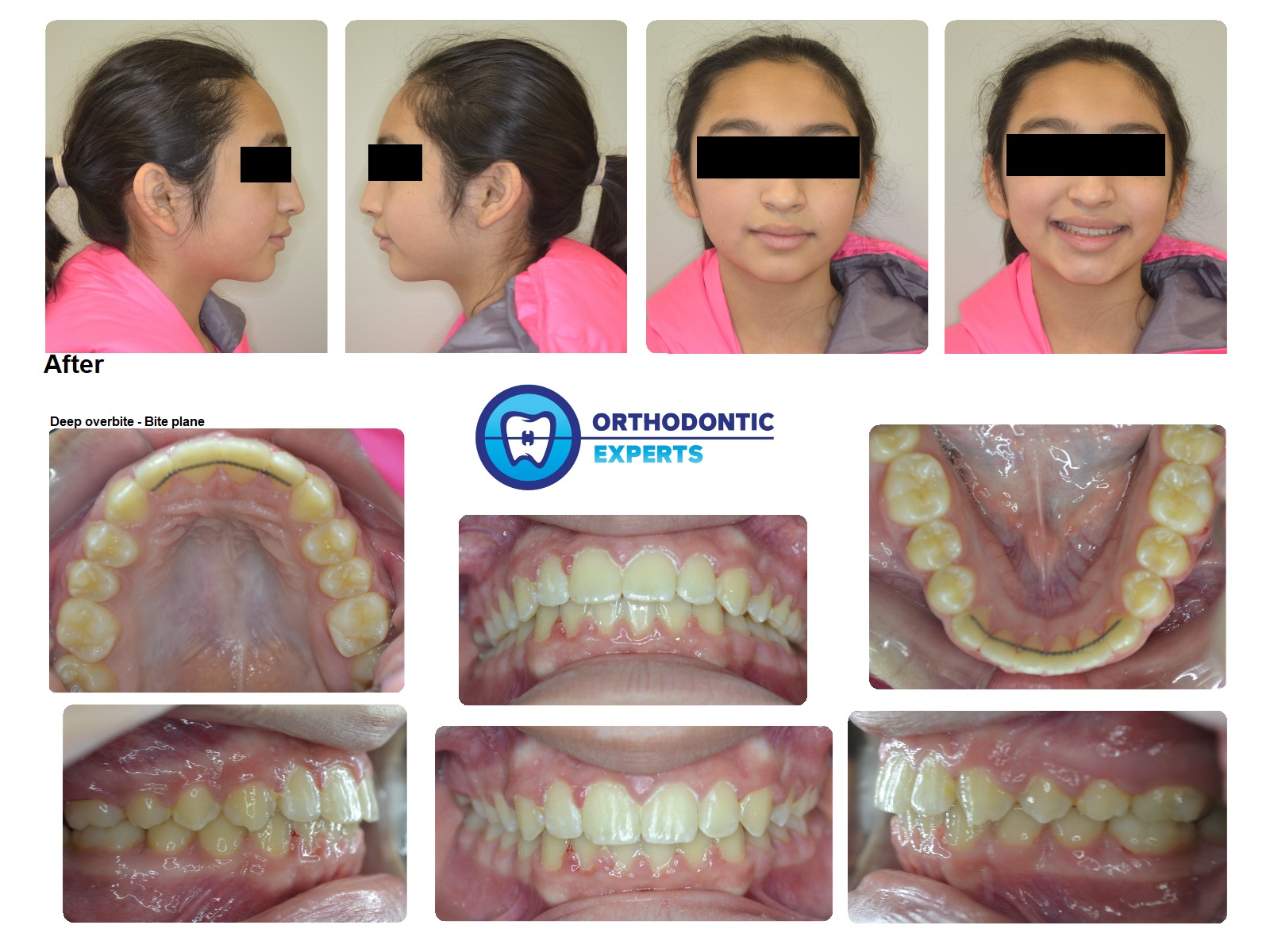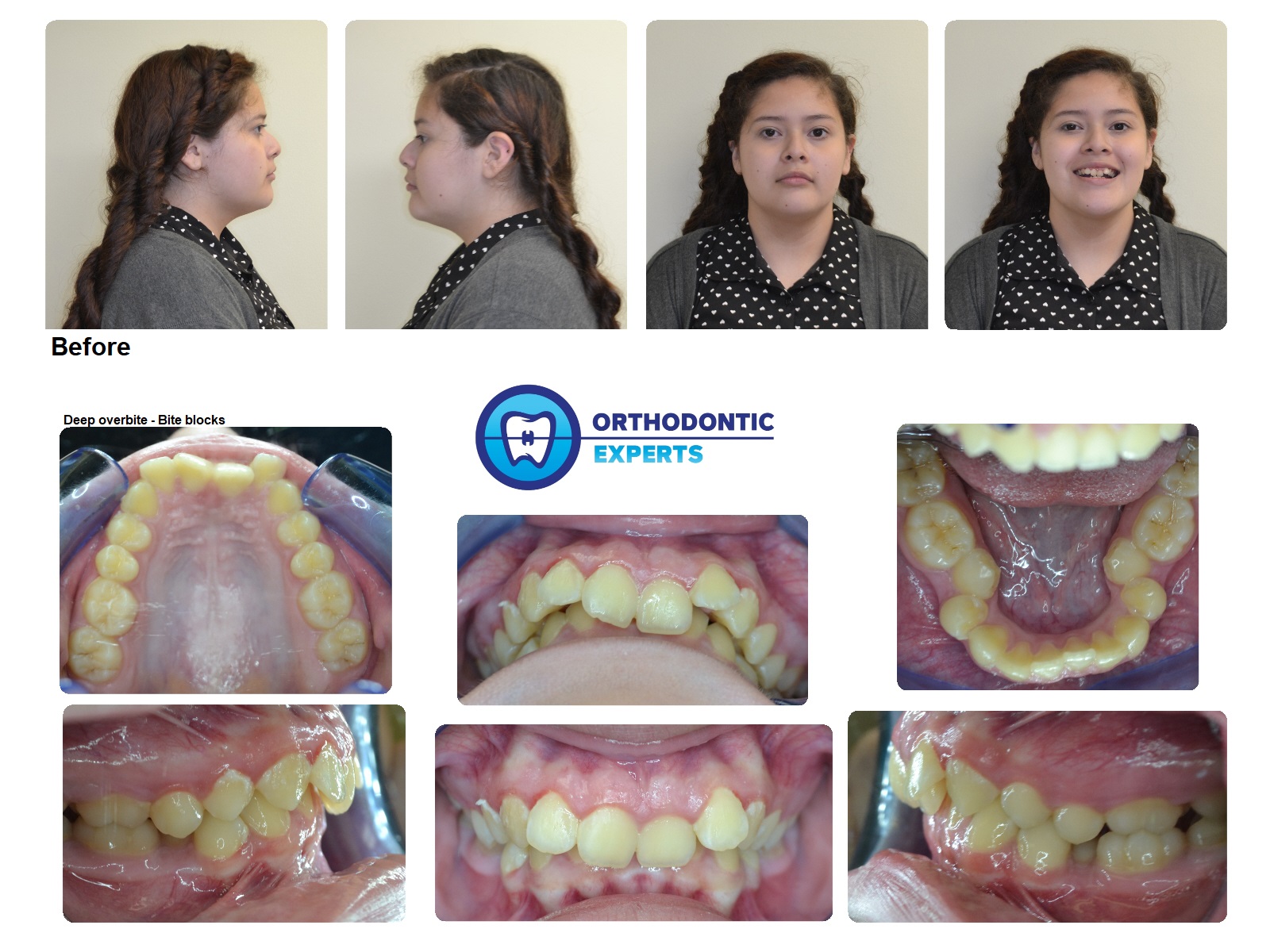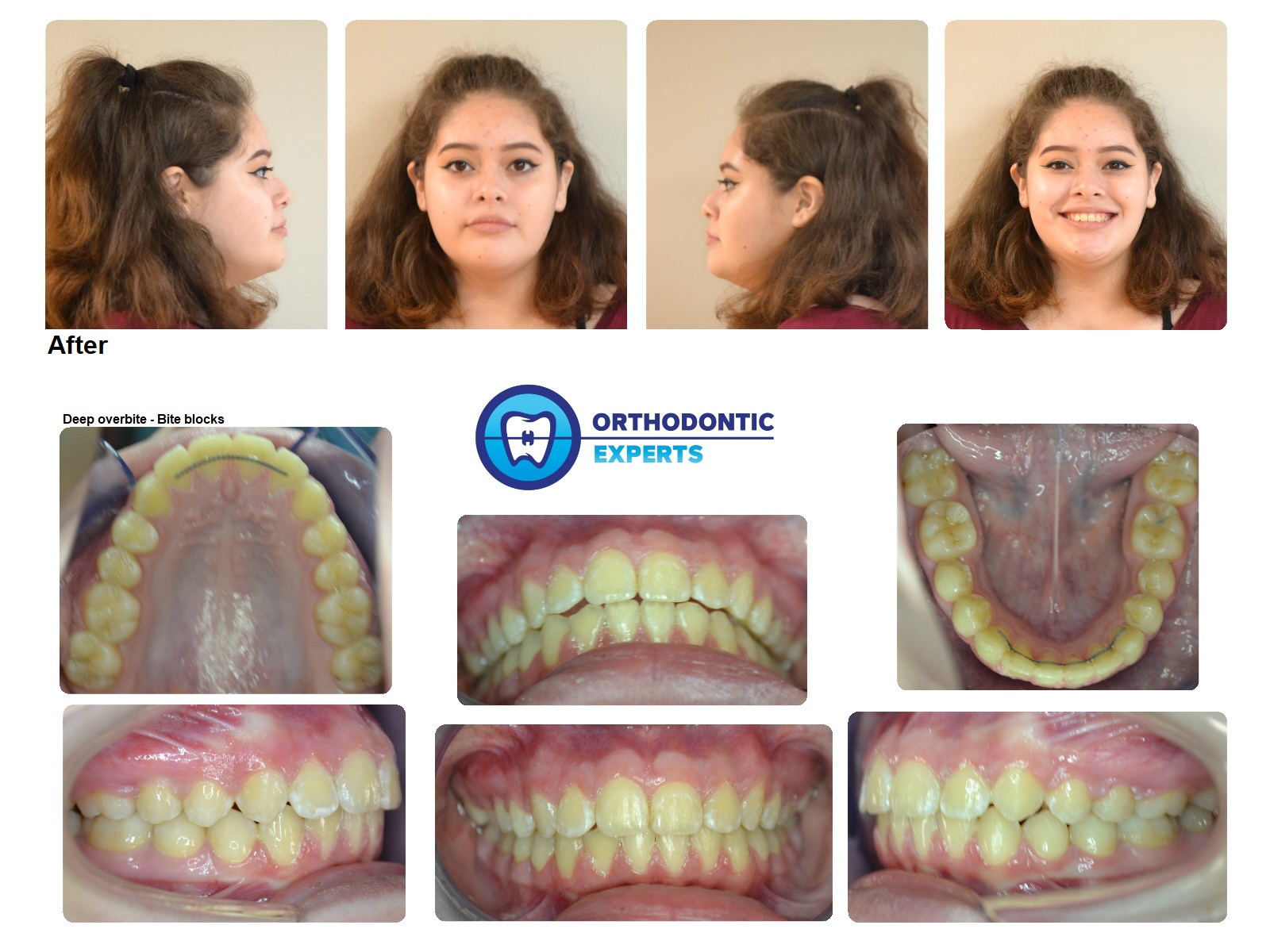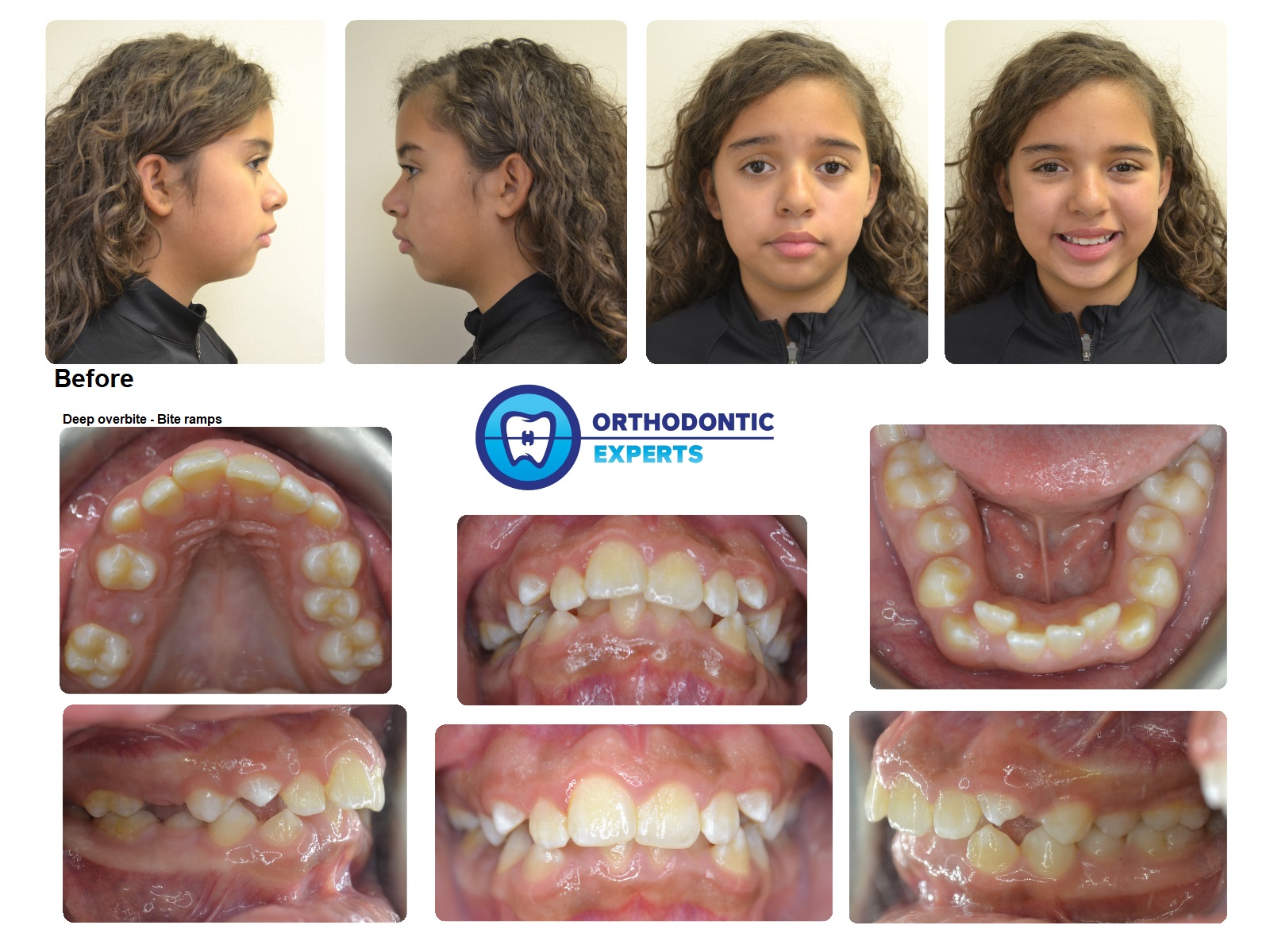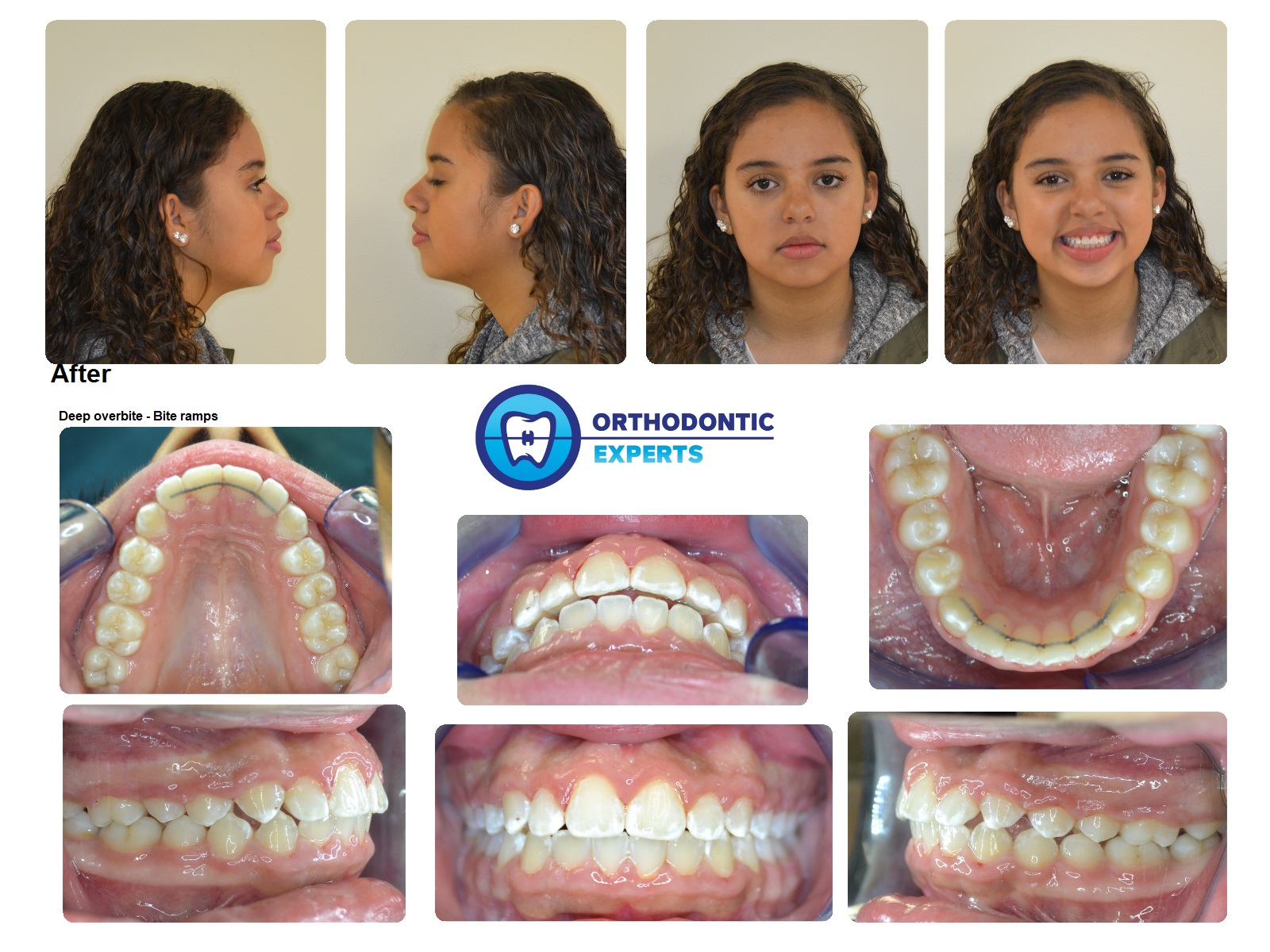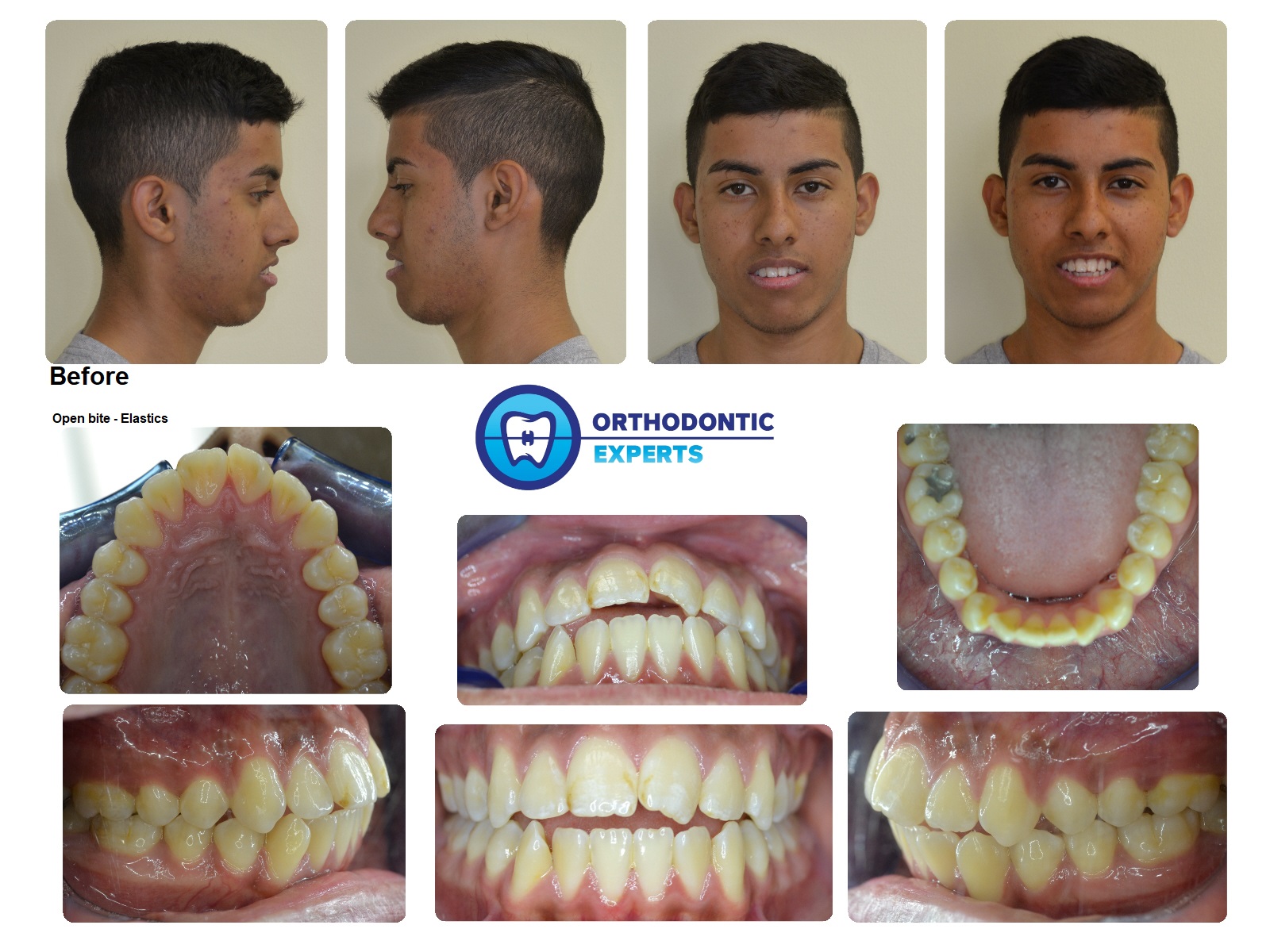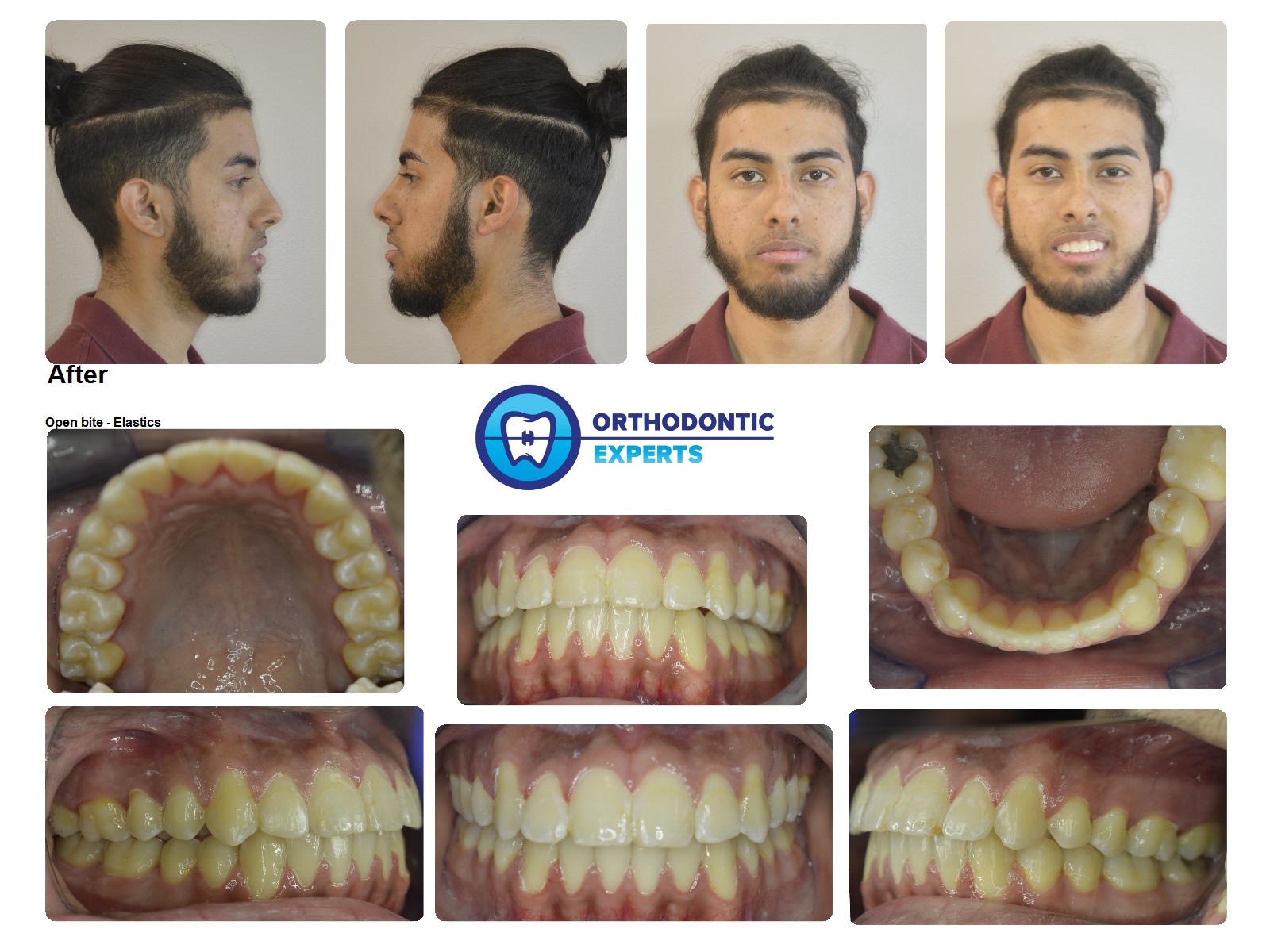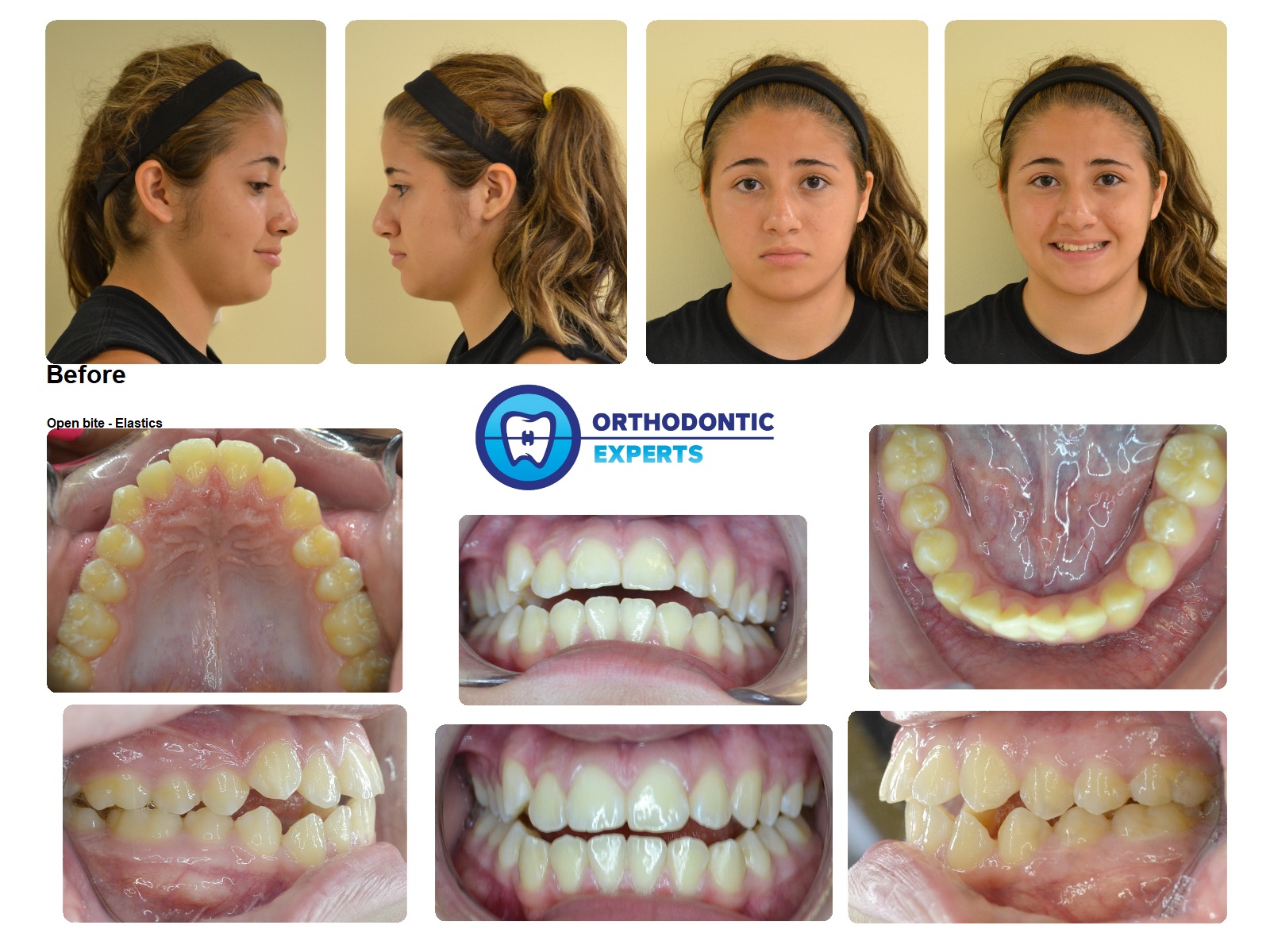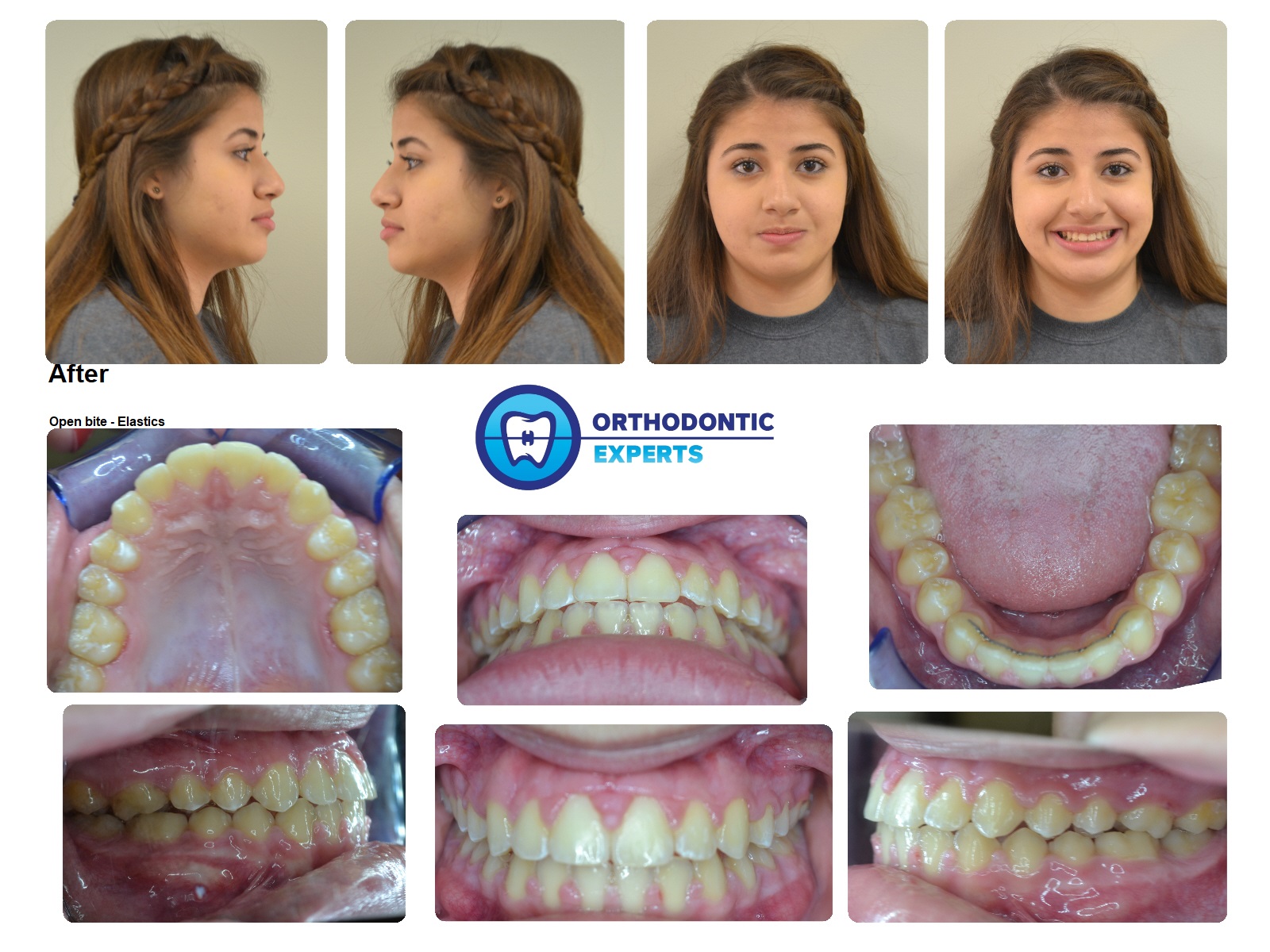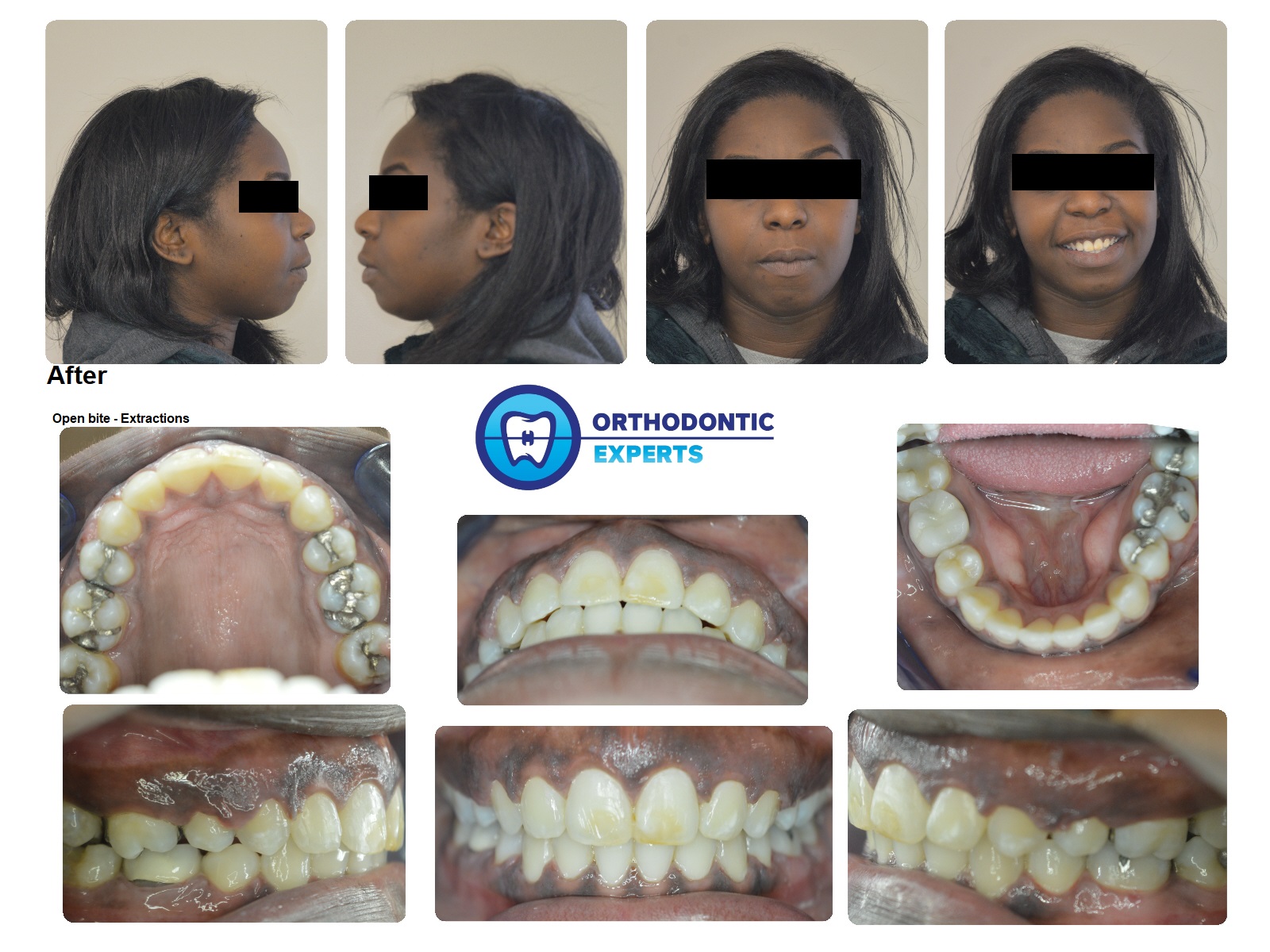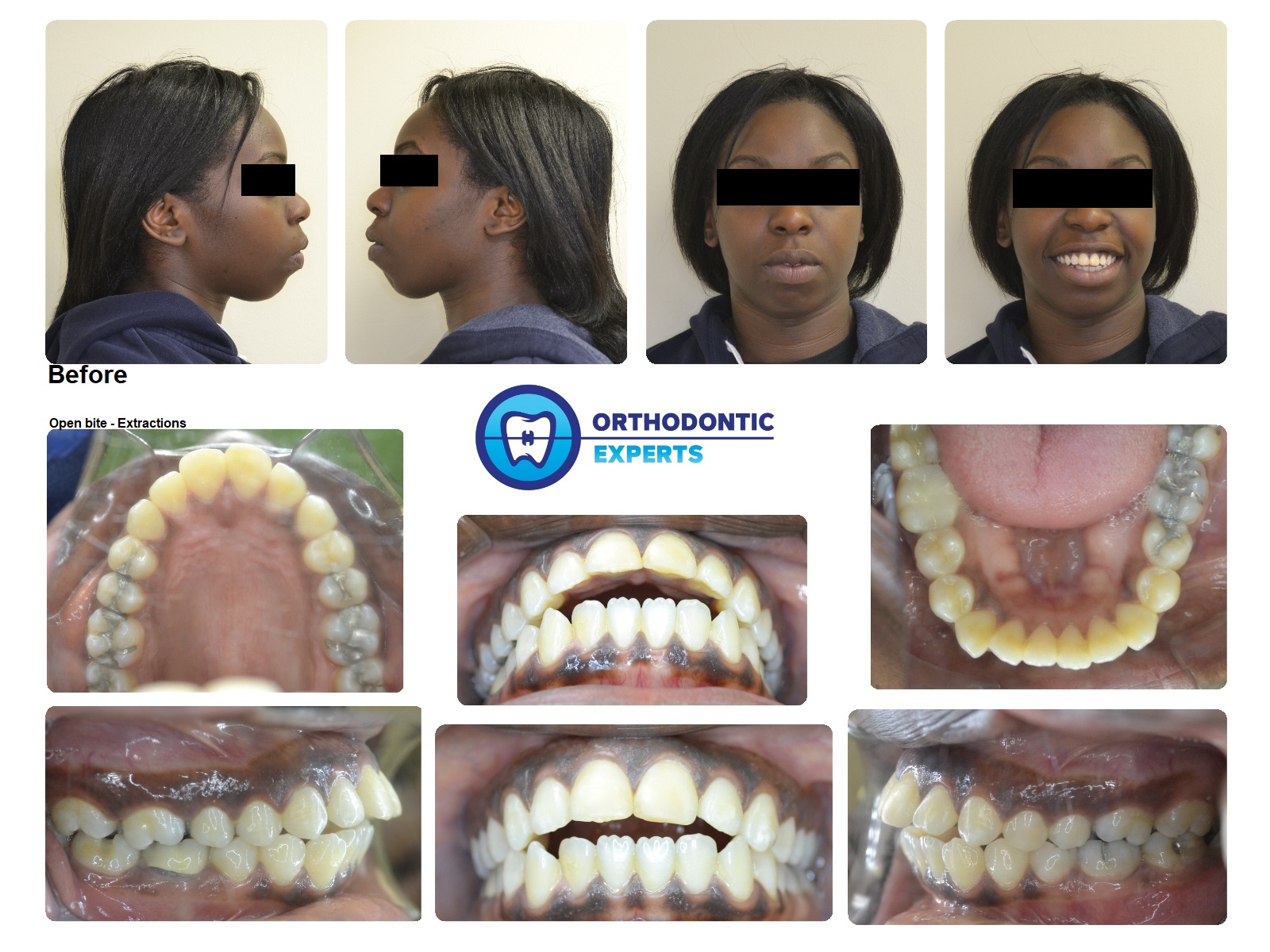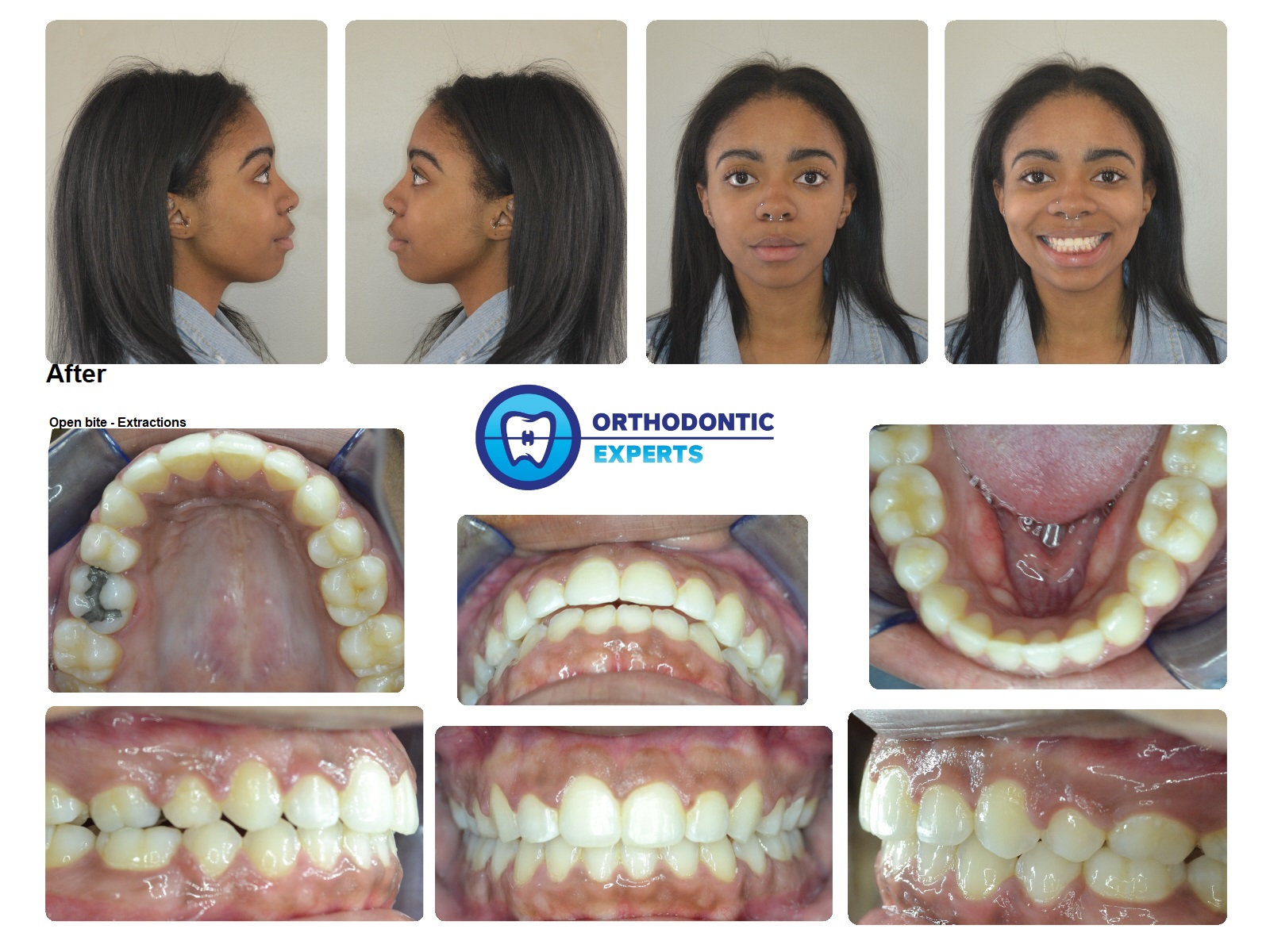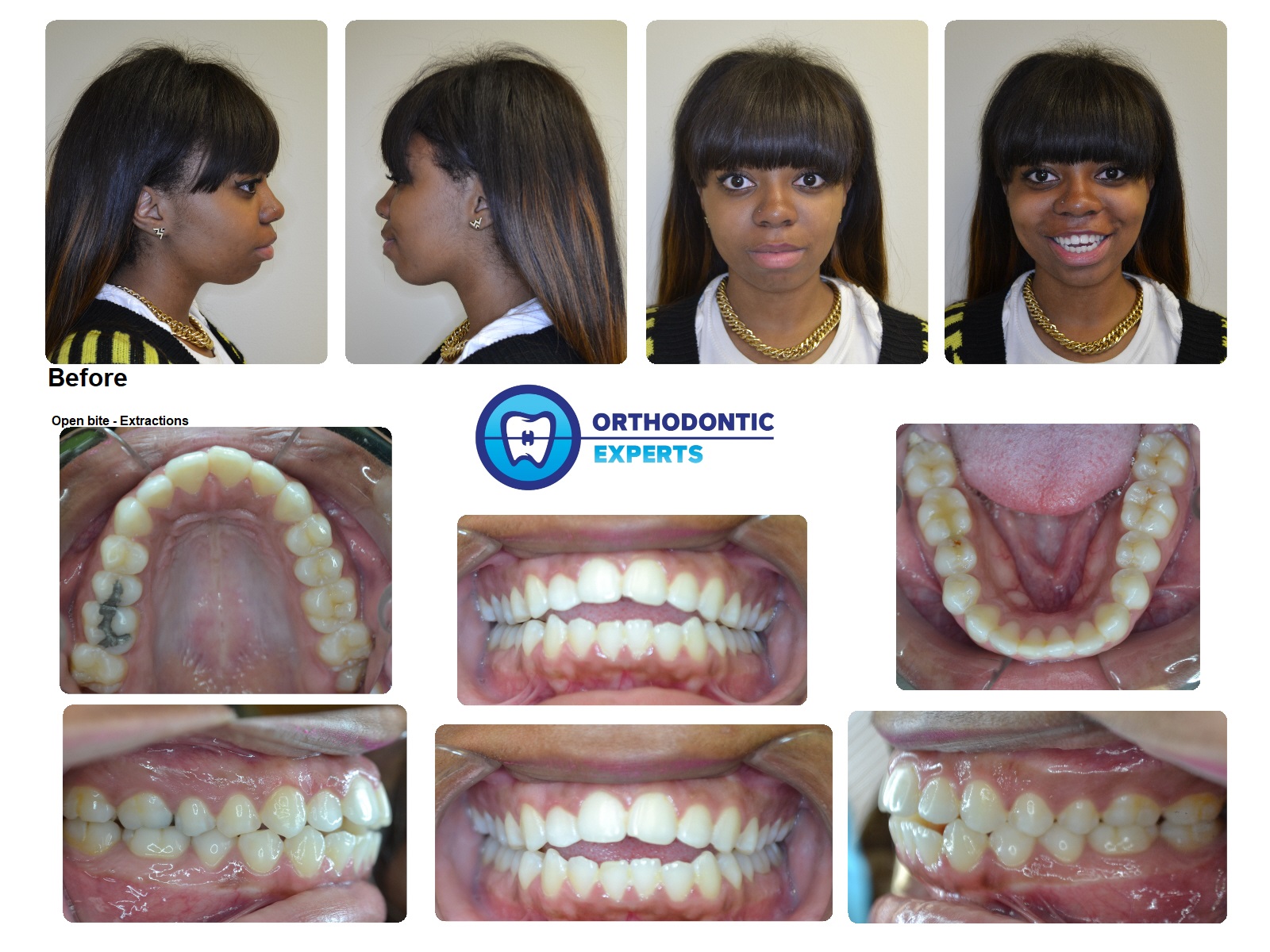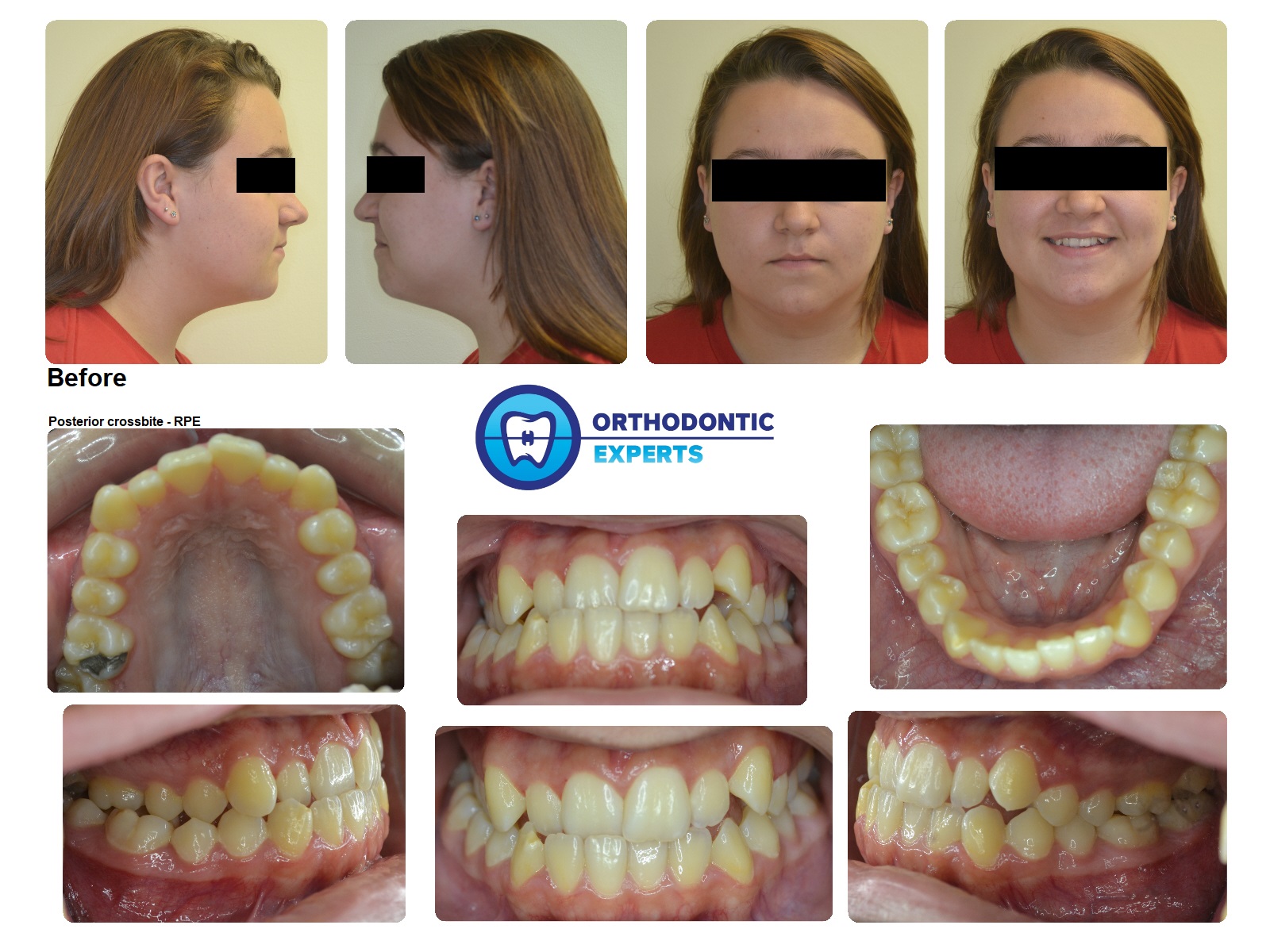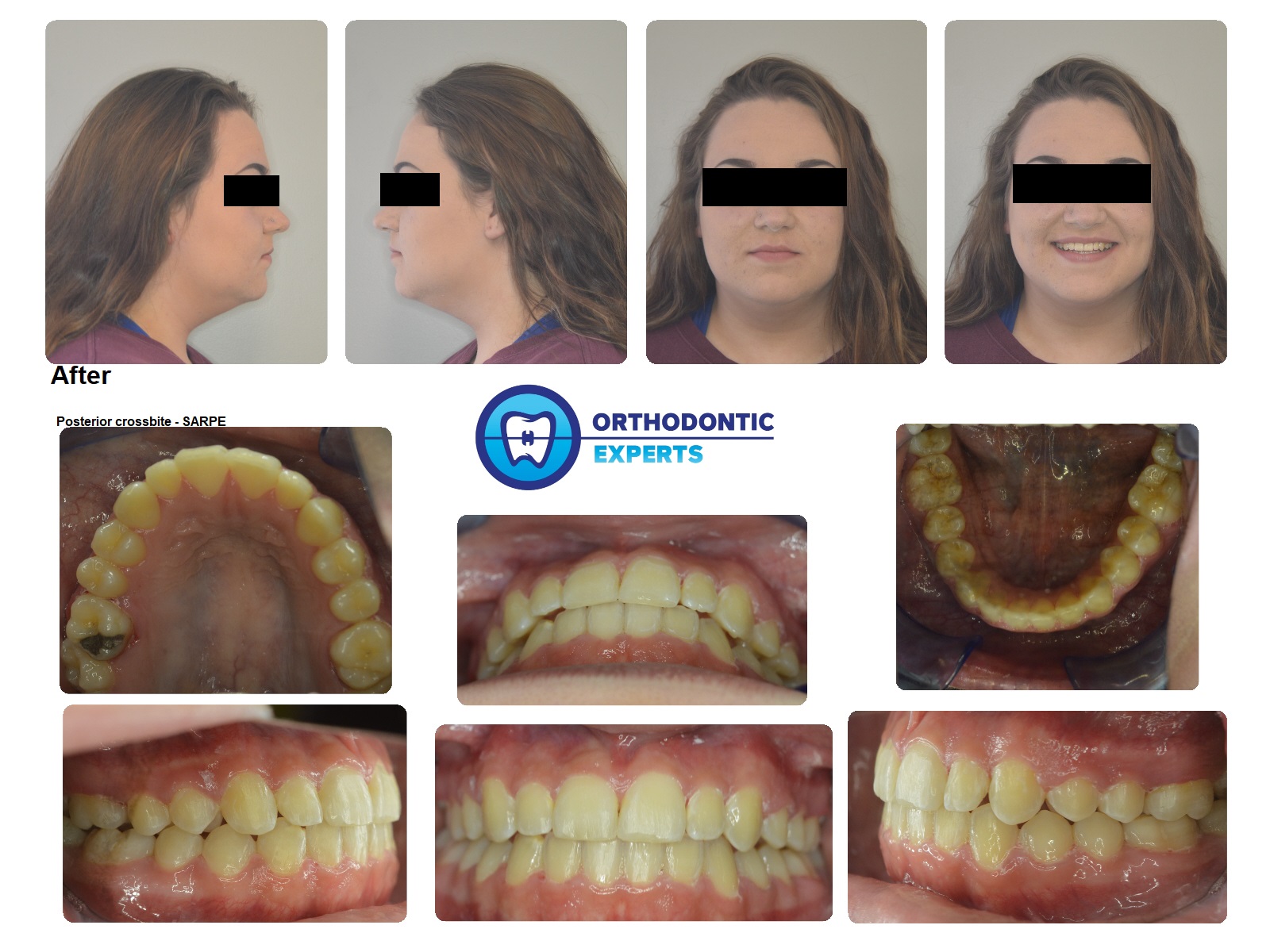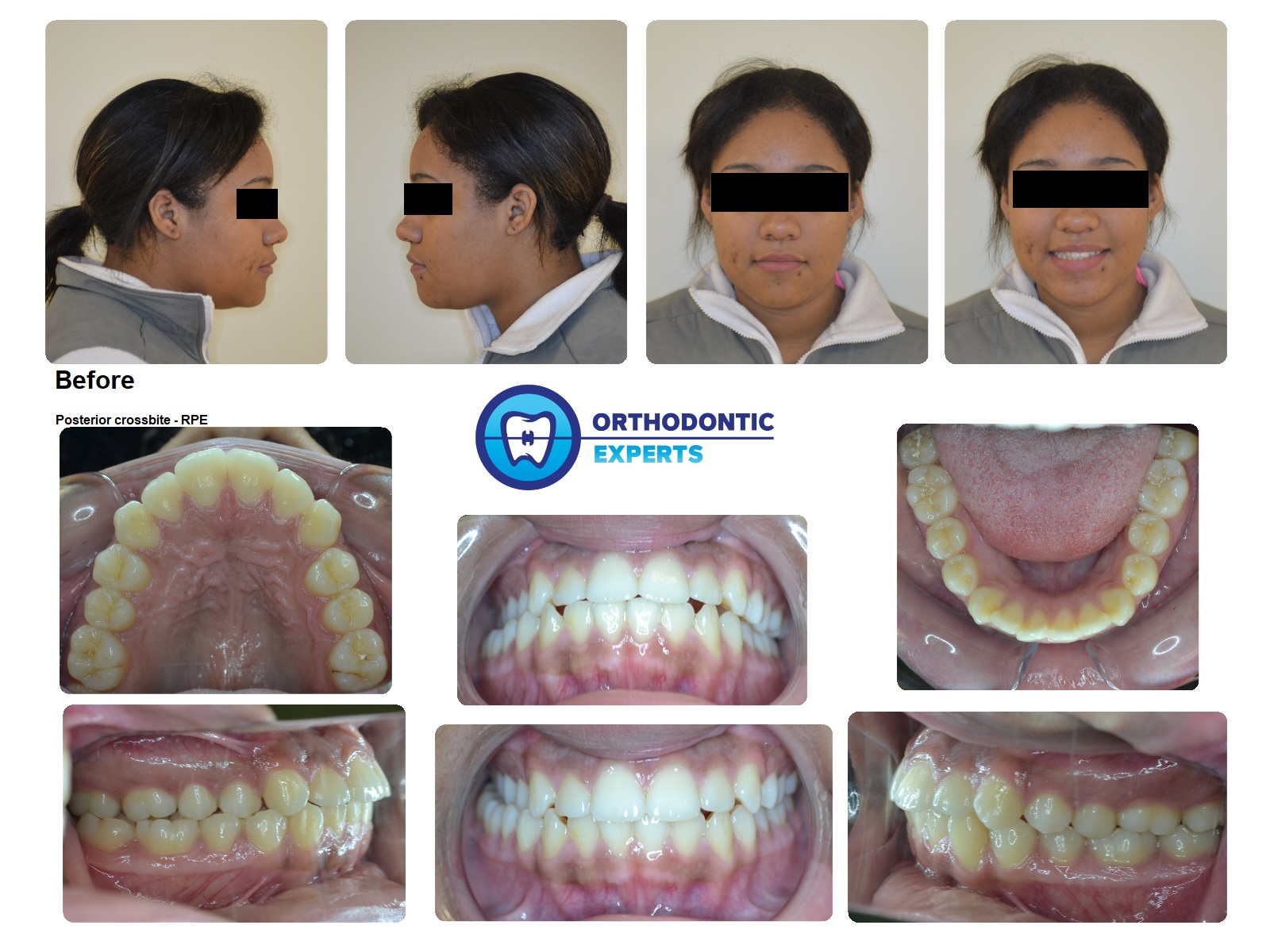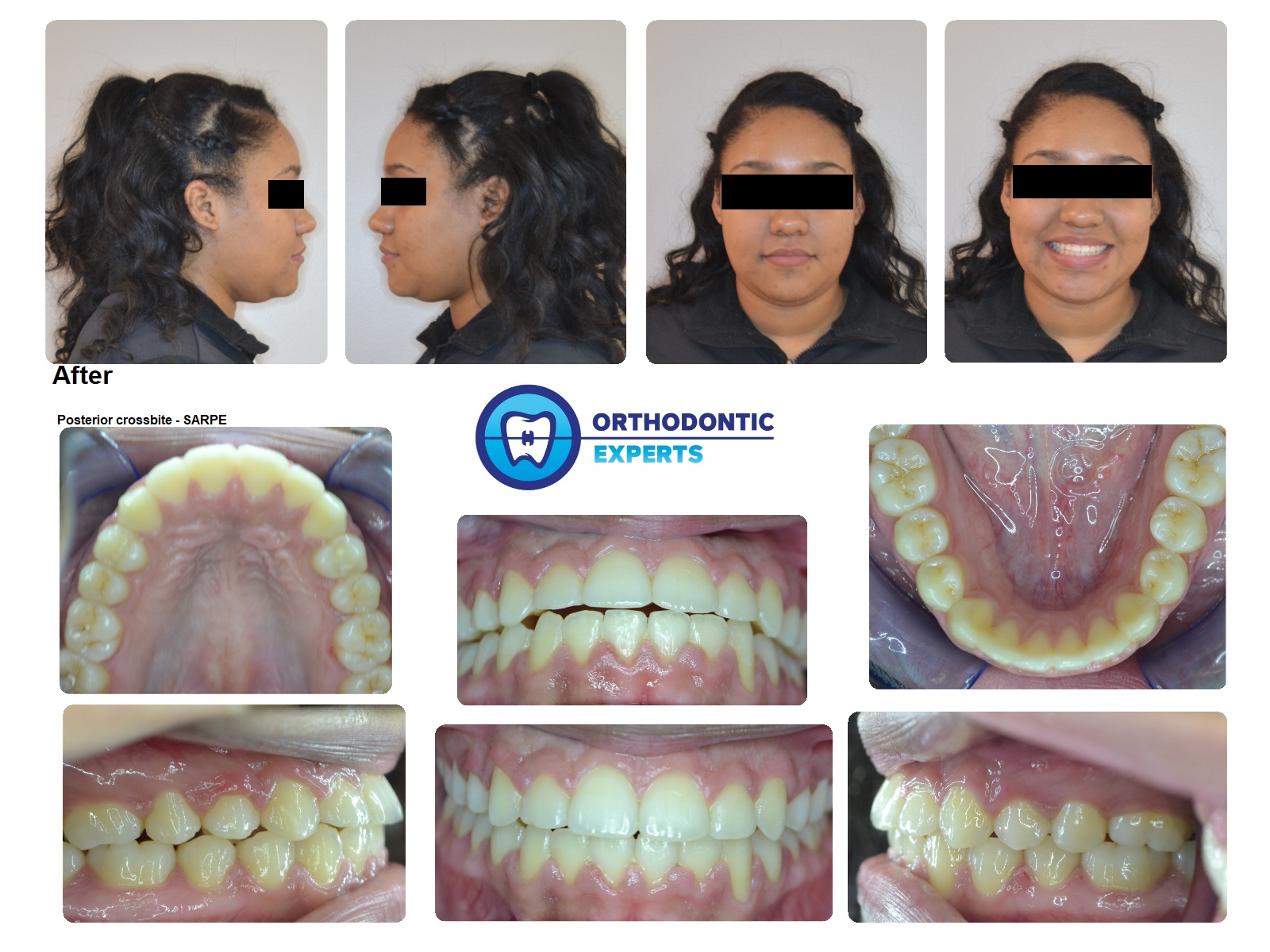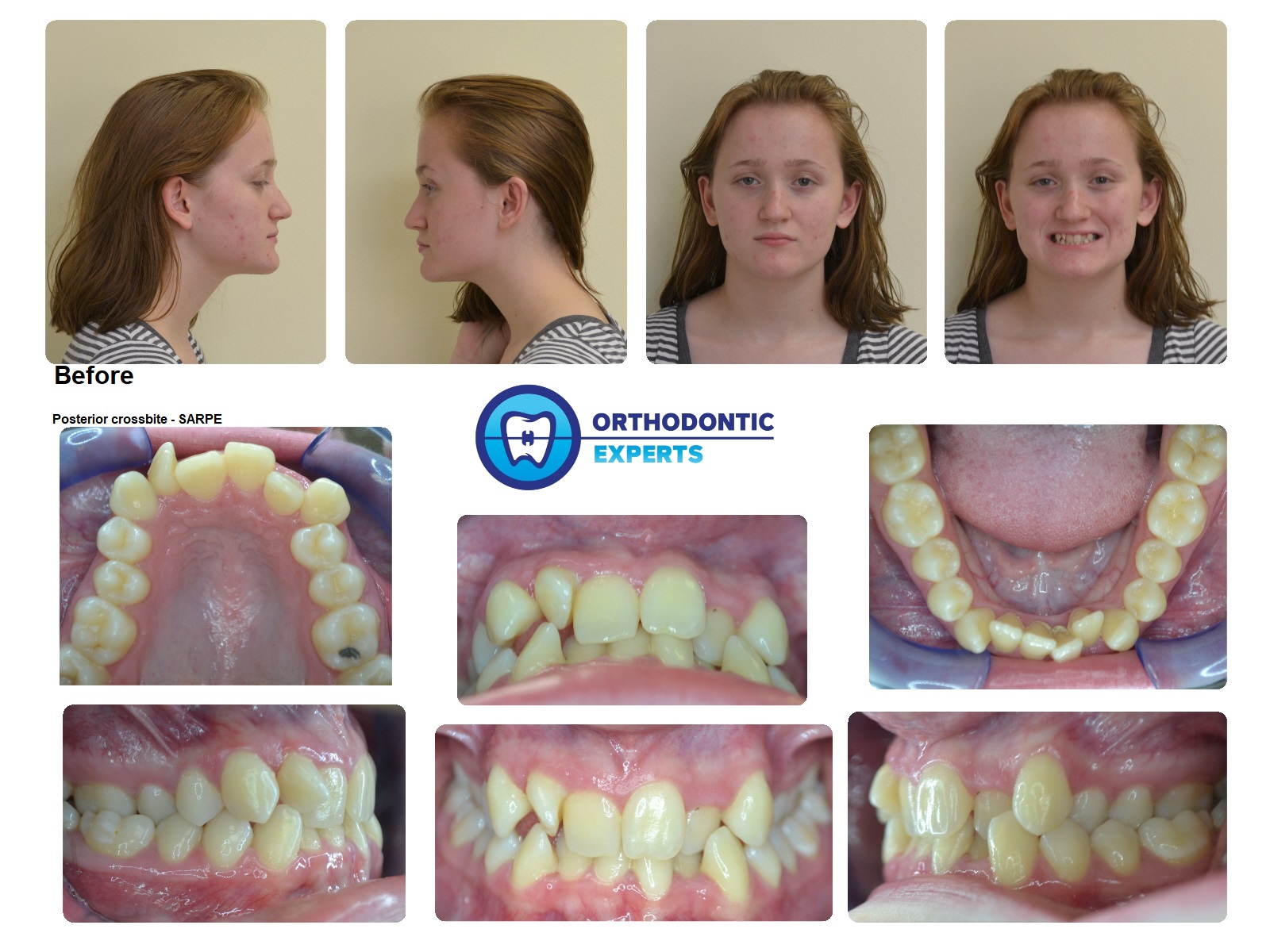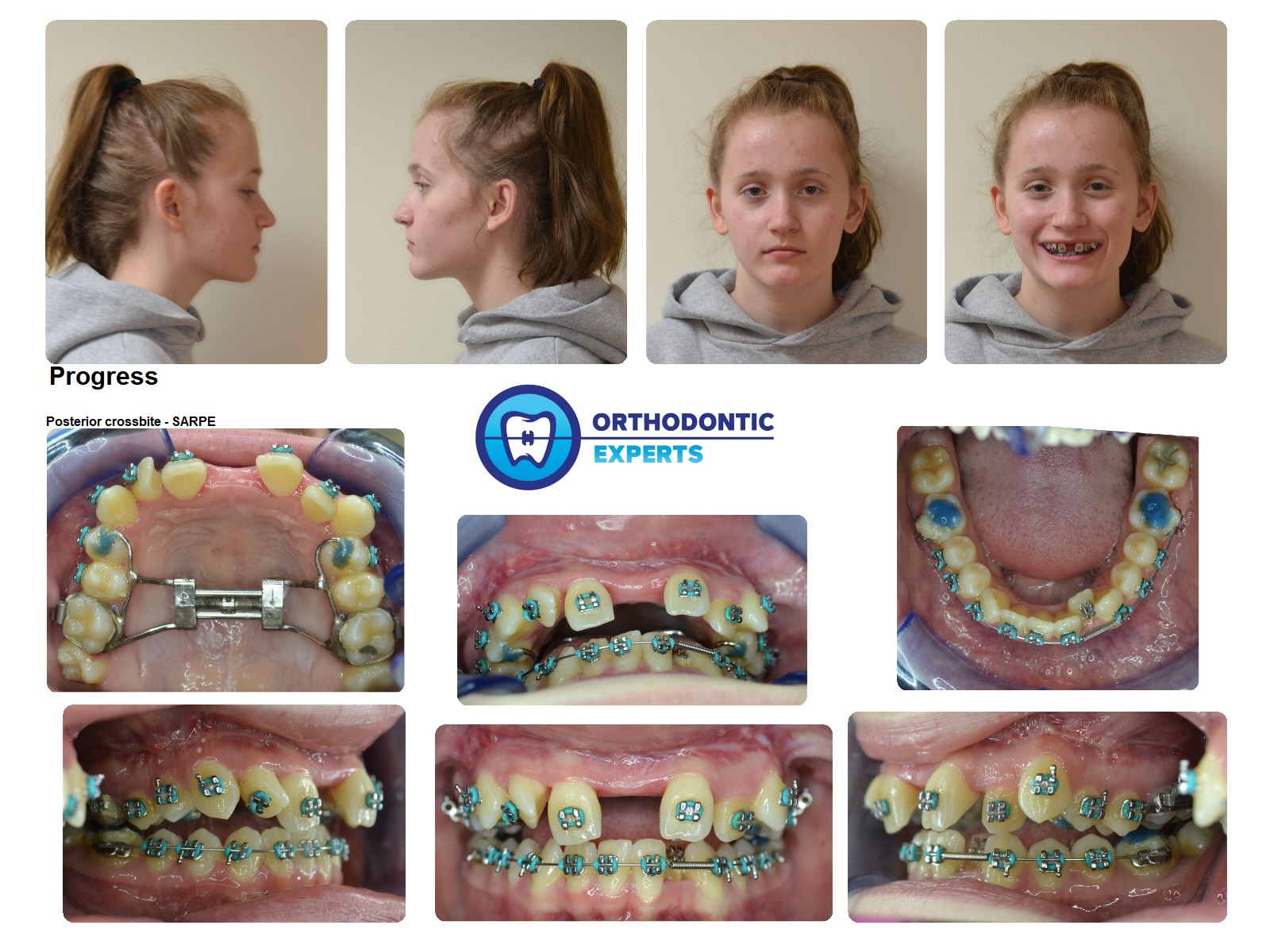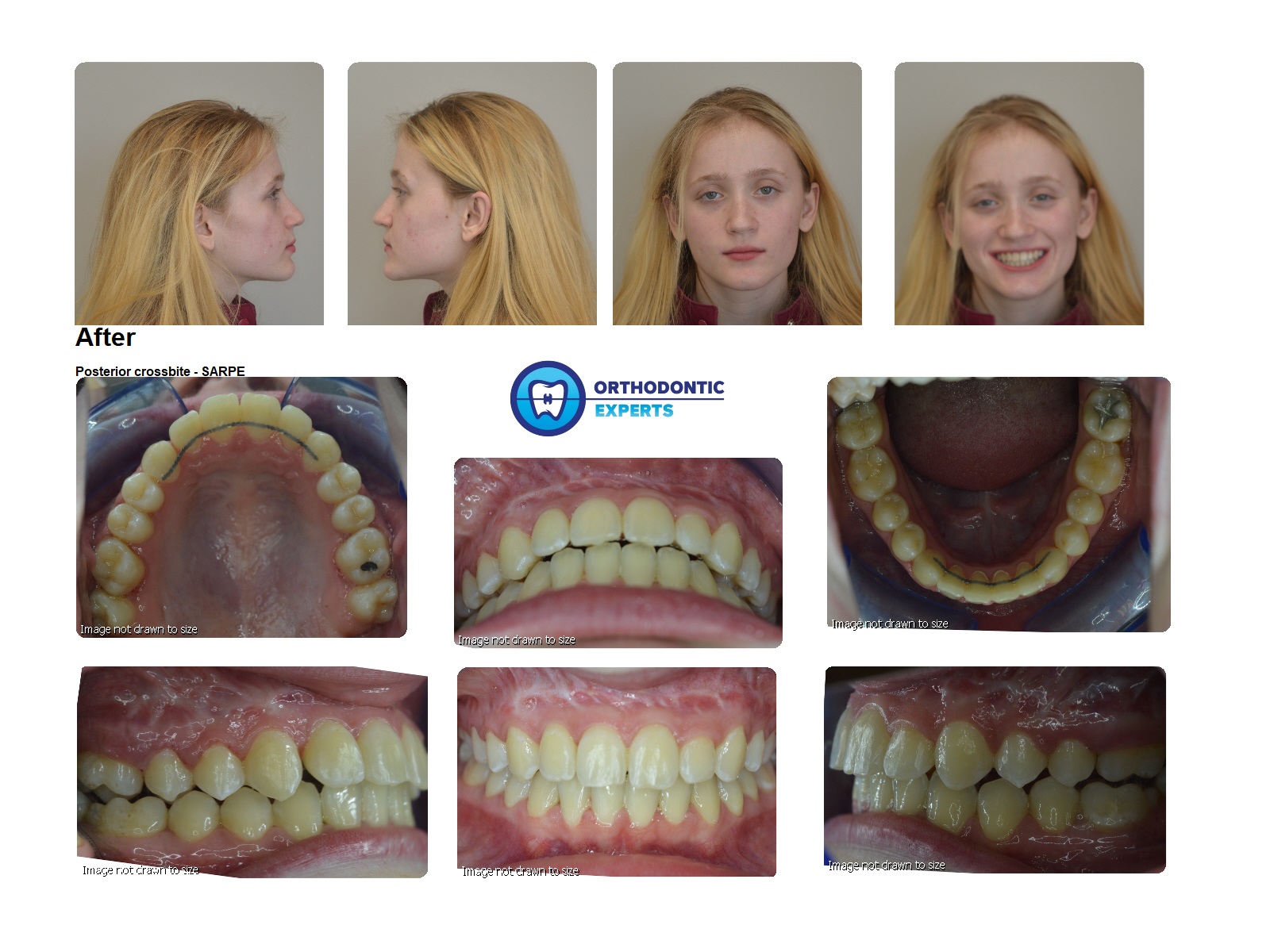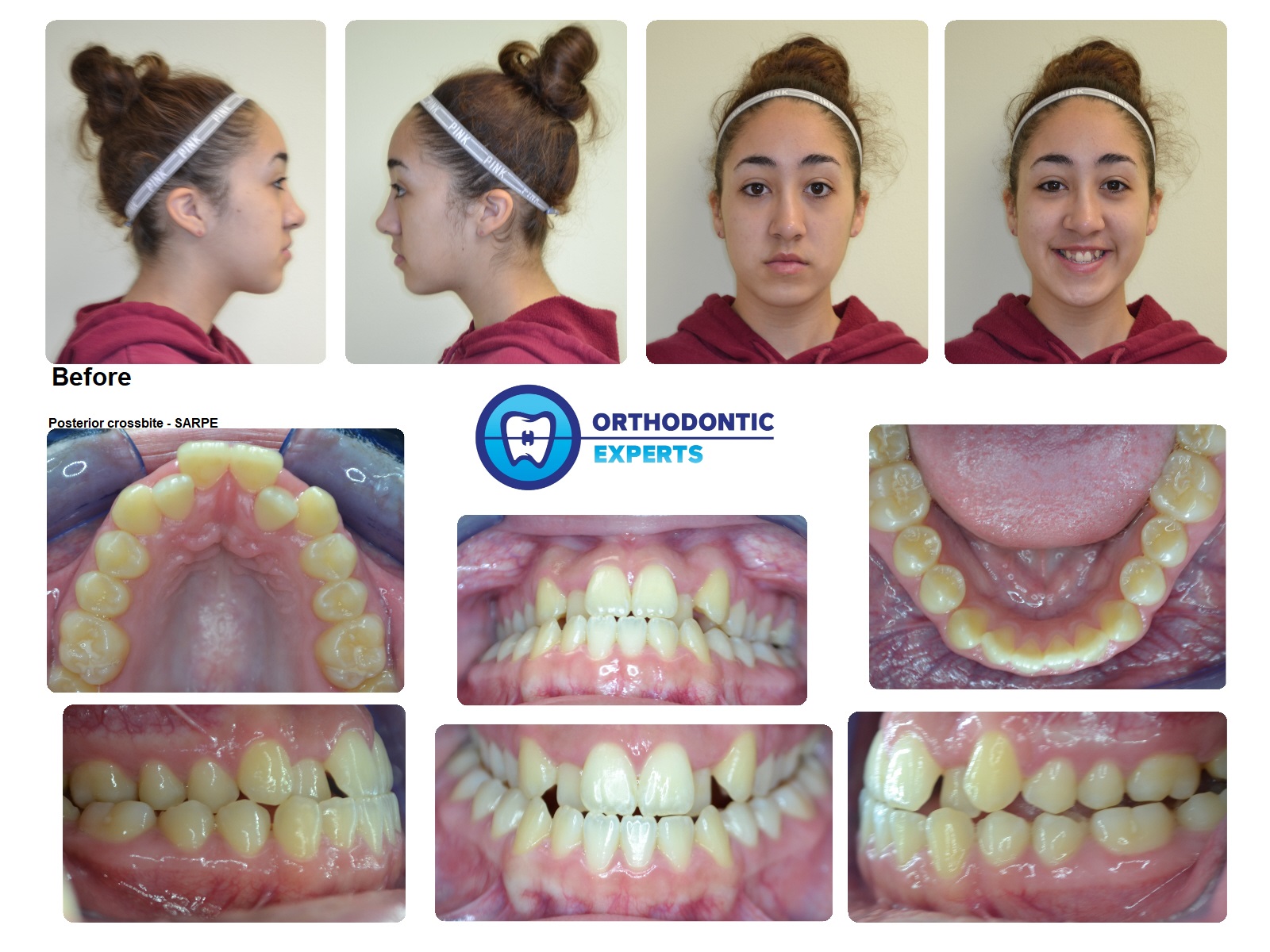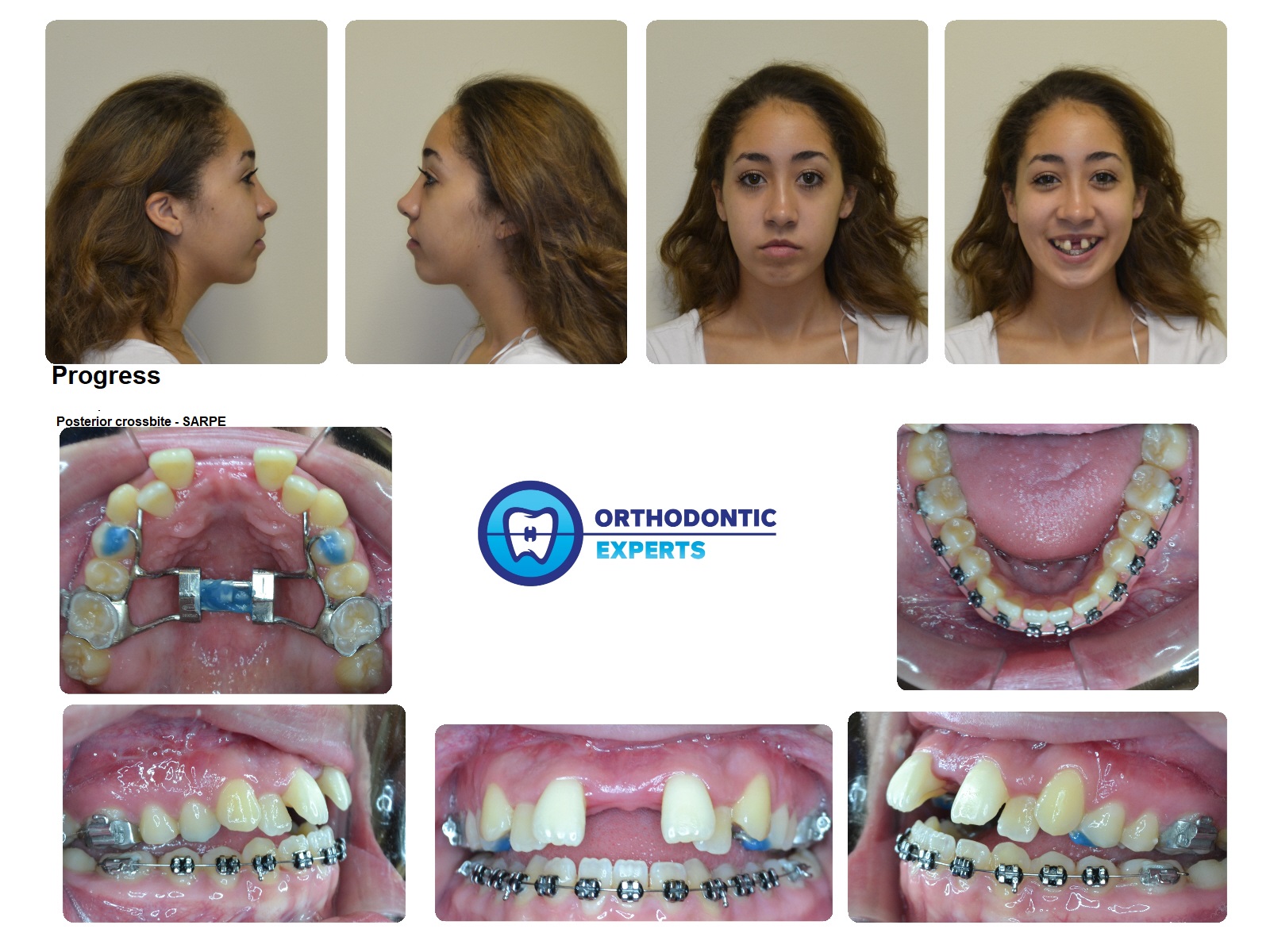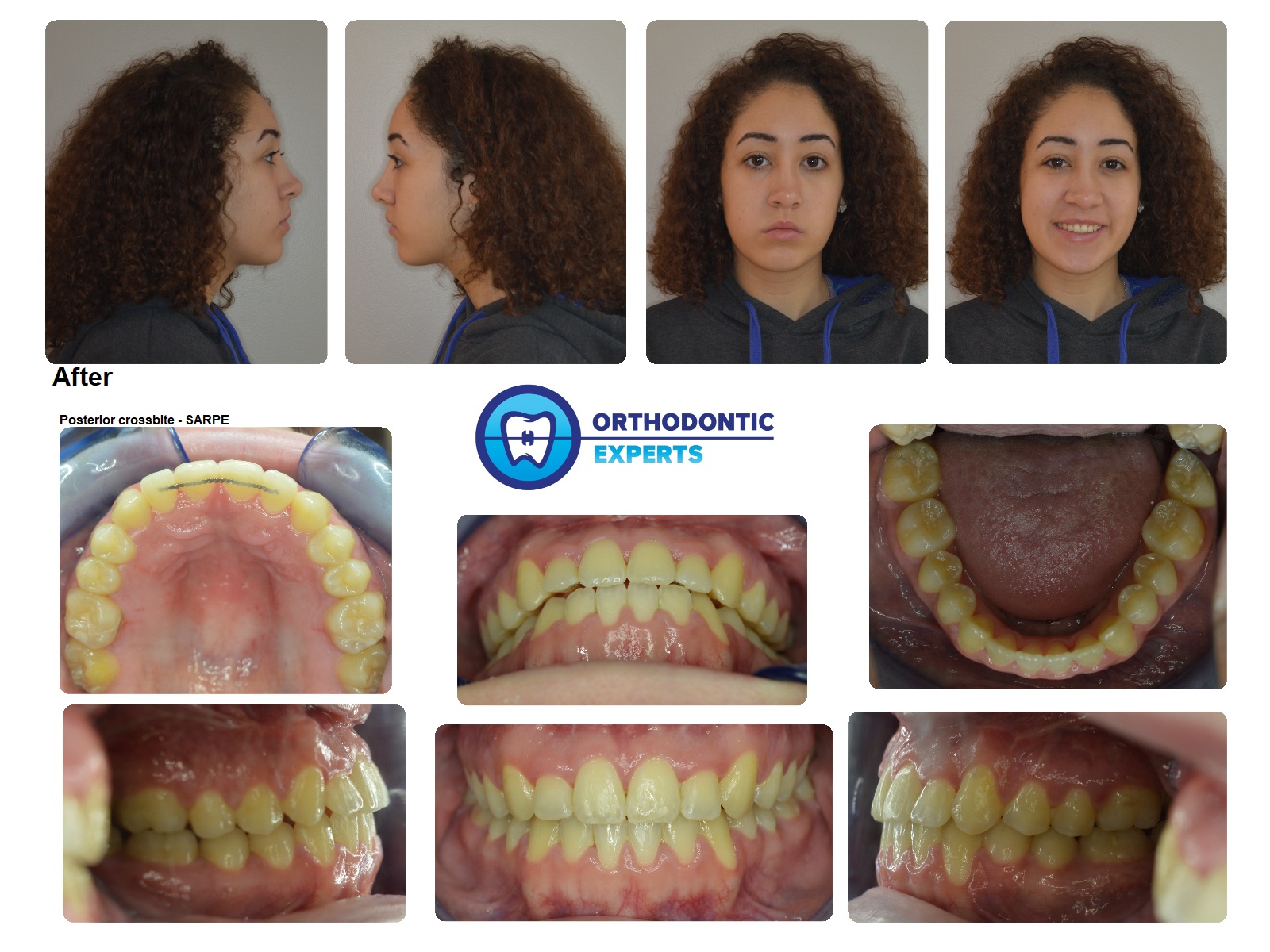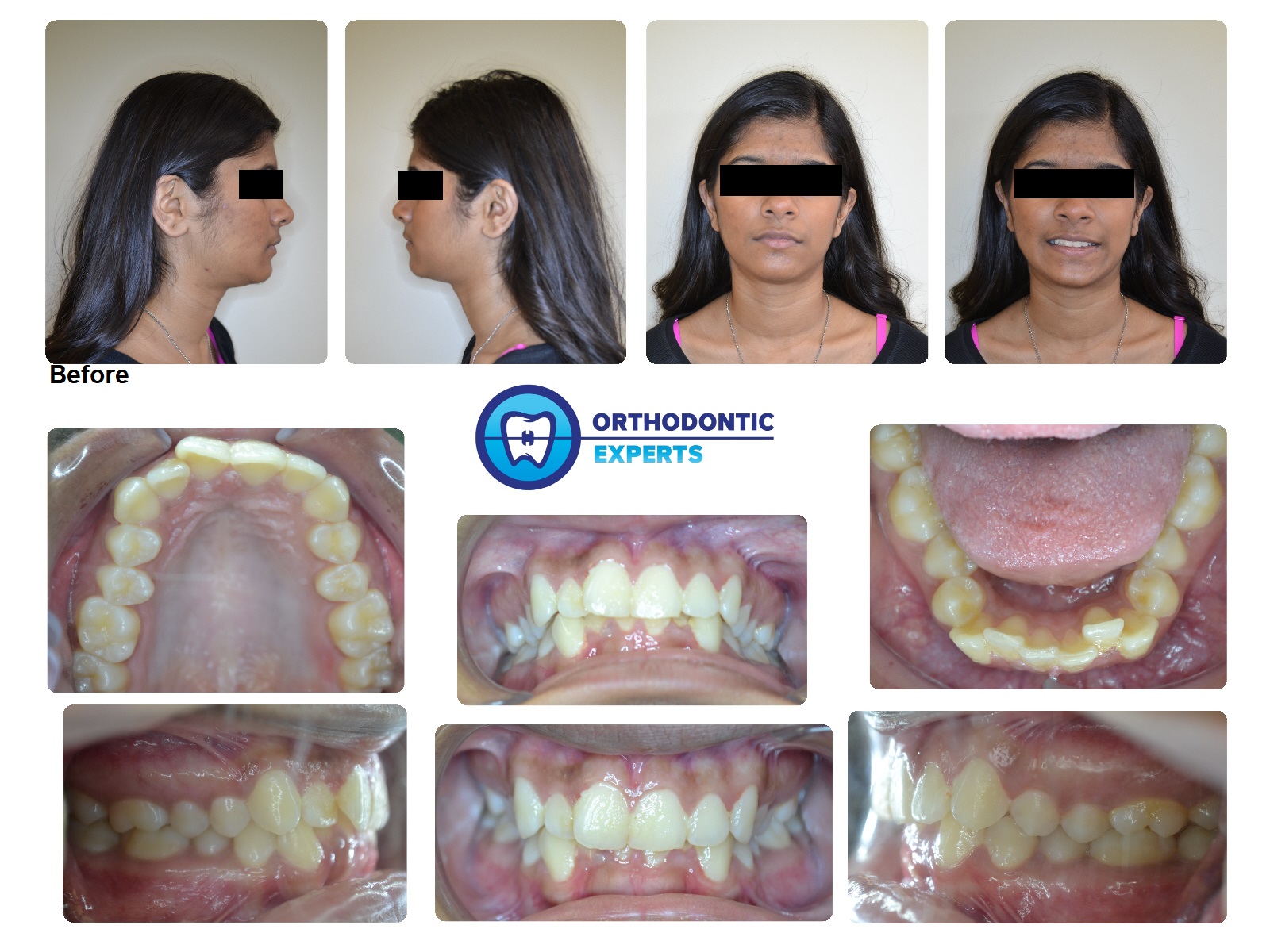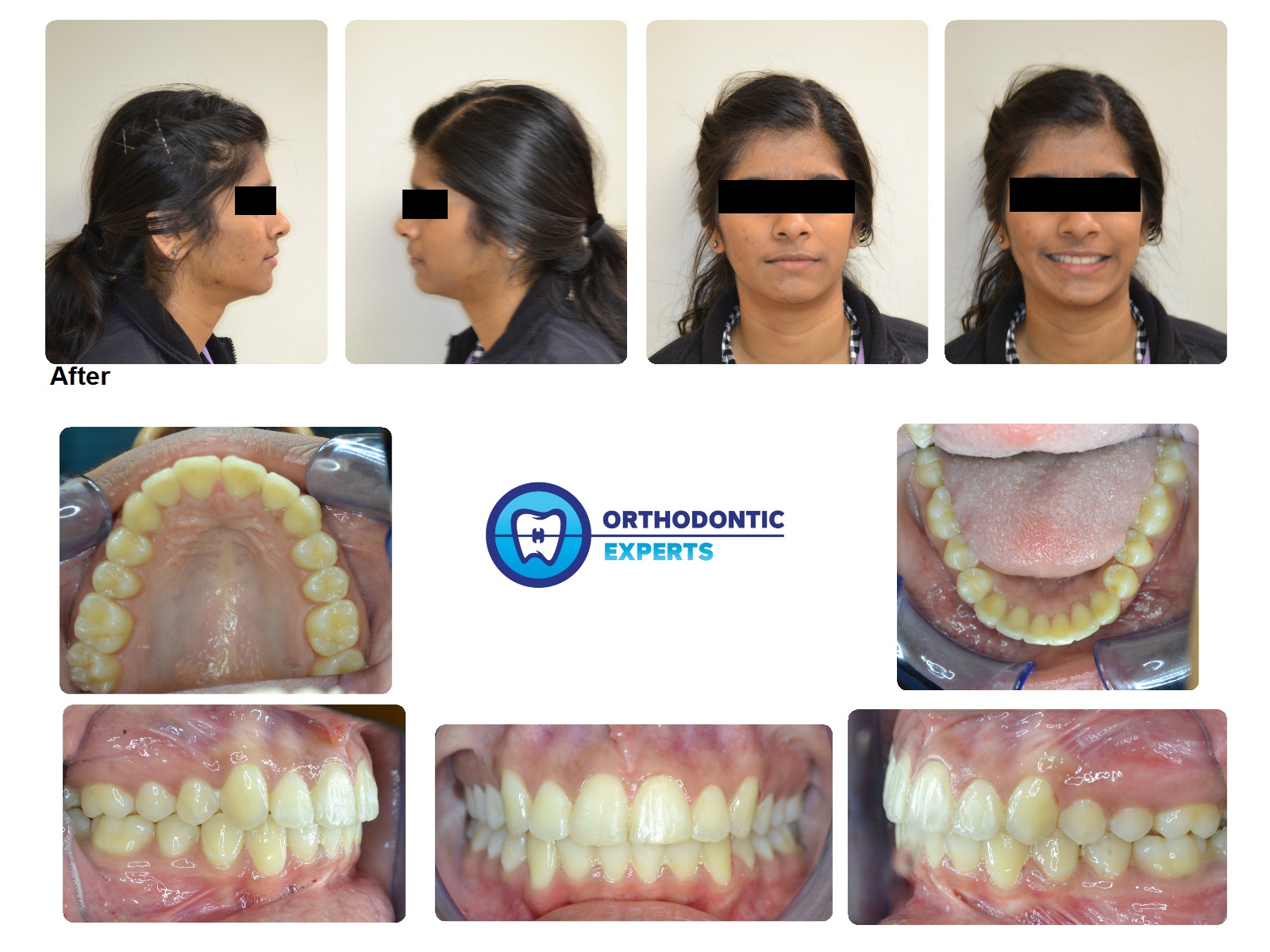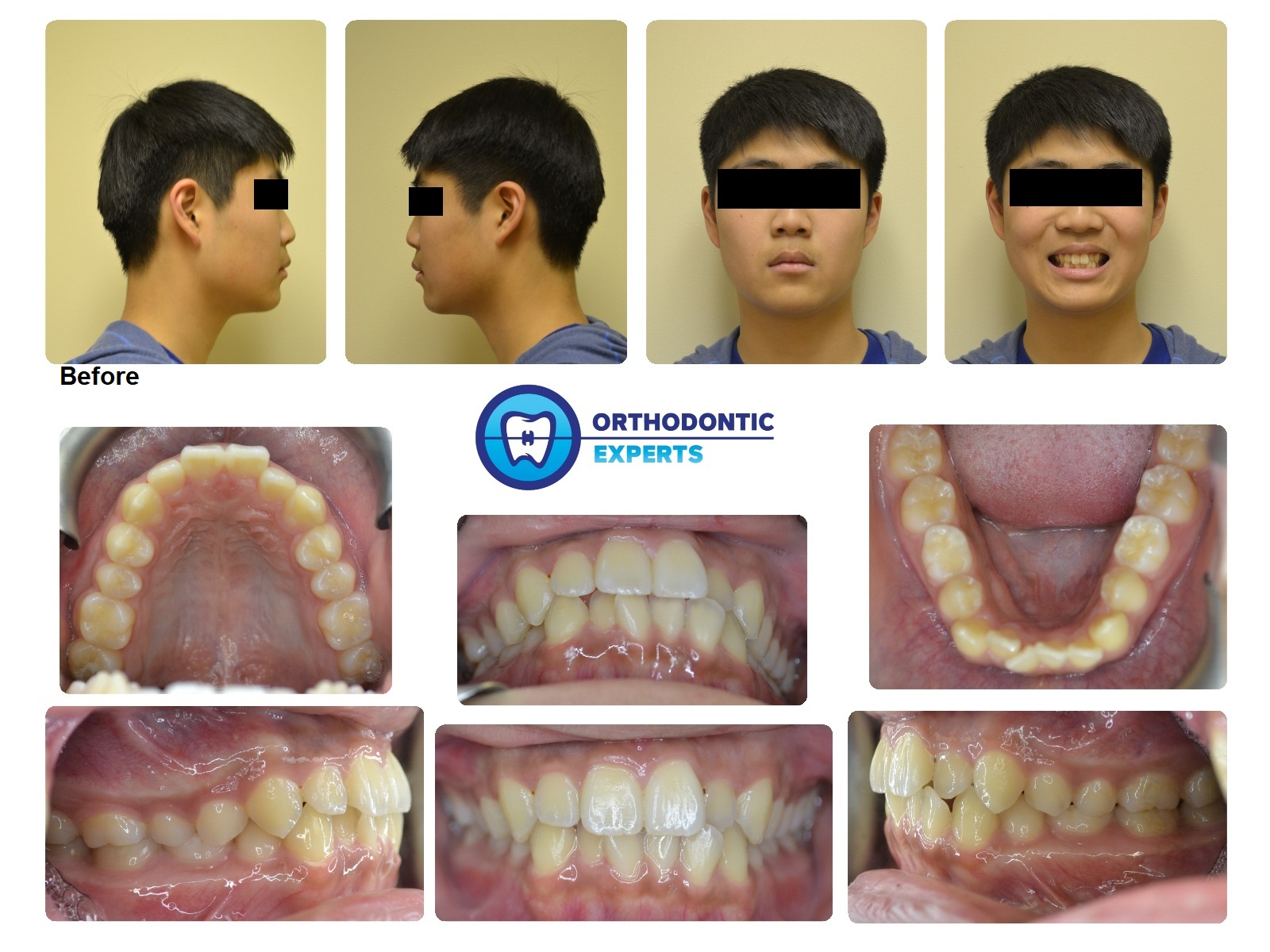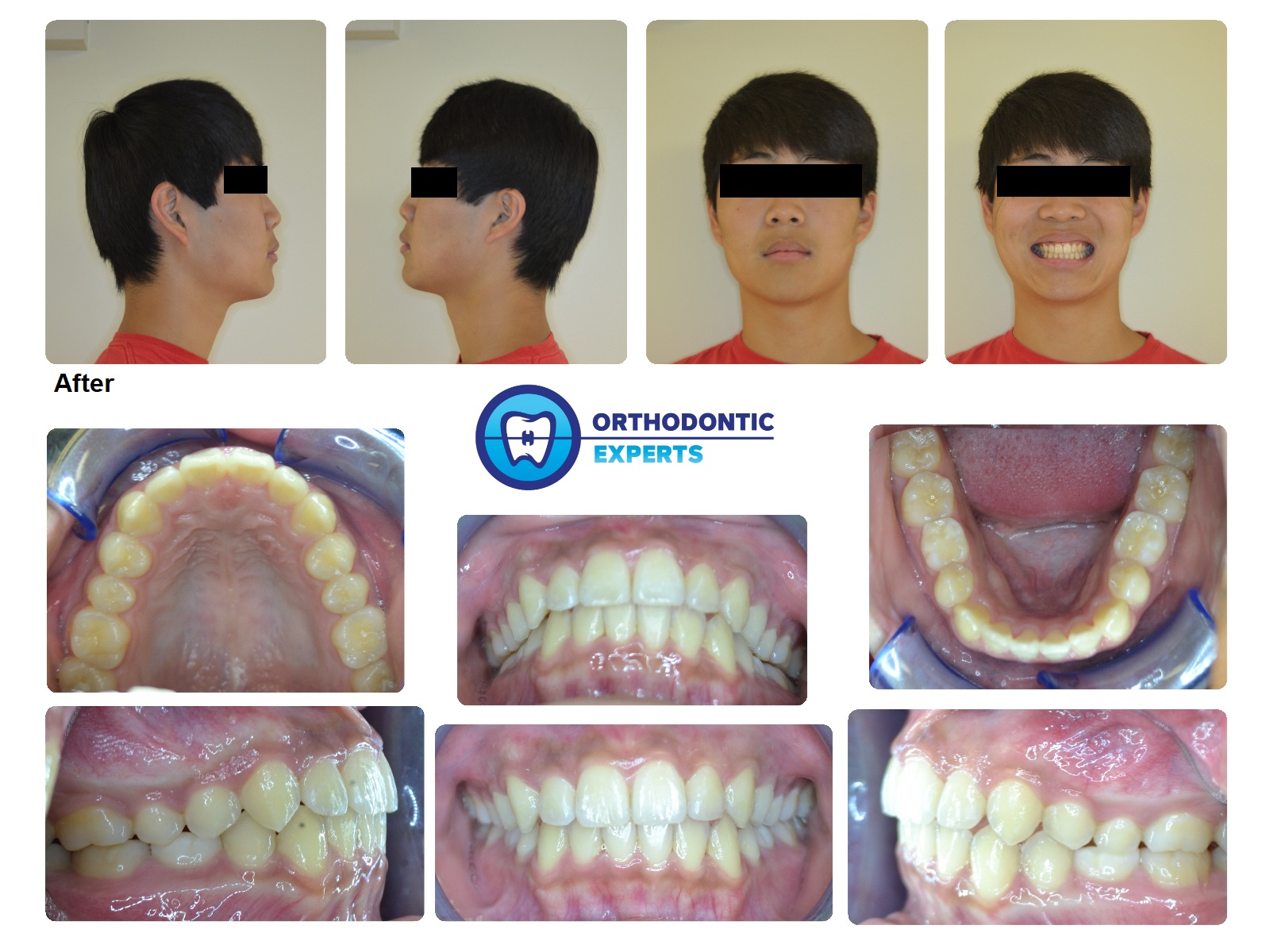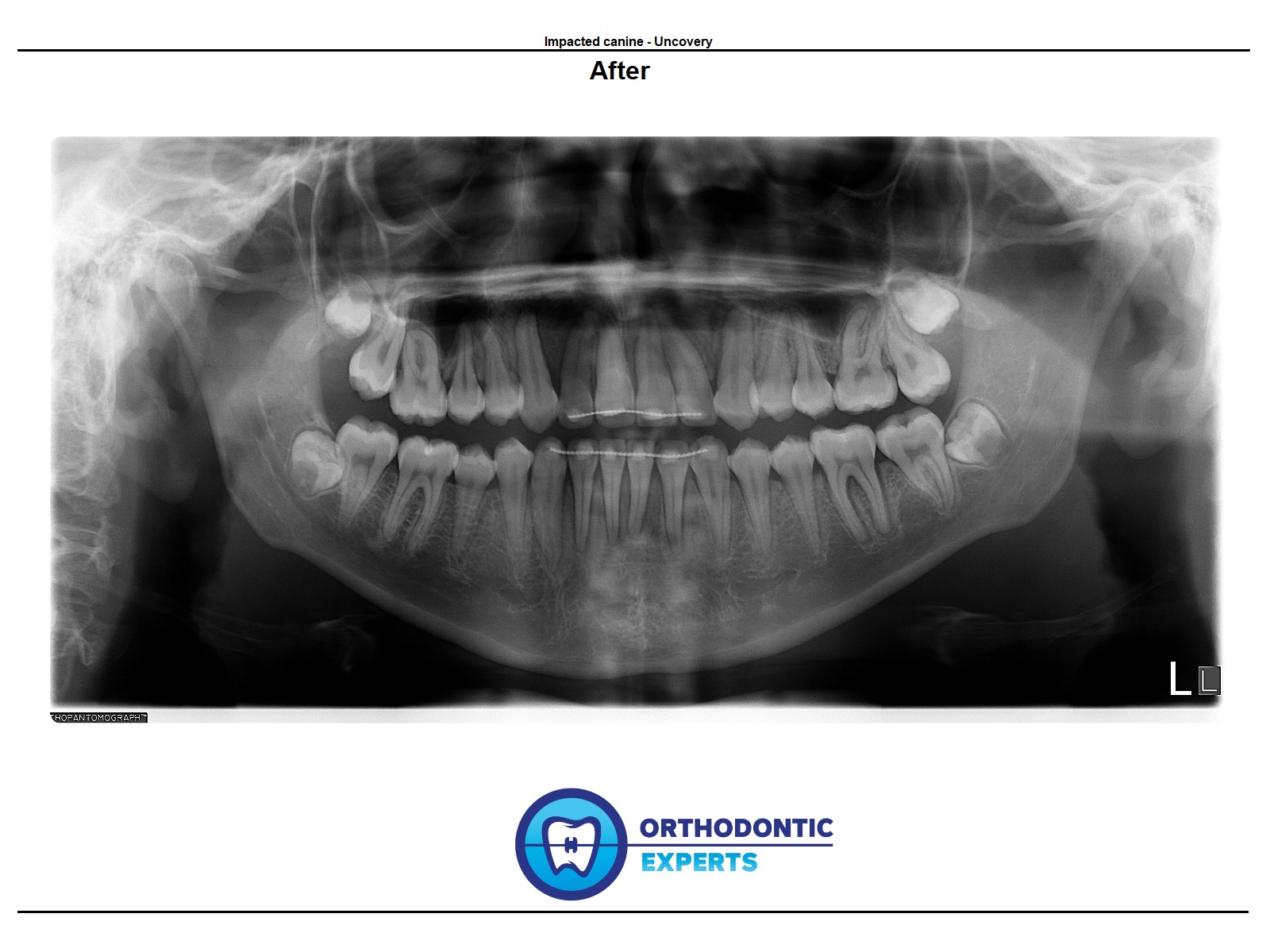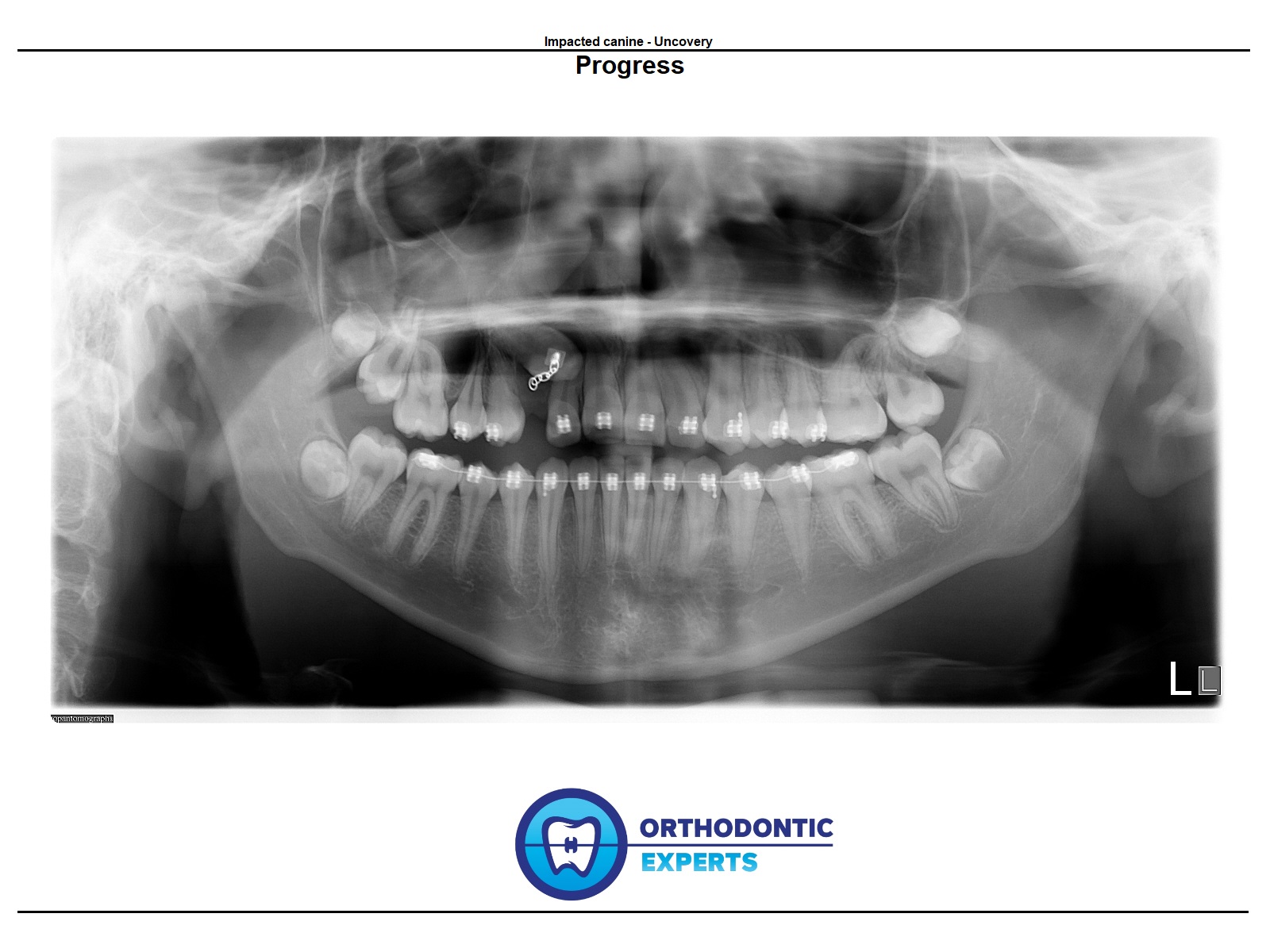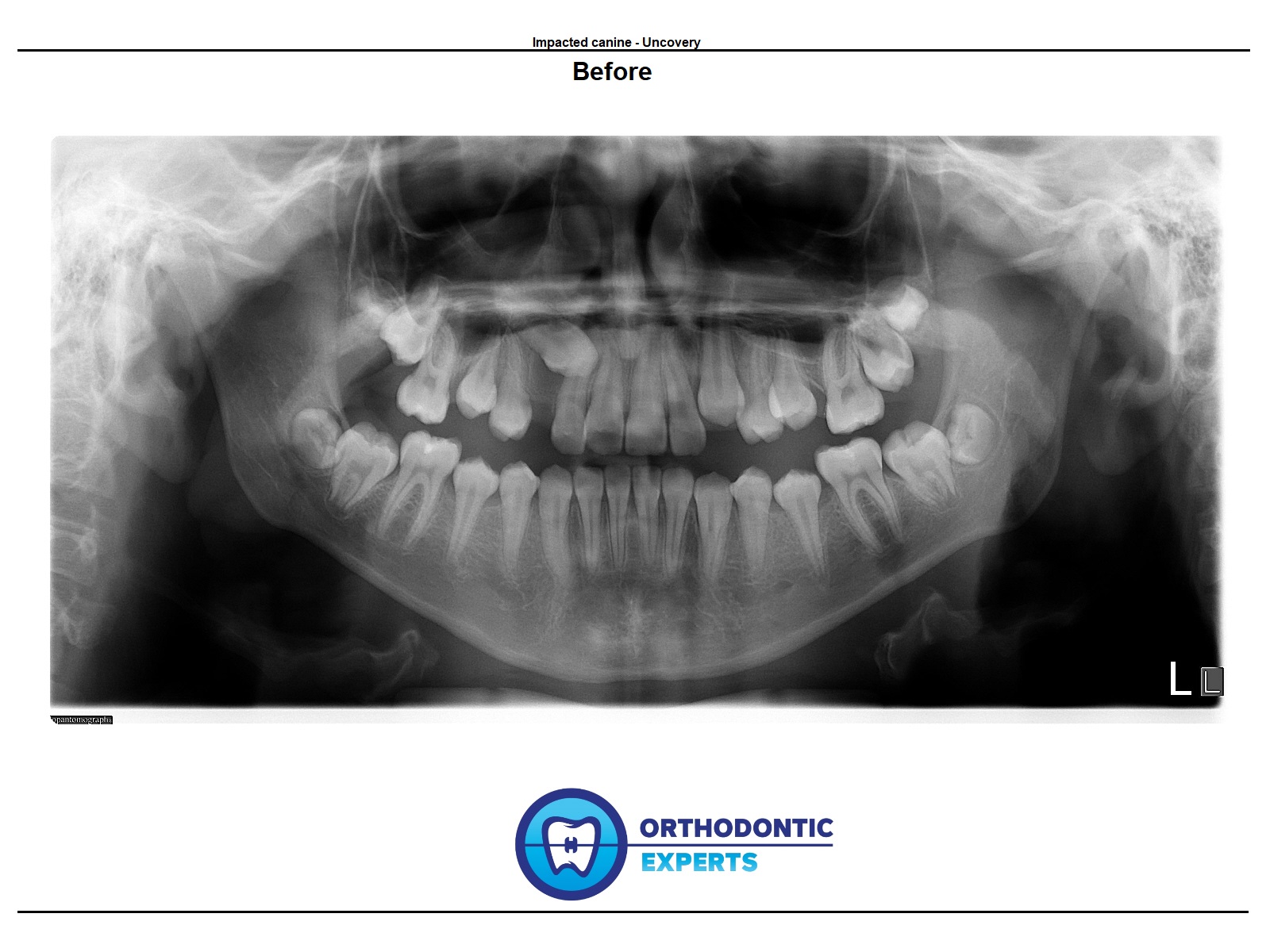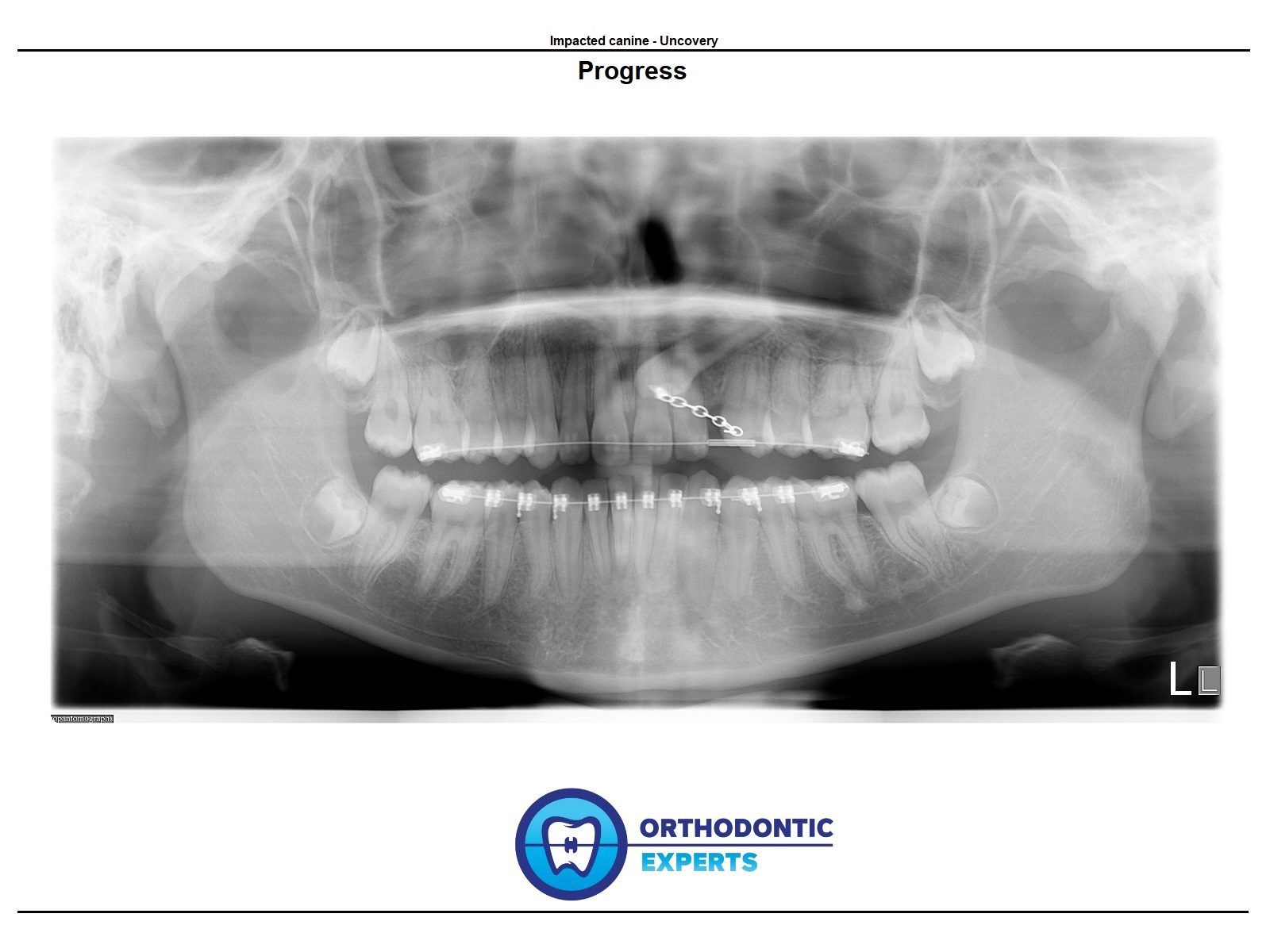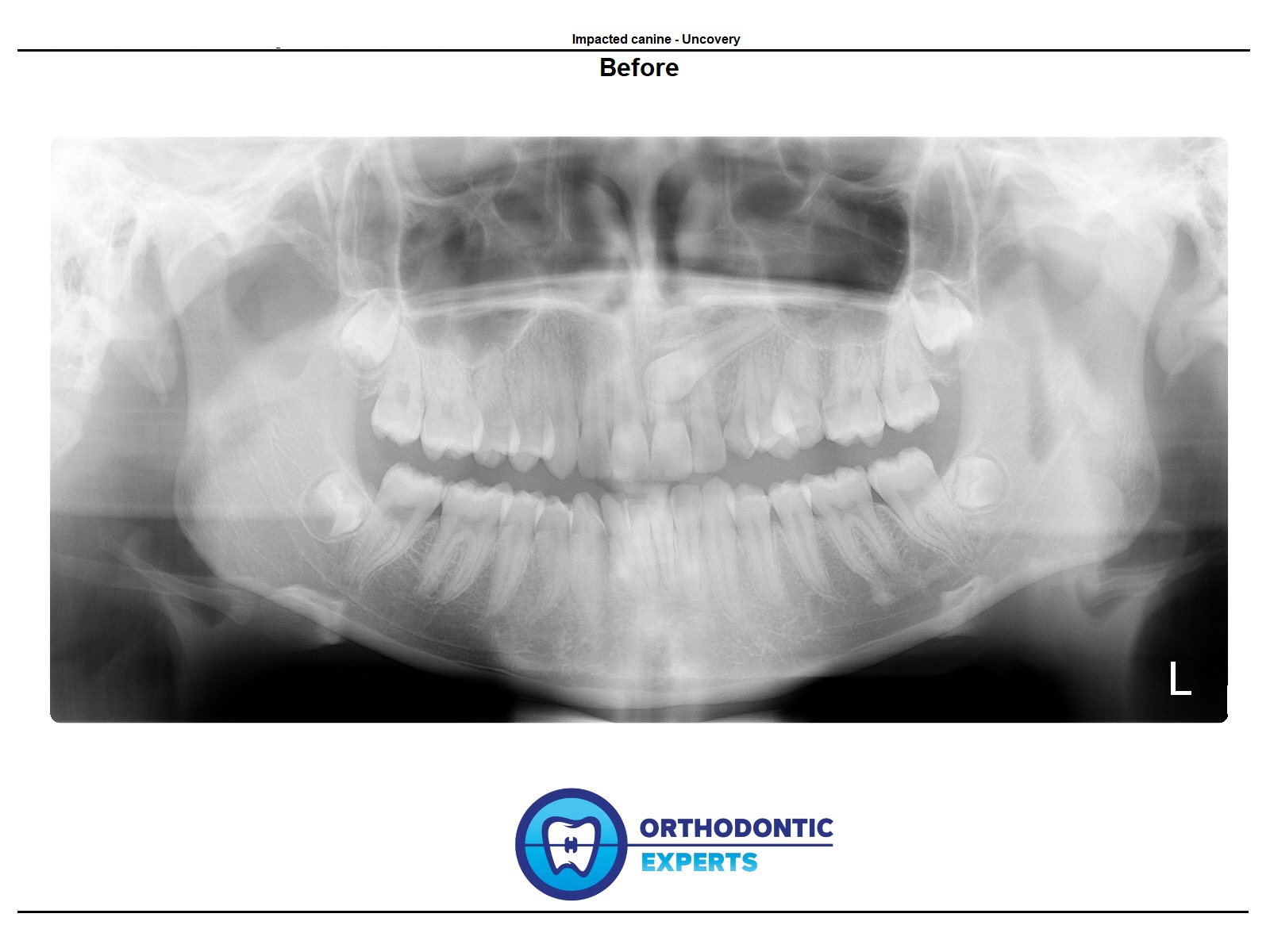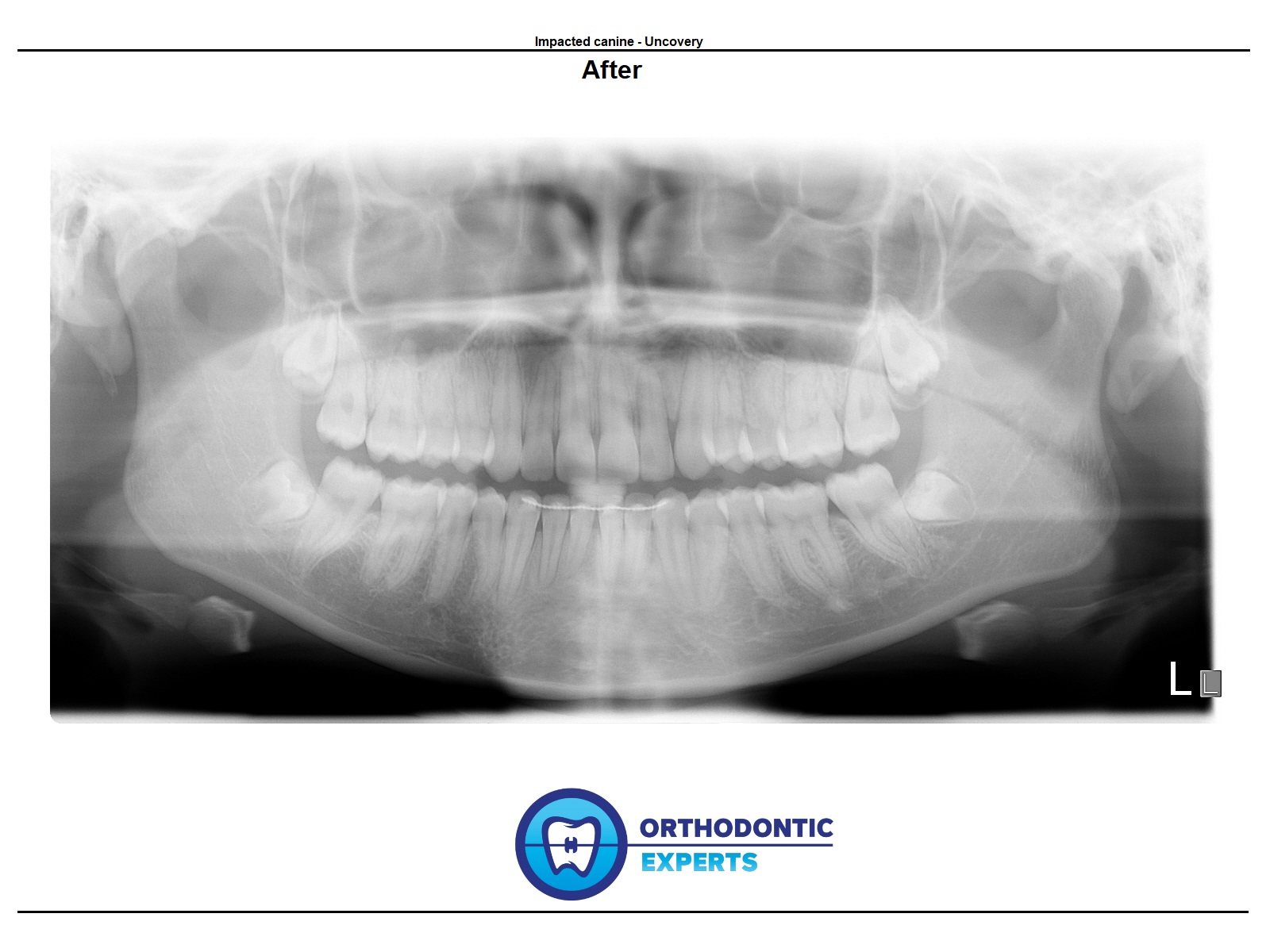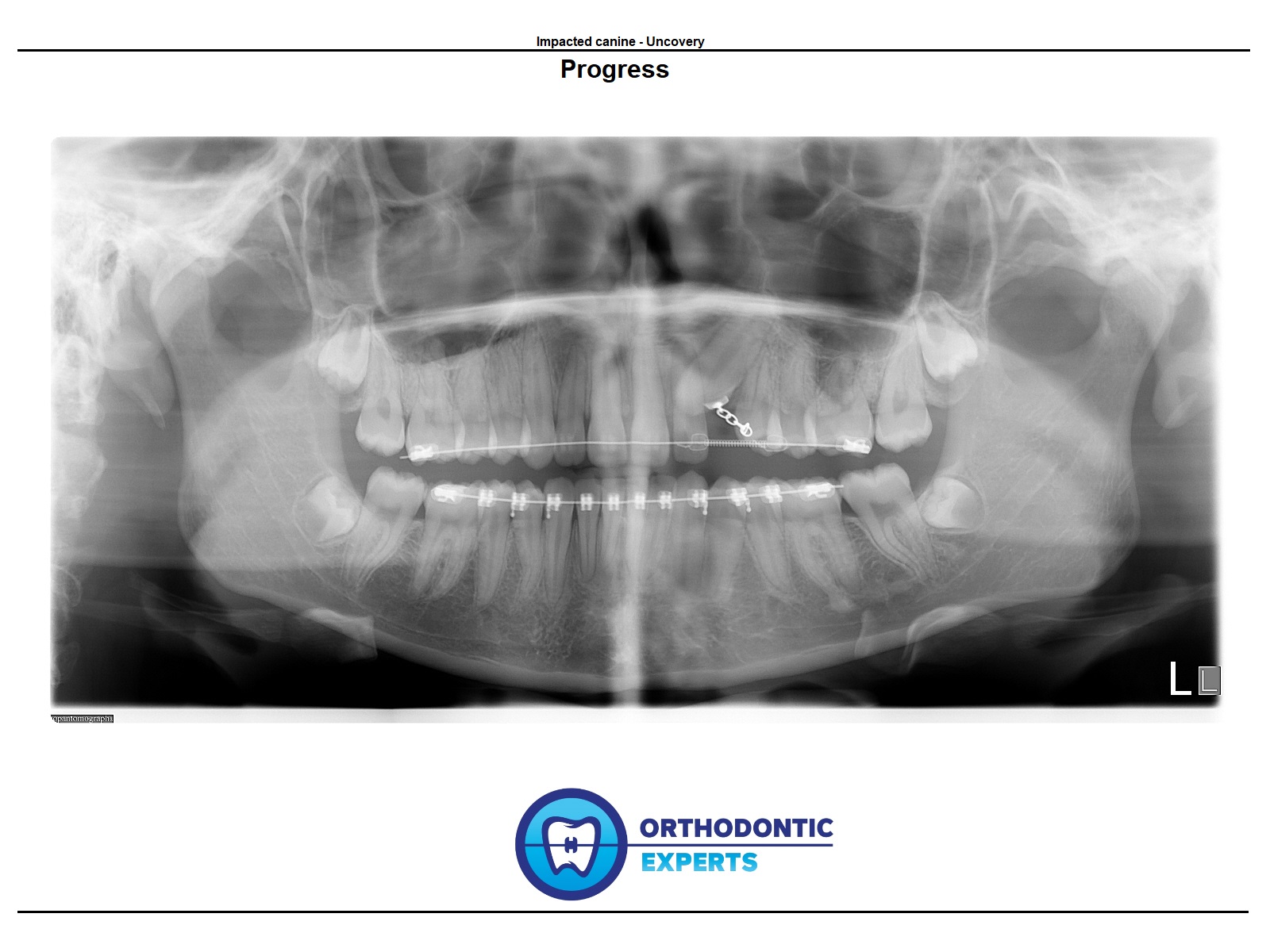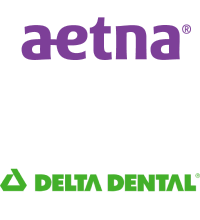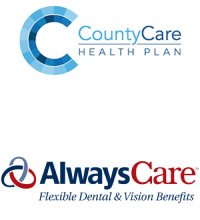Before and After smile Gallery
Quality Orthodontics You Can Trust!
At Orthodontic Experts, we make sure that our patients are our number one priority. We listen to everything you have to say because we feel each patient is unique and deserves a unique approach. One of the most important parts of orthodontic treatment is an effective diagnosis, because it directly translates to effective treatment. To get this done, we use state-of-the-art technology. We believe in giving our patients choices when it comes to orthodontic treatment because we believe that everyone’s lifestyle is different. Browse through our “before and after gallery” to learn about different kinds of orthodontic issues, orthodontic appliances, and orthodontic treatments.
- Anterior Crossbite
- Class II Malocclusion
- Class III Malocclusion
- Crowding
- Deep Overbite
- Open Bite
- Posterior Crossbite
- Clear Aligners
- Impacted Canine
Anterior Crossbite
In this series of before and after pictures, patients were diagnosed by our orthodontist of having an anterior crossbite. An anterior crossbite, also known as an underbite, occurs when any teeth of the upper jaw are located on the inside of the lower jaw.
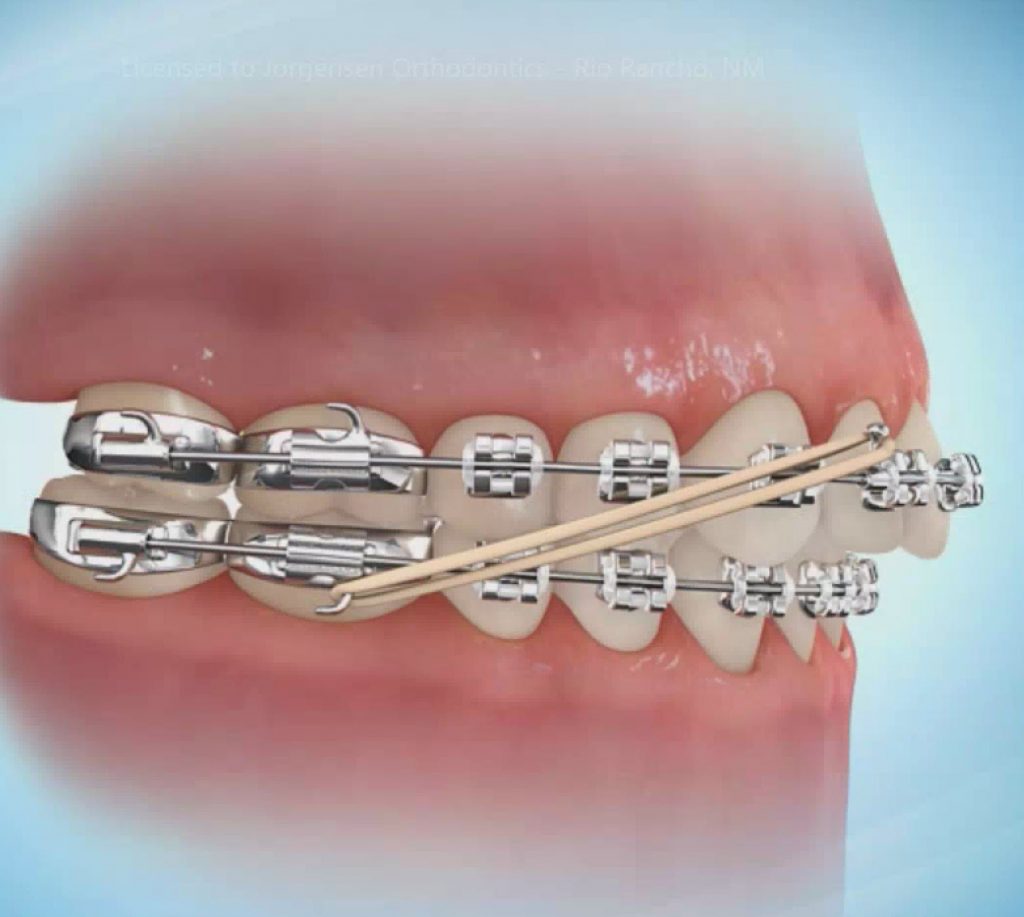
Anterior Crossbite Treated with Elastics
Elastics, also known as rubber bands, are used to apply pressure on the teeth to correct the bite.
Check out the before and after pictures of patients treated with Elastics to correct their anterior crossbite!
Class II Malocclusion
In this series of before and after pictures, patients were diagnosed by our orthodontist to have Class II Malocclusion. A malocclusion is a misalignment between the teeth of the two dental arches when they approach each other as the jaws close. Class II malocclusion is one of the most common orthodontic issues seen.
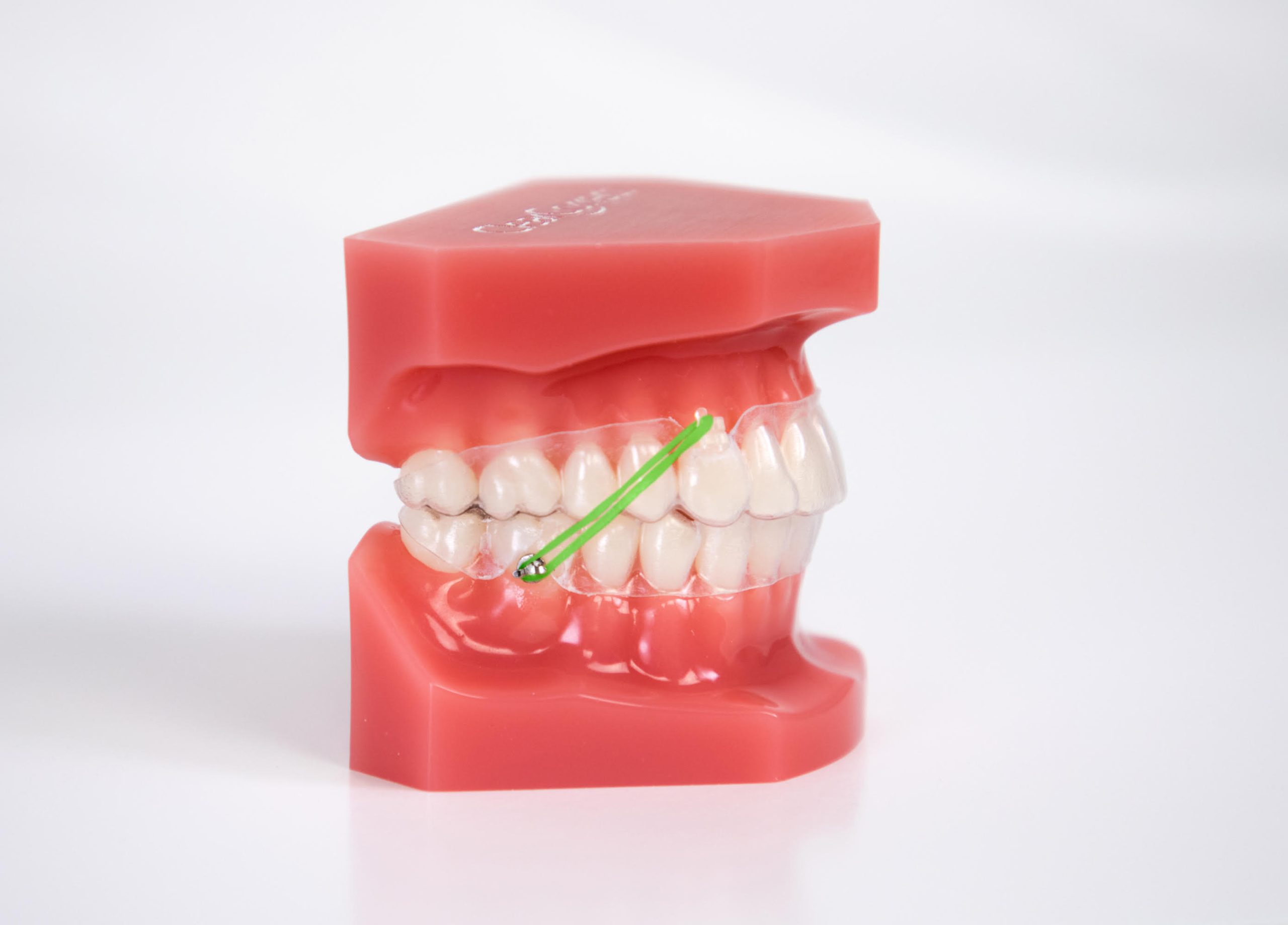
Class II Malocclusion Treated with Class II Elastics
Class II Elastics are rubber bands that go from the upper canine/vampire tooth to the lower molar (the last tooth with a bracket). Class II Elastics are used to treat Class II Malocclusion.
Check out the before and after pictures of patients treated with Class 2 Elastics!
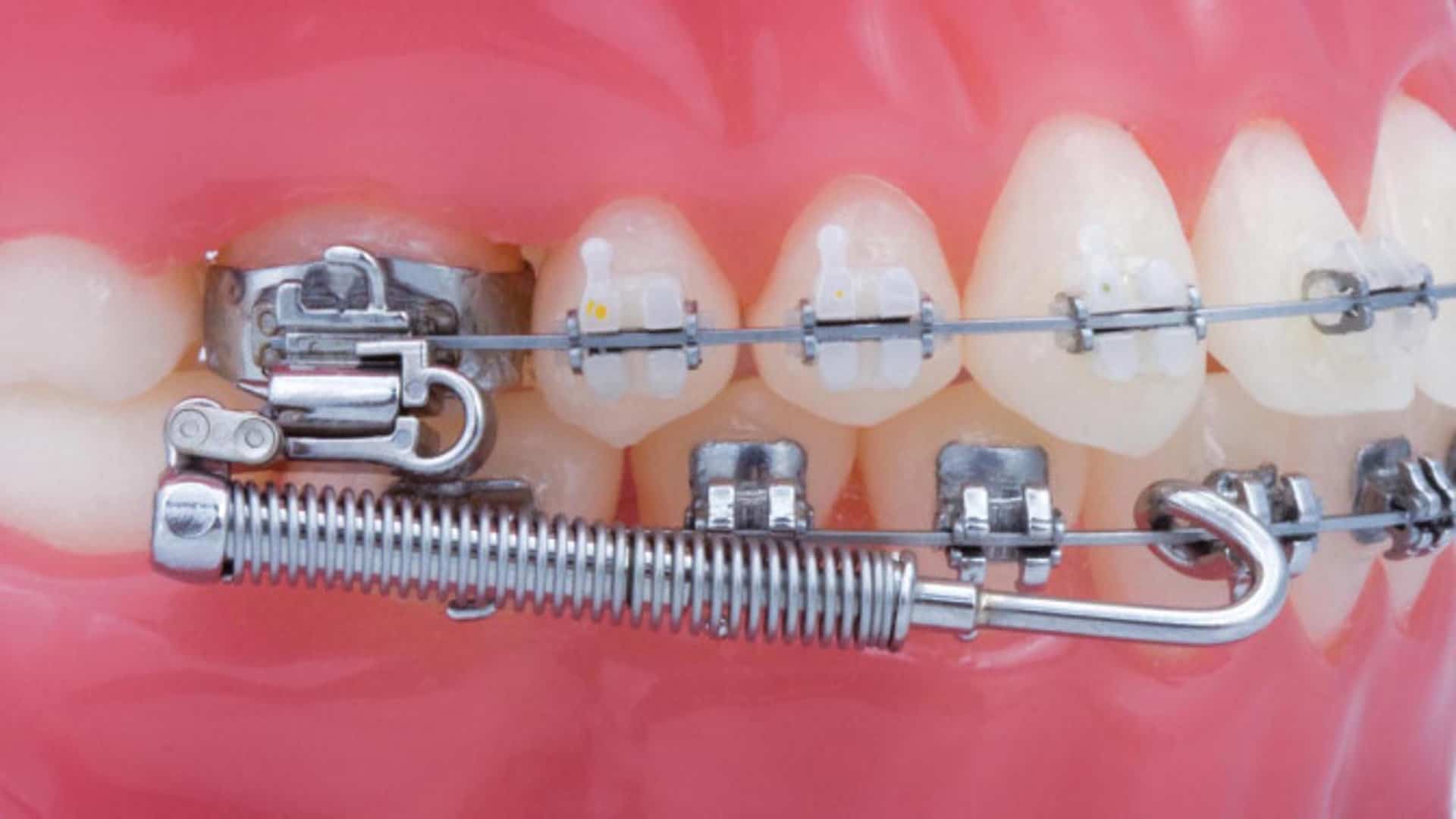
Class II Malocclusion Treated with Forsus
Forsus uses constant pressure to slowly move your jaws and teeth in order to properly align your smile. This orthodontic appliance is placed in one simple appointment and it begins correcting your bite immediately!
This appliance is a restraint device that will improve the alignment between the upper and lower teeth. It is an alternative method to headgear. Check out the before and after pictures of patients treated with Forsus!
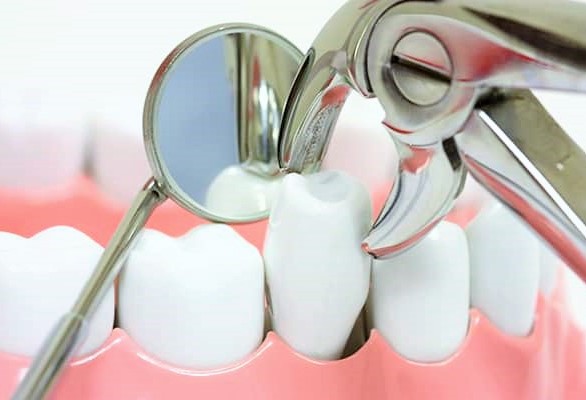
Class II Malocclusion Treated with a Tooth Extraction
Class II Malocclusion sometimes requires teeth extraction in order to ensure that the treatment balances the facial aesthetics with the function of your jaw and teeth.
Take a look at our before and after pictures of patients that needed teeth extractions!
Class III Malocclusion
In this series of before and after pictures, patients were diagnosed by our orthodontist to have Class III Malocclusion. A malocclusion is a misalignment between the teeth when the jaws are closed. Class III malocclusion, also known as an underbite, occurs when the lower jaw protrudes forward, causing the lower jaw and teeth to overlap the upper jaw and teeth.
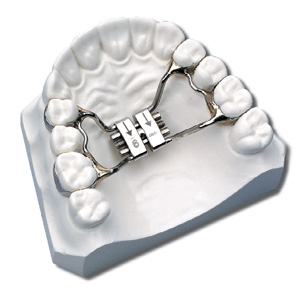
Class III Malocclusion Treated with Rapid Palatal Expander
An (RPE) is used to expand and make the upper jaw wider. For best results, it is suggested to be used before the palatal sutures fuse together, this process is usually done around the ages of 13-15 years.
Early expansion can prevent asymmetric growth and can decrease the incidence of canine impacts on the upper jaw.
Take a look at our before and after pictures of patients that needed a rapid palatal expander to achieve their beautiful smiles!
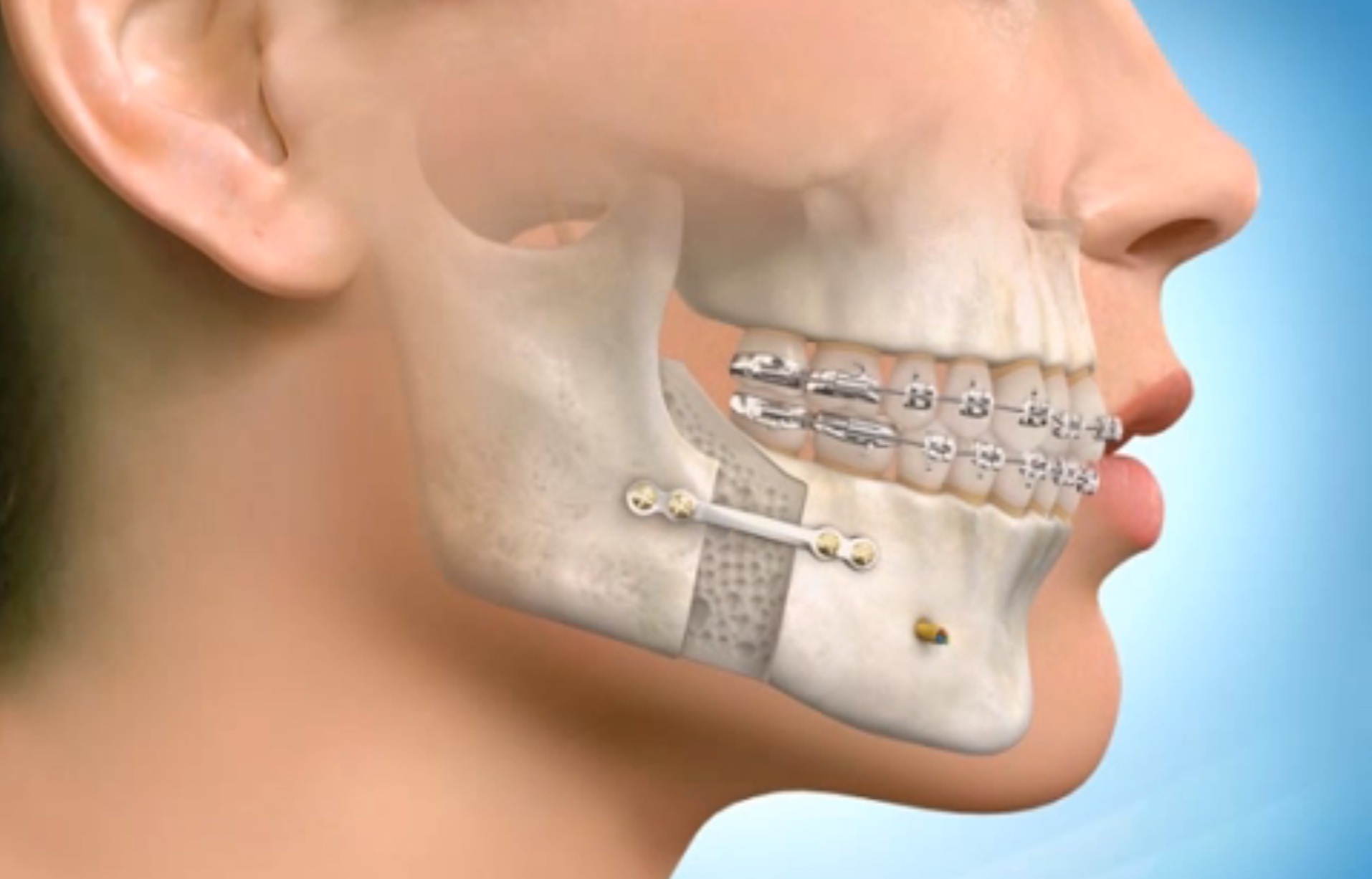
Class III Malocclusion Treated with Surgical Orthodontics
Surgical orthodontics, also known as orthognathic surgery, is a type of orthodontic treatment used to correct severe cases that include bad bites, jawbone abnormalities, and malocclusion.
Surgical orthodontic treatment is for non-growing adult patients with severely improper bites and those with facial aesthetic concerns.
Surgery is performed in the hospital by an oral surgeon, and can take several hours, depending on the amount and type of surgery needed.
Take a look at our before and after pictures of patients that needed surgical orthodontics!

Class III Malocclusion Treated with Class III Elastics
Class III Malocclusion is associated with misalignment of the teeth and jaw. Elastics are generally used to correct the bite and alignment of the jaw. Class III Elastics are placed from the lower canine, also known as the vampire tooth, (the first front bracket with a hook) to the upper last tooth with a bracket.
Take a look at our before and after pictures of patients that we used Class III Elastics for their Class III Malocclusion!
Crowding
In this series of before and after pictures, patients were diagnosed by our orthodontist to have Crowding. Crowding of teeth means that there is not enough space in the jaw for the teeth to develop properly. The teeth may be twisted or displaced. Generally, there is a misalignment of the tooth and jaw which causes crowding to occur, in turn, causing the teeth to be displaced.

Crowding Treated with a Tooth Extraction
Crowding sometimes requires teeth extraction in order to ensure that the treatment balances the facial aesthetics with the function of your jaw and teeth.
Take a look at our before and after pictures of patients that needed teeth extractions to create space in the jaw for proper teeth development!
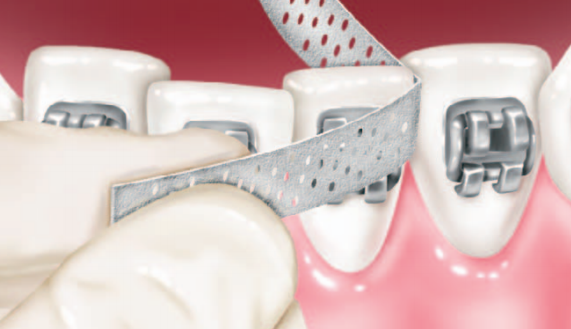
Crowding Treated with Interproximal Reduction (IPR)
Interproximal Reduction (IPR) involves reducing outer enamel surface between two teeth next to each other. This helps to create space in order for proper tooth alignment. This could also be called slenderizing, enamel reduction, and reproximation.
Take a look at our before and after pictures of patients that required IPR to create space in the jaw for proper teeth development!
Deep Overbite
In this series of before and after pictures, patients were diagnosed by our orthodontist to have a deep overbite. A Deep Overbite, also known as a closed bite, occurs when the upper front teeth excessively overlap the bottom front teeth.
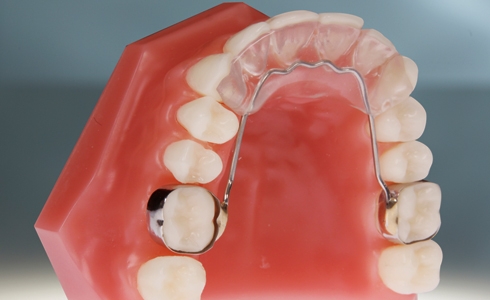
Crowding Treated with Bite Plate
A Bite Plate helps correct a deep overbite. It is an appliance that impacts the upper front teeth and helps your teeth move in their correct positions. This is placed on the upper teeth to build a barrier against the upper incisors. This lets the lower incisors open the bite, allowing for the teeth in the back to erupt properly.
Take a look at our before and after pictures of patients that used a bite plate to correct their overbite!
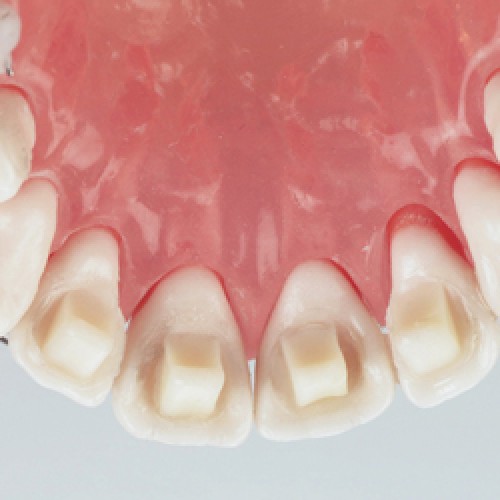
Deep Overbite Treated with Bite Ramps
Bite Ramps are small bumps that are added to the upper teeth to help deep overbites. This appliance is placed on the inside of the upper teeth making them invisible. Bite Ramps are used collaboratively with braces and elastics.
Take a look at our before and after pictures of patients that used bite ramps to accelerate the correction of their overbite!
Open Bite
In this series of before and after pictures, patients were diagnosed by our orthodontists to have an open bite. You can spot an open bite when you see a vertical space between the front upper and lower teeth when the patient fully bites down.

Open Bite Treated with Elastics
Elastics, also known as rubber bands, are used to apply pressure on the teeth to correct the bite.
Check out the before and after pictures of patients treated with Elastics to correct their open bite!

Open Bite Treated with a Tooth Extraction
Open Bites sometimes require teeth extractions in order to ensure that the treatment balances the facial aesthetics with the function of your jaw and teeth.
Check out the before and after pictures of patients treated with extractions to help correct their open bite!
Posterior Crossbite
In this series of before and after pictures, patients were diagnosed by our orthodontists to have a posterior crossbite. This means that the top back teeth bite down inside the bottom back teeth.

Posterior Crossbite Treated with Rapid Palatal Expander
An (RPE) is used to expand and make the upper jaw wider. This appliance helps to correct posterior crossbites. For the best results, it is suggested to use before the palatal sutures fuse together, which is usually around ages of 13-15 years.
Early expansion can prevent asymmetric growth due to posterior crossbites and can decrease the incidence of canine impacts on the upper jaw.
Check out the before and after pictures of patients treated with a rapid palatal expander to help correct their posterior crossbite!
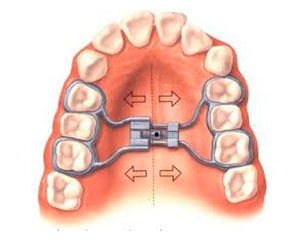
Posterior Crossbite Treated with Surgically Assisted Rapid Palatal Expander
A Surgically Assisted Rapid Palatal Expansion (SARPE), also known as Surgically Assisted Rapid Maxillary Expansion (SARME), is a technique used to expand the maxillary arch. This means that the orthodontist surgically helps to expand the patient’s upper jaw.
Check out the before and after pictures of patients treated with surgically assisted rapid palatal expansion to help correct their posterior crossbite!
Clear Aligners
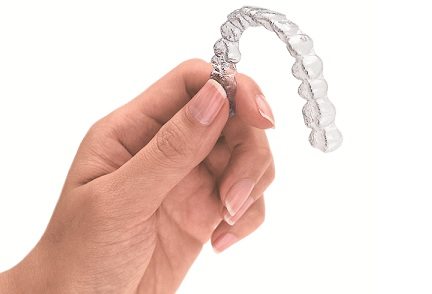
Clear Aligners are removable orthodontic appliances that use a series of plastic trays to straighten teeth over time. Each Clear Aligner tray makes small adjustments to the position of the tooth. You will receive a new Clear Aligner tray on a weekly or bi-weekly basis. Similar to Traditional Metal Braces, treatment with Clear Aligners can last anywhere from six to twenty-four months.
Uncovering of an Impacted Tooth
Tooth uncovering is also known as tooth exposure or uncovering of an impacted tooth. It is a surgical procedure intended to facilitate the emergence of a permanent tooth that has become impacted beneath the gingival line. In some instances, certain teeth may not erupt normally due to a lack of mandible space or improper positioning.
The treatment of impacted teeth via tooth exposure is crucial for a variety of reasons. In the first place, it prevents potential complications and dental issues that could result from the tooth remaining impacted. When a tooth is unable to erupt completely, it creates a cavity beneath the gum where food particles and bacteria can collect, thereby increasing the risk of painful infections and gum disease. Additionally, impacted teeth can exert pressure on neighboring teeth, causing them to migrate or misalign. This can disrupt the teeth’s natural alignment, potentially leading to crowding issues or impacting the bite as a whole.
By undergoing tooth uncovering, individuals can ensure that their impacted tooth erupts correctly and aligns with the surrounding teeth, thereby promoting improved oral function and dental health.


